11 Best Places to Visit in Yamaguchi
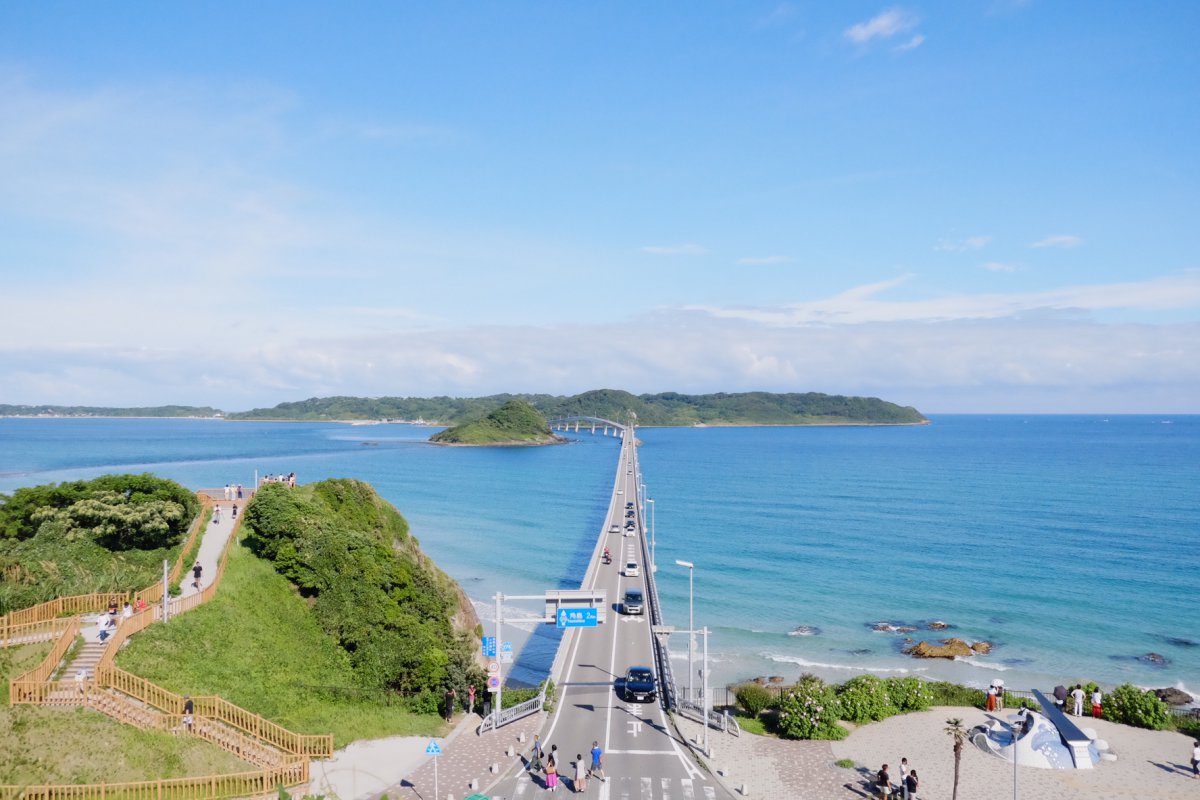
Yamaguchi is located in the Chugoku area . There are many historical sites and beautiful nature that tourists can enjoy. It takes time to move between tourist spots, so a 2 nights 3 days trip is the best if you want to enjoy Yamaguchi to the fullest. From the beautiful blue beach to the national treasure, here we introduce the best places to visit in Yamaguchi.

1. Tsunoshima Ohashi
2. motonosumi shrine, opening hours, 6. rurikoji, 7. kikugahama beach, 9. shokasonjuku, 10. kanmon straits, 11. hofu tenmangu, what to eat in yamaguchi, where to stay in yamaguchi, other articles you might like.
This 1,780 meters long bridge connects the mainland of Yamaguchi prefecture and Tsunoshima island. It was completed in 2000 and it takes about only 3 minutes to get to the other island by car but you can cross the bridge also by walking or bicycle. On the mainland side, there is a park beside the bridge, and you can take a perfect picture of the whole bridge from there. On another note, if you want to see the beautiful blue beach like this picture, we recommend you to go there in the morning!
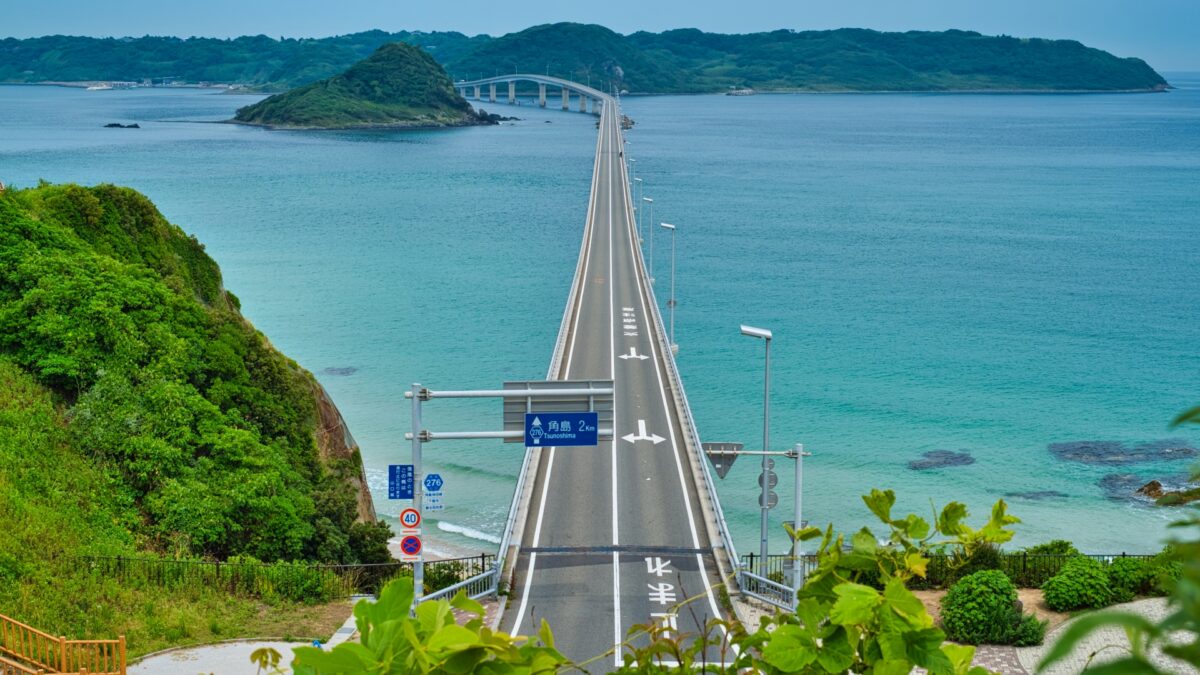
You might know the thousands of torii gates at Fushimi Inari in Kyoto, but that is not the only place where you can see many torii in vivid red color. What’s even more special is the location here, the 123 torii gates from Motonosumi Shrine make a beautiful contrast with the blue ocean. This shrine was built in 1955 based on the legend that a white fox appeared by the pillow when the local fisherman was sleeping and told him to build the shrine on the cliffs. Fox is believed to be the messenger of the god and that is also why some fox motifs and statues are placed at the shrine. You’ll find an offering box, where visitors toss a coin when they pray, on the torii gate and that’s 6 meters above the ground! It is said if you can successfully throw a coin into the box, your wish is granted.
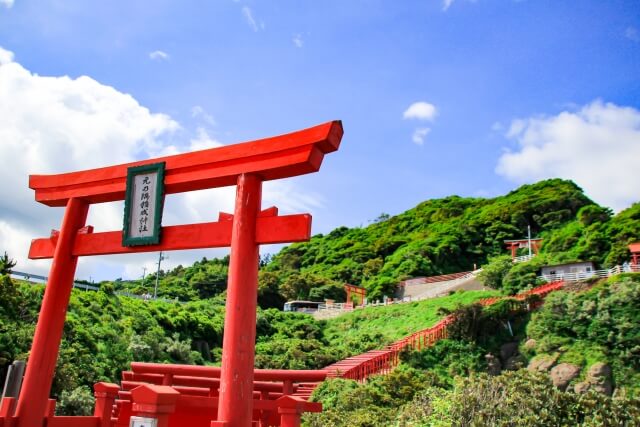
3. Kintai Bridge
Kintai Bridge was originally built in 1673, it is one of the best wooden bridges preserved in Japan. There were a couple of times that the bridge was washed away by a typhoon and people had to rebuild every time. After some rebuilding using a traditional method, today you can see the beautiful traditional style bridge. Every season you can enjoy it in a different way – cherry blossoms along the river in spring, fireworks in summer, colorful foliage in autumn and snow in winter, every season has its attraction!
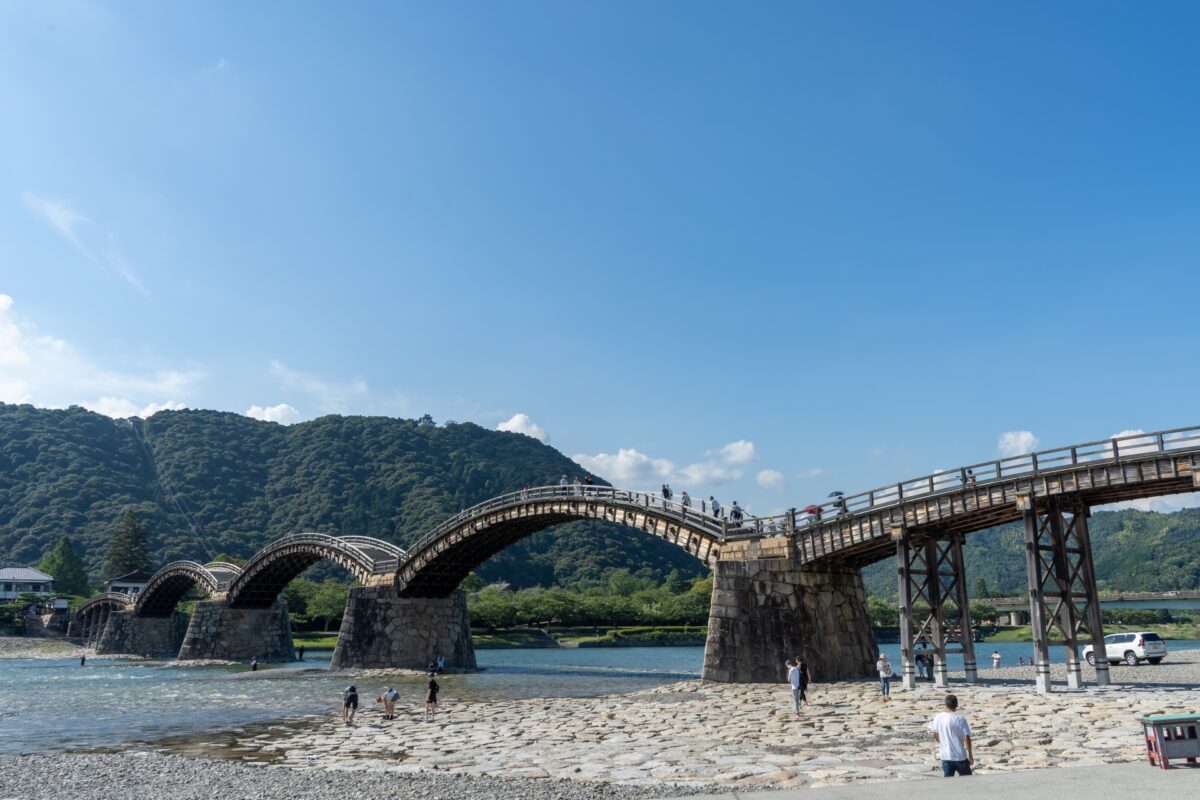
¥310 (Adult), ¥150 (Elementary school students)
4. Akiyoshido Cave
Akiyoshido cave is the second biggest limestone cave in Japan. The temperature inside of the cave stays 17℃ for all year around, so you can enjoy the cool air in summer and get warm in winter. It takes about 90 minutes to see the whole thing.
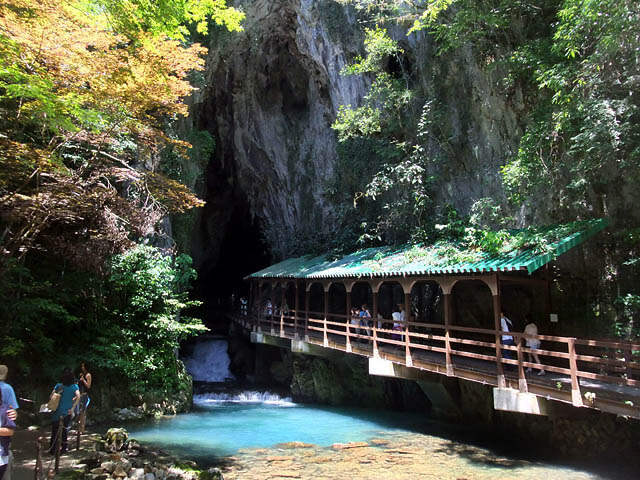
8:30 am – 6:30 pm (Mar. – Nov.), 8:30 am – 5:30 pm (Dec. – Feb.) Admission : ¥1,300 (Adult), ¥1,050 (Junior high school students), ¥700 (Elementary school students)
5. Mori Garden
The Mori family was the warlord who ruled in the Chugoku region in the Sengoku period (1467-1615). The main house of the Mori family is now open to the public as a museum and garden and attracts many tourists. The house was built in the Meiji to Taisho period , and you can enjoy the mixture of modern and traditional style of architecture. The huge Japanese garden includes a big pond and is surrounded by mountains that provide visitors a gorgeous view.

9 am – 5 pm (Last entrance 4:30) Admission fee : ¥400 (Adult), ¥200 (Children)
Rurikoji is a symbolic temple of Yamaguchi prefecture, and its five storied pagoda is registered as a national treasure in Japan. This temple was built in 1442 by Ouchi Moriharu to mourn the death of his brother who was defeated in a battle. It’s surrounded by cherry blossom trees in spring and by hydrangea in early summer. Each season adds the stunning view with the pagoda such as autumn foliage in fall and snowfalls in winter. It’s also popular to visit there at night when the pagoda is lit up. The light up lasts until 10pm.
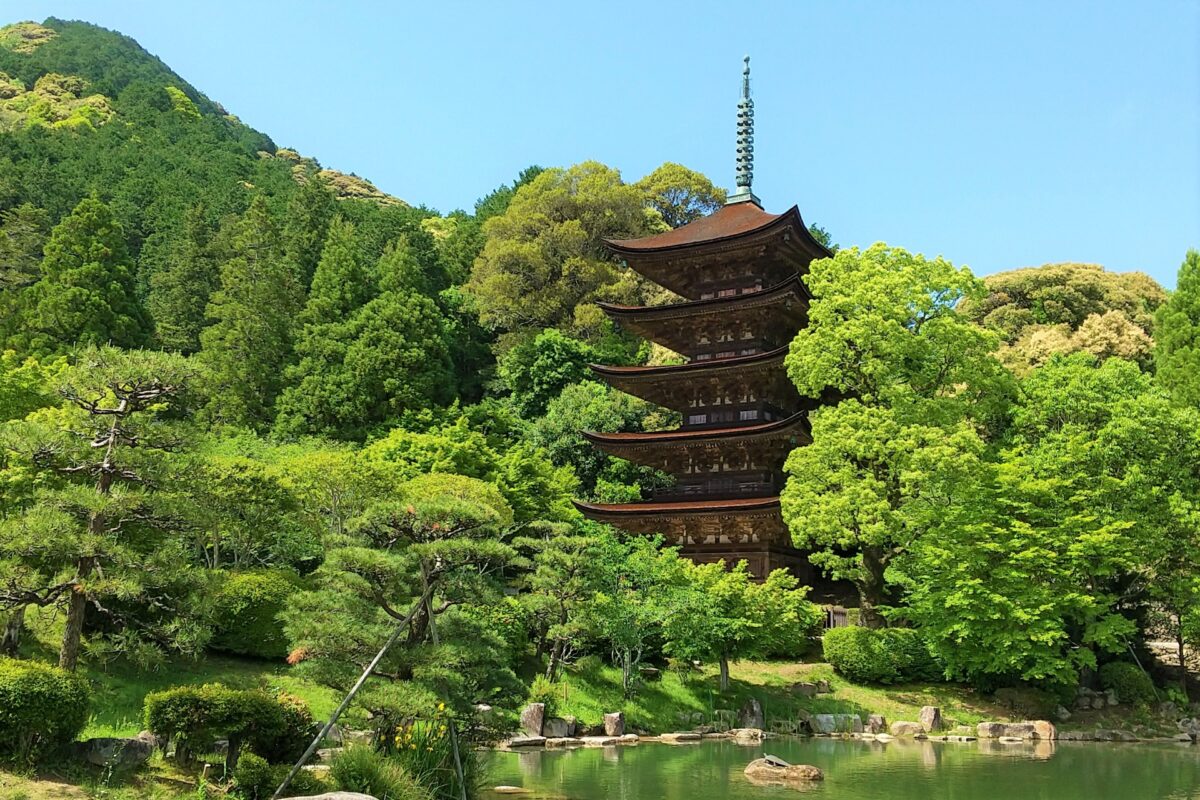
From the white sandy Kikugahama Beach, you can see Mt. Shizuki and some islands. With the clear blue water and breathtaking views combined, it is a very popular spot especially during summer. Also, the sunset view is outstanding! Staying there until the sun sets is a perfect way to end the day.
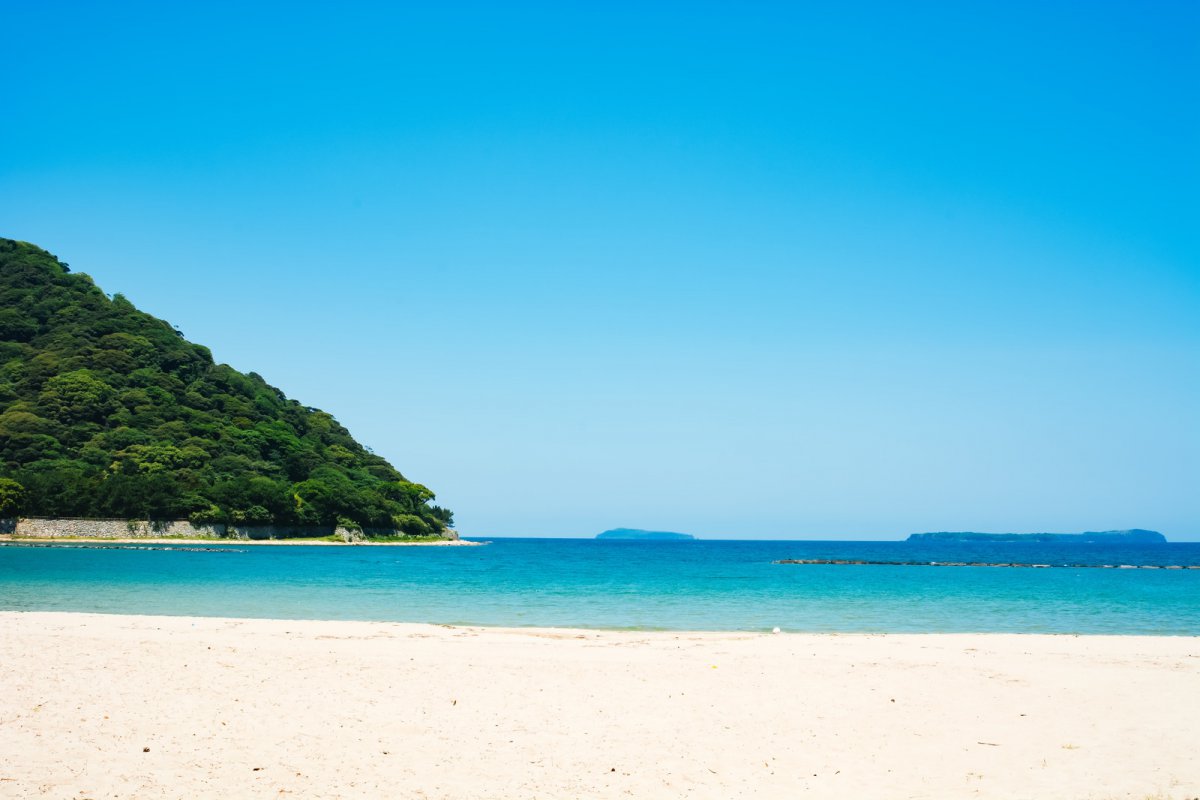
This island is a part of the Kita Nagato Kaigan Quasi-National Park, which is protected for its natural beauty. You will see many unique shaped rocks that were created by volcanic activity 90 millions years ago. If you want to enjoy the beauty of nature, take a boat circling around the island. Some boats offer thrilling experiences going into the caves and sailing between the dynamic cliffs, and if you are lucky, you might see dolphins swimming in the area!
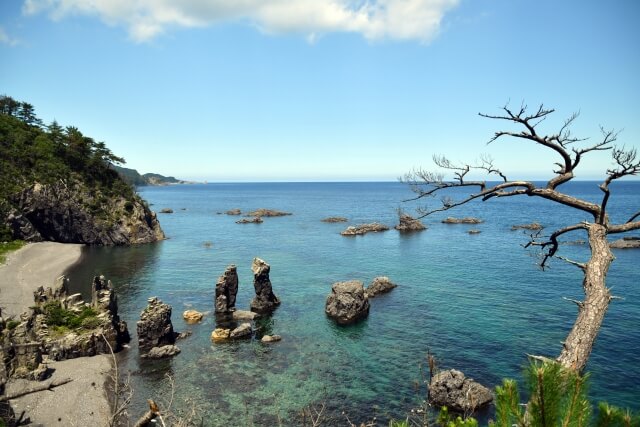
This small academy originally started in 1842 and is known as the place where the famous intellectual Yoshida Shoin was devoted to teach people regardless of the social class they belong to. You can’t go inside the building but you can see the statue and the picture of Yoshida Shoin at the old lecture room from the outside. There are many small historical sites around this area that visitors who like the history of Japan, especially the end of the Edo period, would very much enjoy!
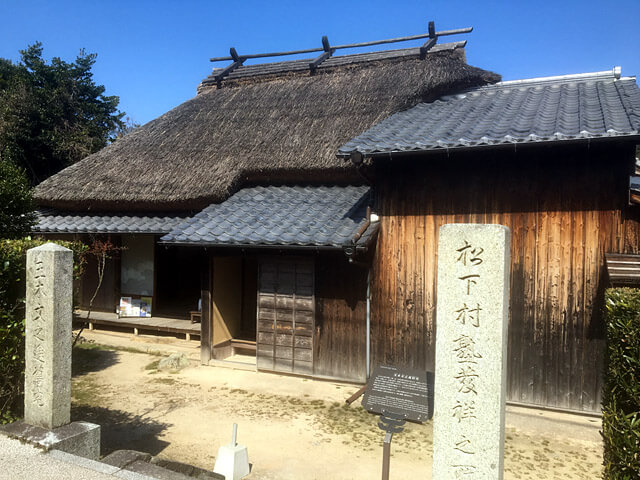
Kanmon Straits connect the mainland and Kyushu , and you can cross it by car, train or ferry, but you can also walk underwater! There is an underwater tunnel where you can cross the prefecture by foot. A prefectural border is uniquely marked on the way. It takes 15 minutes to cross the tunnel, and after you reach the end, you can get a memorial certificate for crossing the straits. After you cross the straits, enjoy some historical sites, shrines and parks around this area.
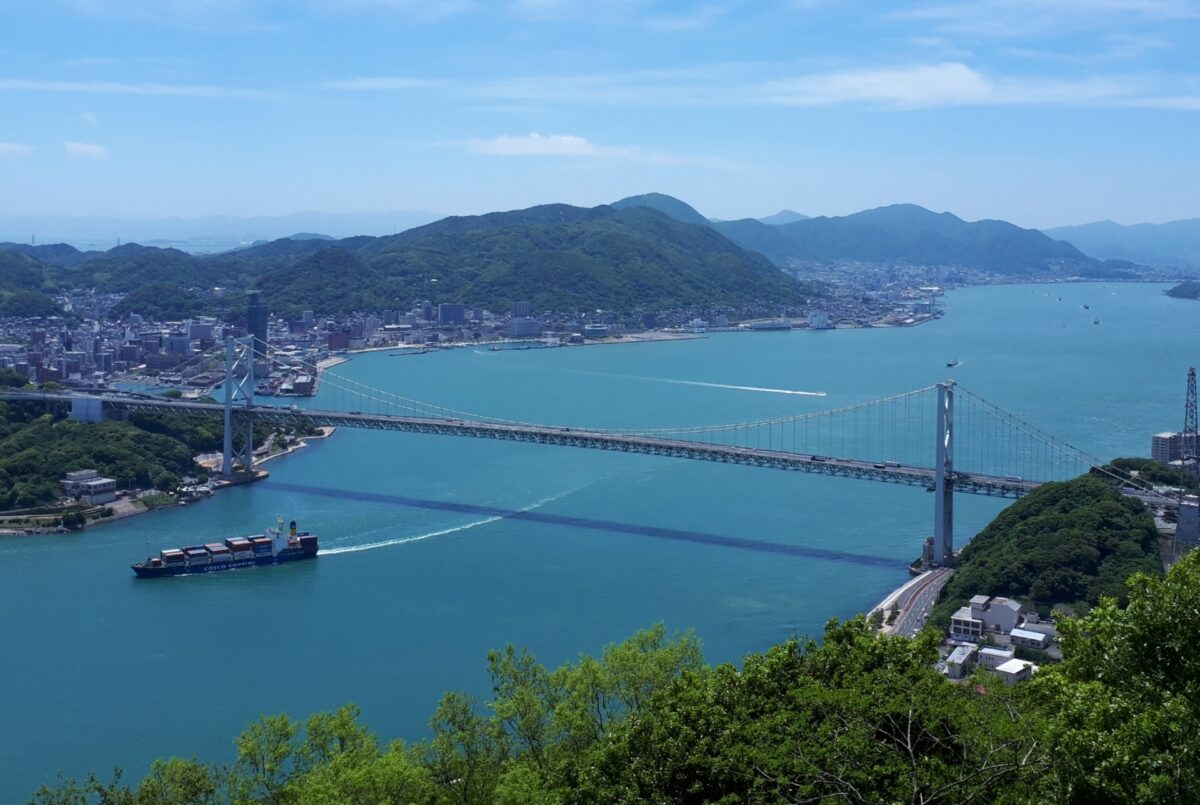
Hofu Tenmangu is one of the three great tenmangu (the others are Kitano Tenmangu in Kyoto and Dazaifu Tenmangu in Fukuoka). Founded in 904, it was the first shrine that enshrined Sugawara no Michizane, who is now known as the deity of academics. Many tourists pay a visit to the shrine to pray for passing the entrance exams and success in academics. There are several festivals and rituals throughout the year, Gojinkōsai, also known as Hadakabō Festival, is one of them. About 5,000 men called hadakabō carry the big mikoshi (a portable shrine) that enshrines Sugawara no Michizane. The mikoshi weighs about 500 kg, and thousands of people carry it carefully from the top of the stone stairs and descend, carrying it to the Katsumanoura , which is about 2.5km away from the shrine. This festival is to soothe the spirits of Michizane who was relegated for his false charge and announce his innocence. It’s usually held on the fourth Saturday of November every year. If you visit the area around that time, don’t miss the chance to see this unique and passionate festival!

Don’t forget to try Fugu , blowfish, when you visit Yamaguchi since Shimonoseki city in Yamaguchi has the largest catch of Fugu. You might have heard that a blowfish is poisonous but you can try it safely at the restaurant since only the licensed and skilled chef can be allowed to serve. Ask the locals what is the best way to eat Fugu!
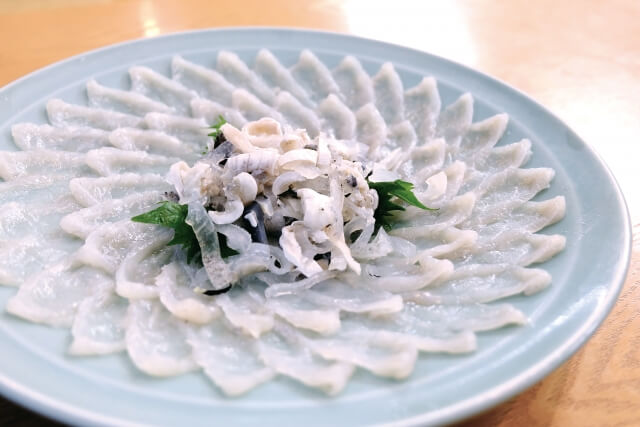
Hotel Nishinagato Resort ― Located close to Tsunoshima Ohashi, the best part of the hotel is the open-air hot spring with the view of the ocean which is right in front of you.
Matsudaya Hotel ― A traditional Japanese hotel with a beautiful Japanese garden, you can enjoy the private onsen and if you are not comfortable to sleep in a futon (Japanese style bed), you can choose the room with the bed.
Hagikomachi ― Enjoy the coastal view from the room and different types of hot springs. This traditional Japanese hotel will offer you a relaxing experience during your stay!
Follow us on Instagram or Facebook for more travel inspiration. Or tag us to get featured!
Happy travelling!

This post may contain some affiliate links. When you click through and make a purchase we may receive some commission, at no extra costs to you
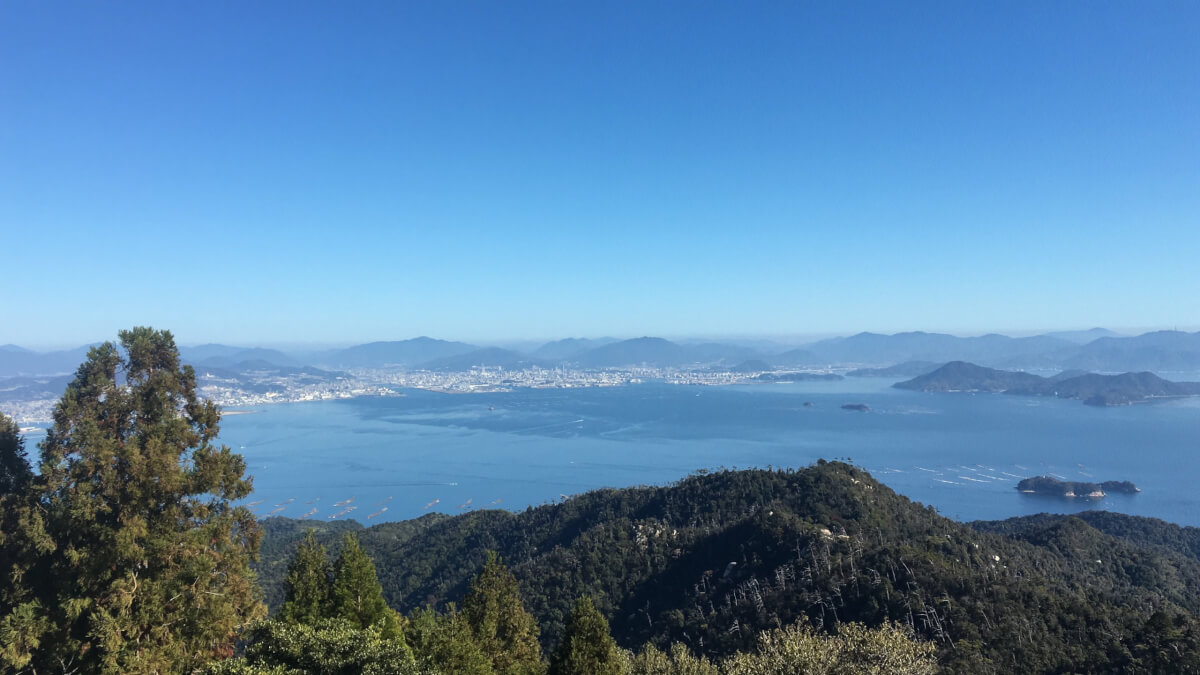
Hofu Tenmangu is not listed ! One of the 3 biggest tenmangu in Japan !
Thank you for your suggestion. We will add it to the list!
- Popular destinations
- Hidden places in Japan
- Tours and workshop
- Food and drink in Japan
- Itinerary in Japan
- Places to visit in Tokyo
- Food and drink in Tokyo
- Seasonal events
- Tours & workshops
- Tokyo This Week
- Day trip from Tokyo
- Itinerary in Tokyo
- Places to visit in Kyoto
- Food and drink in Kyoto
- Itinerary in Kyoto
- Day trip from Kyoto
- Travel tips
- Accommodation
- Cultural tips
- Transportation
- Tokyo Tours
- Kyoto Tours
- Kimono Rental
- Fukushima Tours
- Mount Fuji Tours
- Tour Package
- Media Kit(English/日本語)

- Where to Visit in Japan
- Chugoku Region
16 Best Things to Do in Yamaguchi 2024
- Chugoku Region , Yamaguchi
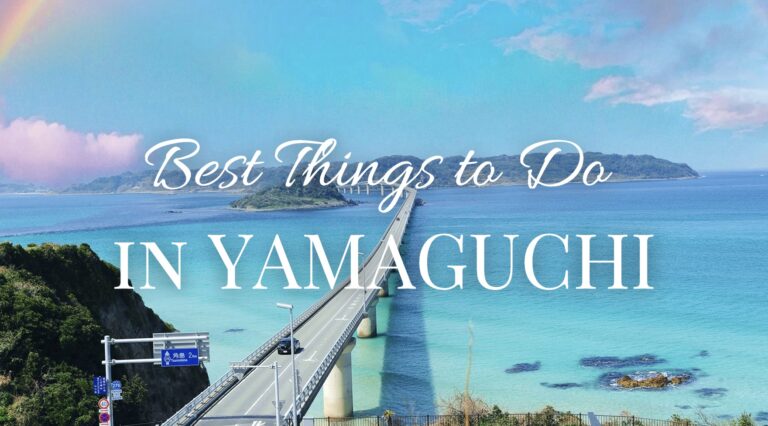
Yamaguchi, the picturesque gem of western Honshu, invites travelers to discover its rich tapestry of history, culture, and nature. As we step into 2023, the allure of this region has never been more pronounced. From its iconic wooden bridges to the mystique of its limestone caves, Yamaguchi beckons with promises of unforgettable experiences.
In this guide of the best things to do in Yamaguchi, we’ll journey through ancient temple grounds, soak in therapeutic onsen waters, and wander through preserved samurai towns. If Yamaguchi has been on your travel radar, this is the year to embrace its wonders.
1. Tsunoshima Island
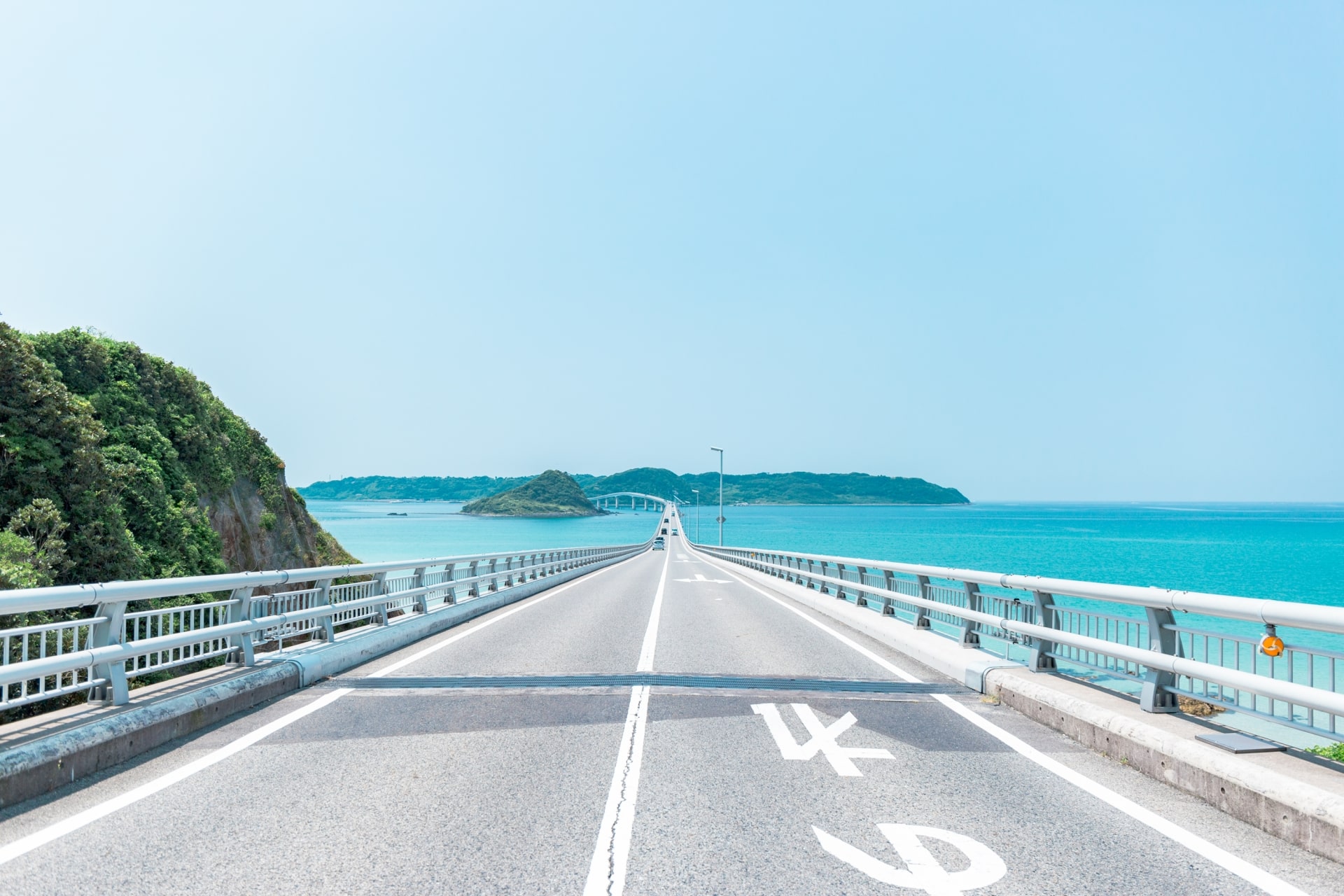
Tucked away in the Seto Inland Sea, Tsunoshima Island is Yamaguchi’s hidden gem. Revered for its pristine beaches and crystal-clear waters, this destination provides an oasis for those seeking tranquility and unspoiled natural beauty. Whether you’re sunbathing on its golden sands, taking a leisurely swim, or simply enjoying a scenic boat ride around the island, Tsunoshima offers a rejuvenating escape from the bustling world. Don’t miss the picturesque sunsets that paint the horizon, creating an ethereal spectacle.
2. Motonosumi Inari Shrine
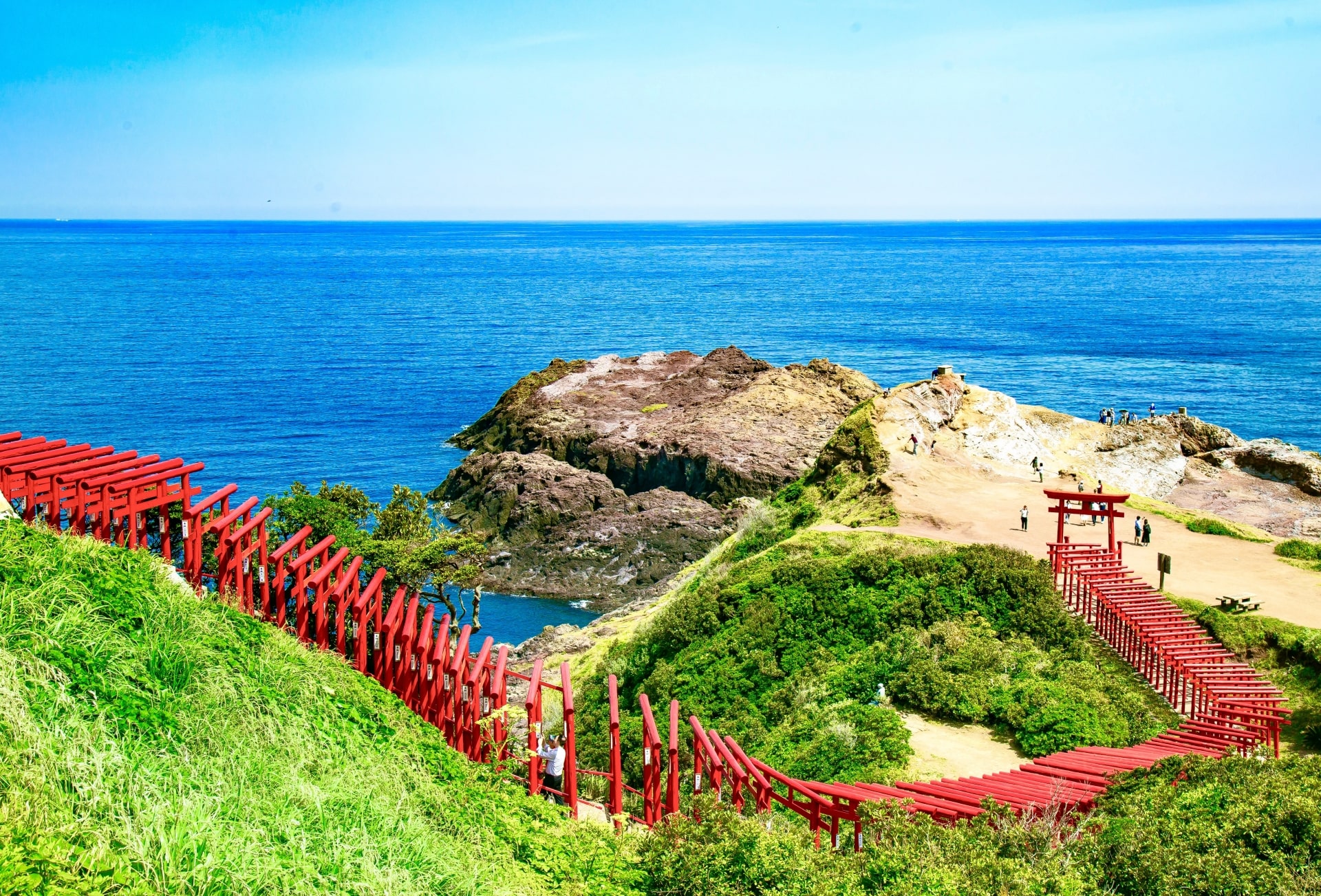
Nestled on the dramatic cliffs overlooking the Sea of Japan, the Motonosumi Inari Shrine is a visual and spiritual spectacle. With over a hundred vibrant red torii gates winding their way down to the coastline, this site offers a journey of reflection and wonder. Each gate stands as a testament to the shrine’s rich history and the deep reverence of those who visit. As you traverse this path, the rhythmic sounds of the waves and the serene ambiance elevate the experience, making it a must-visit spot in Yamaguchi.
3. Rurikoji Temple
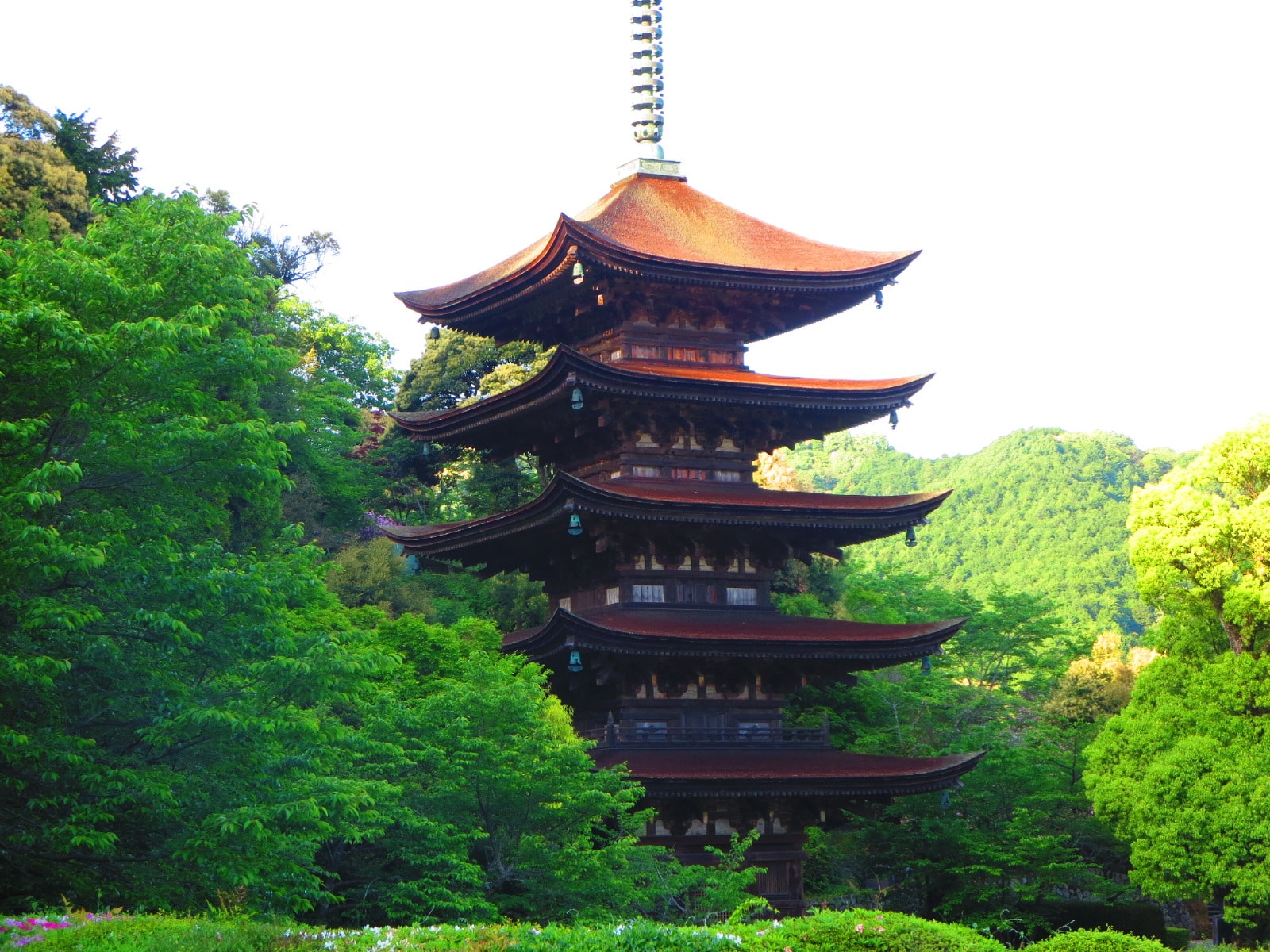
At the heart of Yamaguchi City lies the serene Rurikoji Temple , home to one of Japan’s National Treasures—the Five-Storied Pagoda. Standing majestically amidst the lush greenery, this pagoda is a testament to Japan’s architectural prowess and historical legacy. Built in the 15th century, its timeless elegance captivates every visitor. The surrounding temple grounds, punctuated by seasonal flowers and ancient trees, provide a peaceful backdrop for contemplation. Whether you’re an architecture enthusiast, history buff, or someone seeking a moment of calm, Rurikoii Temple is a beacon of cultural richness in Yamaguchi.
4. Kintaikyo Bridge
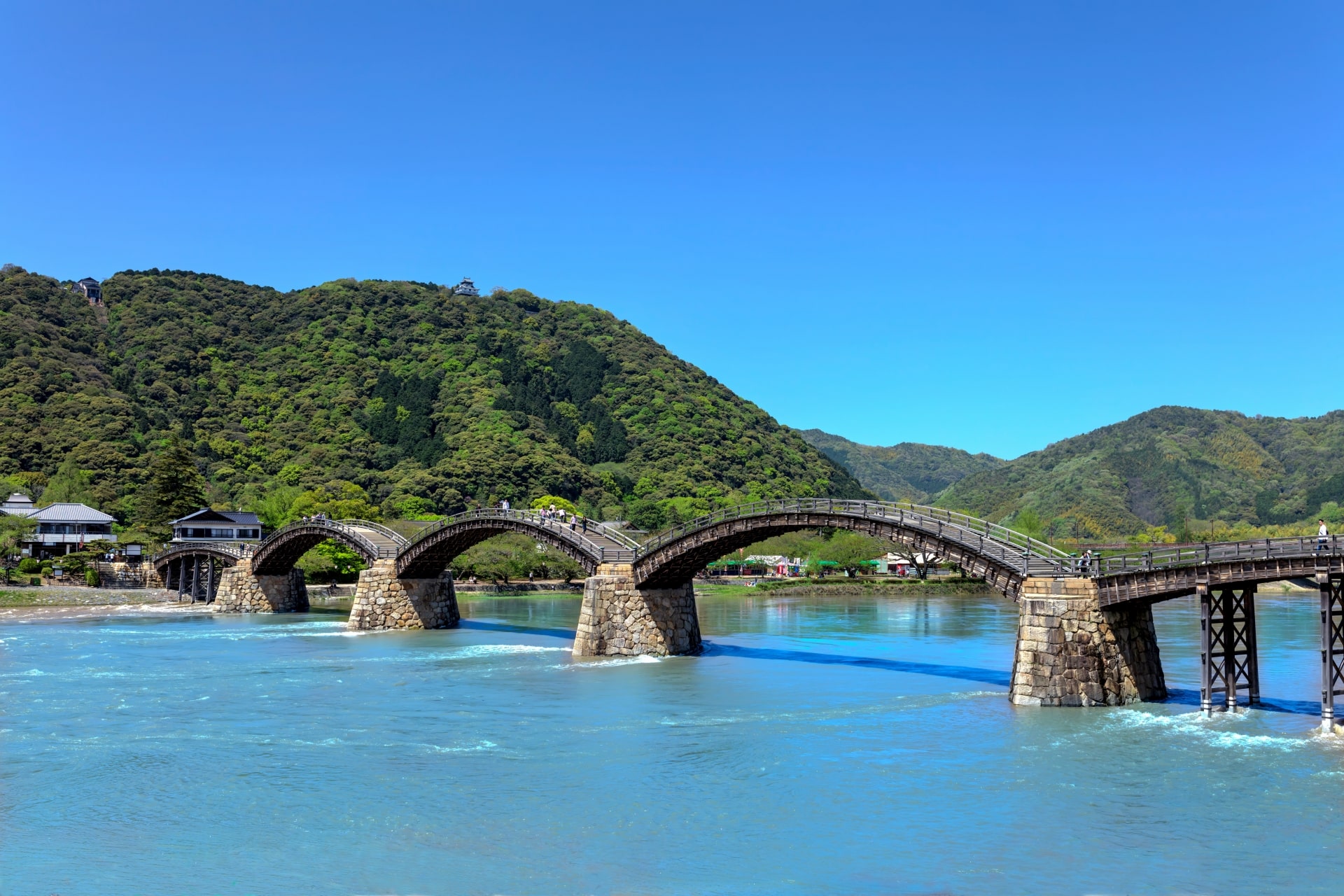
Standing as a testament to Japanese craftsmanship and aesthetic sensibilities, the Kintaikyo Bridge in Iwakuni is an architectural marvel. This iconic wooden arch bridge, with its five bold arches, spans the picturesque Nishiki River, presenting a sight that’s especially captivating during cherry blossom season. Taking a stroll across the bridge is like stepping back in time, and each step offers a new perspective of the surrounding natural beauty and historic town.
5. Iwakuni Castle
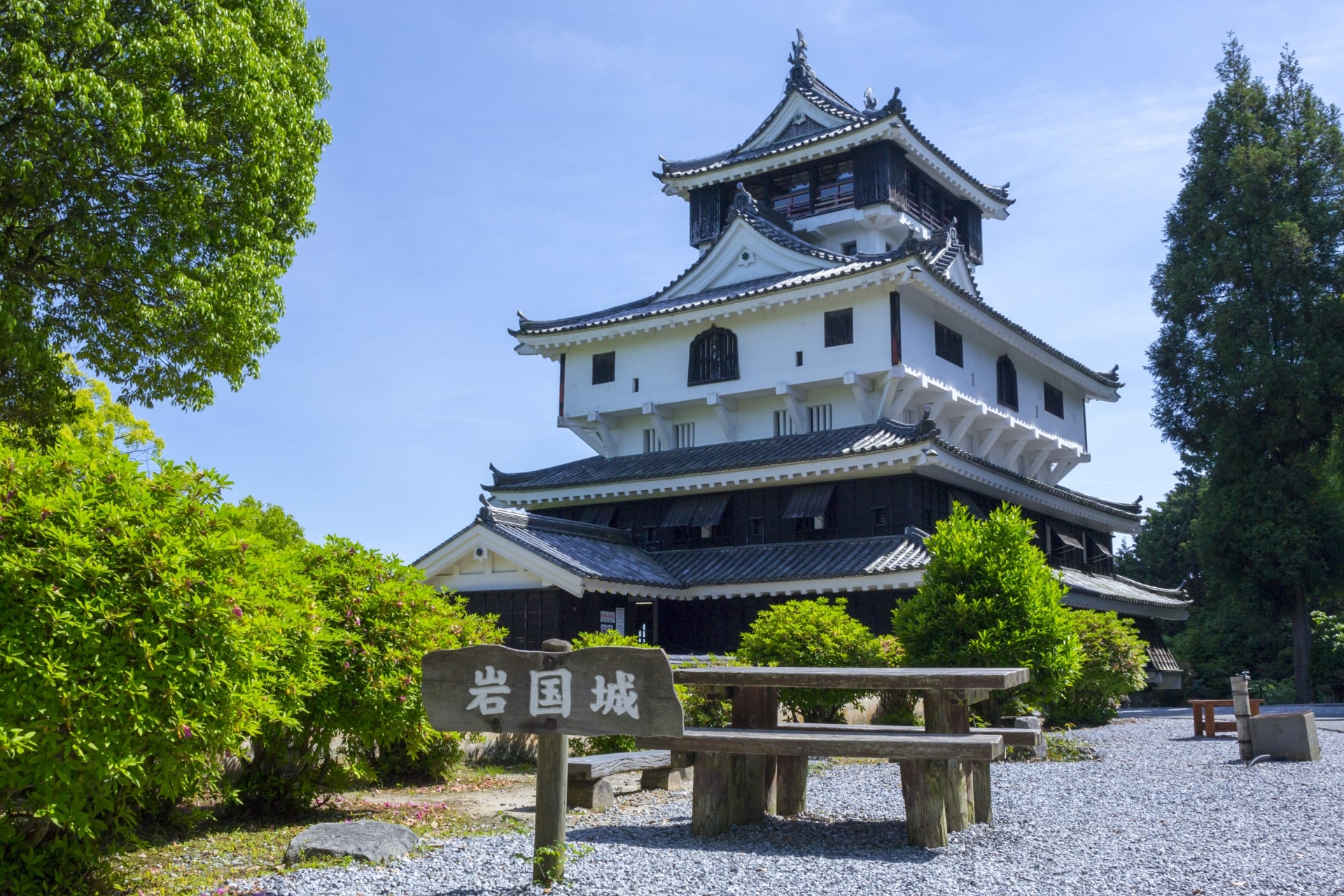
Perched atop Mount Shiroyama, Iwakuni Castle offers a blend of history, architecture, and panoramic vistas. Though the current structure is a reconstruction, it retains the grandeur and spirit of the original 17th-century castle. After a short but invigorating hike (or a convenient cable car ride), visitors are rewarded with sweeping views of Iwakuni City, the Seto Inland Sea, and, of course, the Kintaikyo Bridge. Inside, the castle serves as a museum, showcasing samurai armor and artifacts, providing insight into the region’s rich history.
6. Akiyoshidai Plateau and Akiyoshido Cave
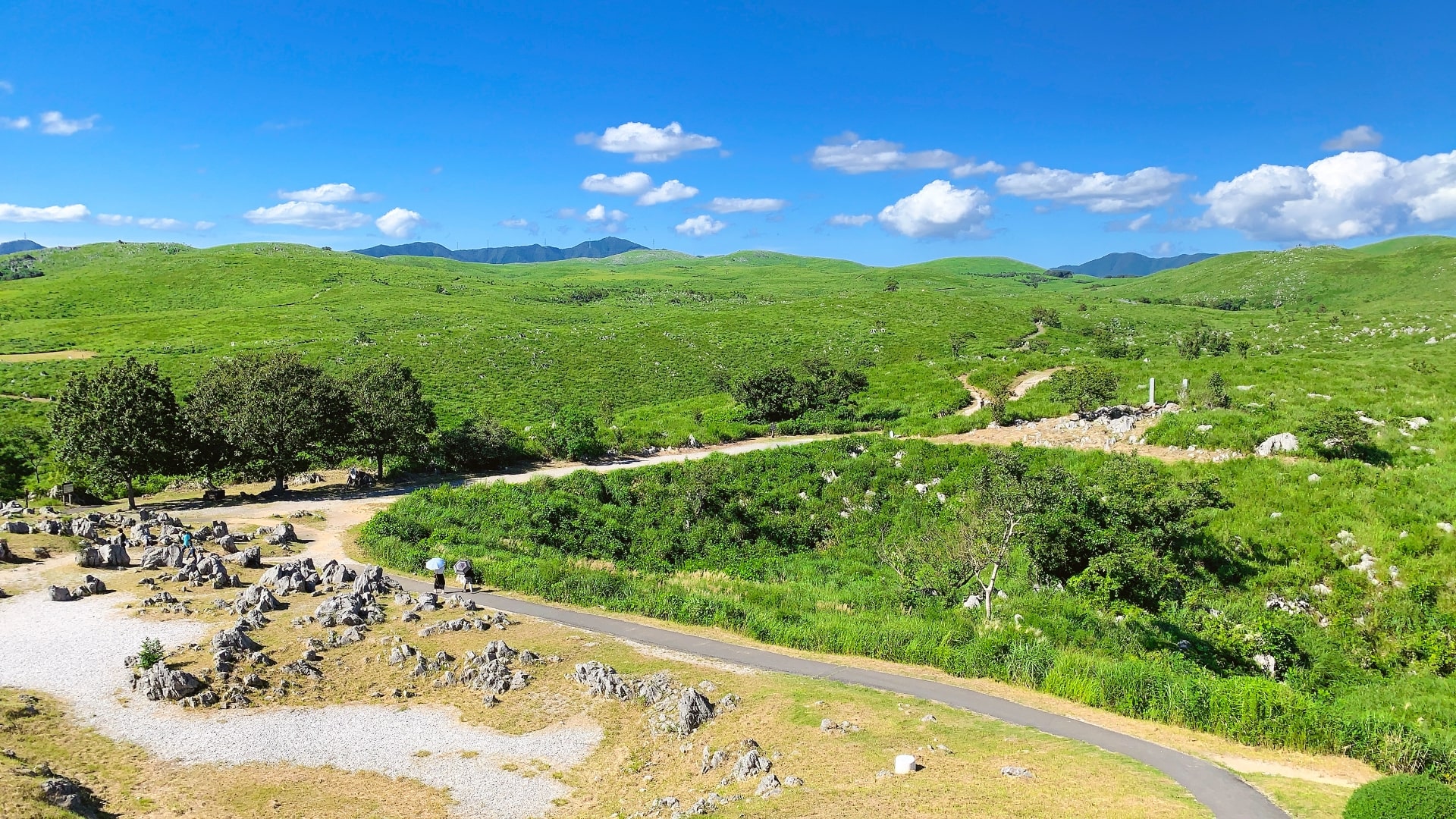
A realm where nature’s artistry is on full display, the Akiyoshidai Plateau is one of Japan’s largest karst landscapes, dotted with limestone pinnacles shaped by millennia of erosion. But the wonders don’t stop at ground level. Beneath the plateau lies Akiyoshido Cave , a subterranean marvel with vast chambers and stunning stalactite formations. As visitors wander through this expansive cave system, they’re met with otherworldly scenes of crystal-clear underground streams and intricate rock formations. Together, the plateau and cave offer a unique opportunity to appreciate nature both above and below ground in Yamaguchi.
7. Shimonoseki
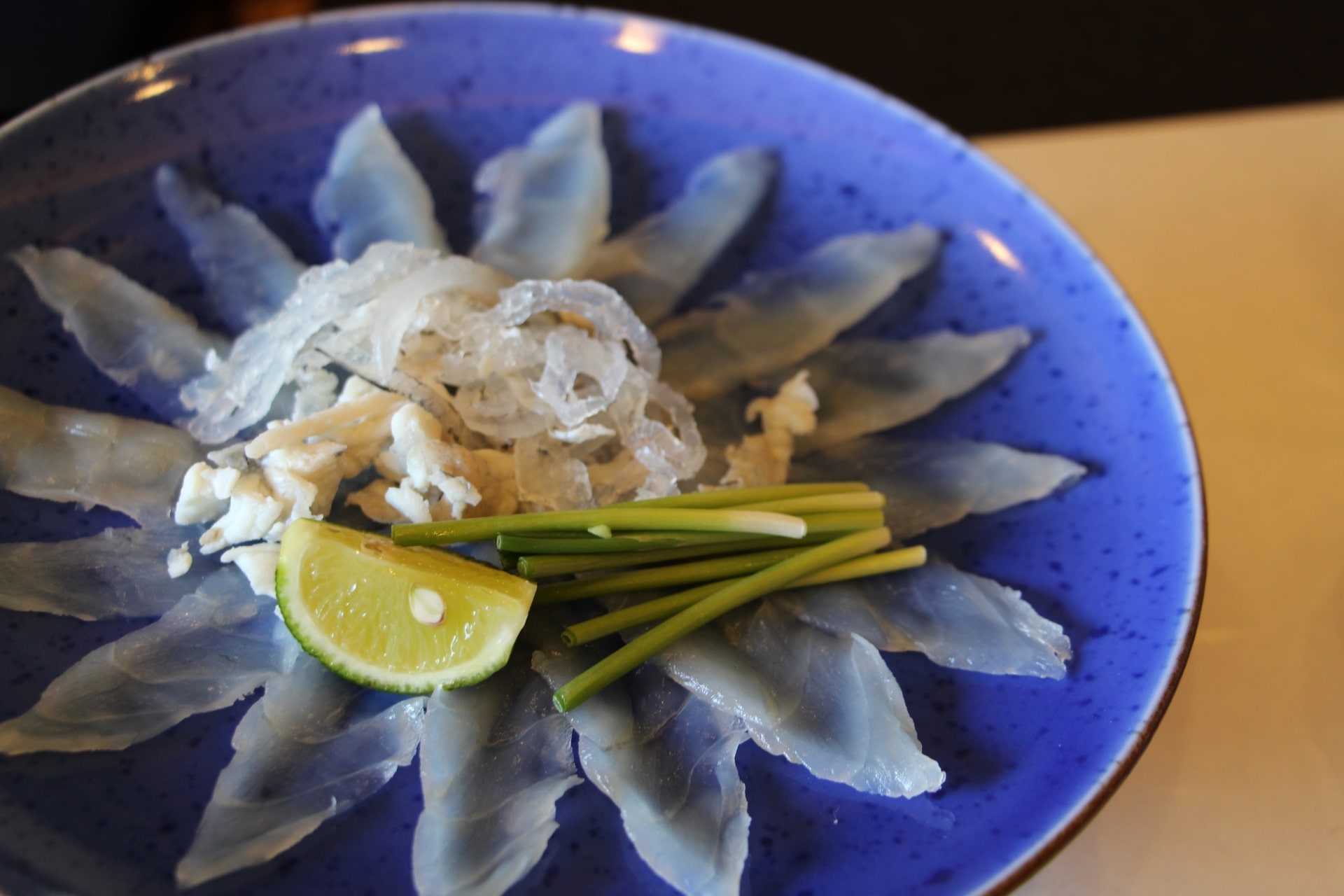
Often regarded as the “Gateway to Kyushu,” Shimonoseki is not just geographically significant; it’s also the fugu (pufferfish) capital of Japan. This city offers the unique opportunity to taste this dangerous yet delectable delicacy, prepared by highly trained chefs who have mastered the art of safely preparing the fish. While the thrill of tasting something so notoriously perilous is a draw for many, the rich, delicate flavor of fugu, especially when served as sashimi, is an unforgettable gastronomic experience.
8. Yuda Onsen
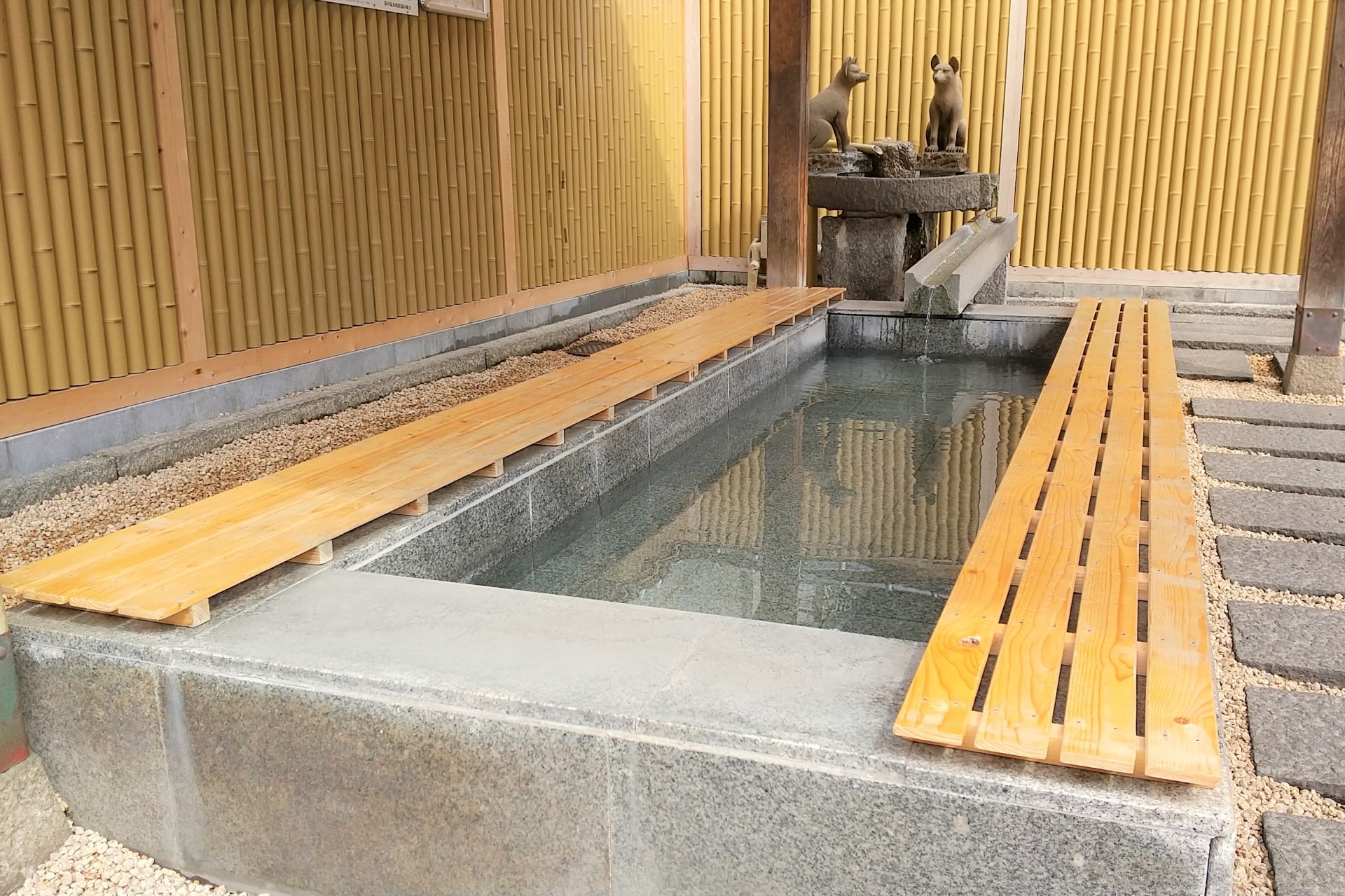
Nestled in the heart of Yamaguchi, the Yuda Onsen district beckons visitors with the promise of relaxation and rejuvenation. These hot springs have been extolled for their therapeutic properties for centuries, with legends claiming their discovery by an injured white egret that healed after bathing in its waters. Beyond its balmy embrace, Yuda Onsen boasts a serene ambiance, characterized by traditional inns, lantern-lit streets, and the gentle sounds of nature. It’s an ideal haven for those seeking respite from the hustle and bustle of urban life.
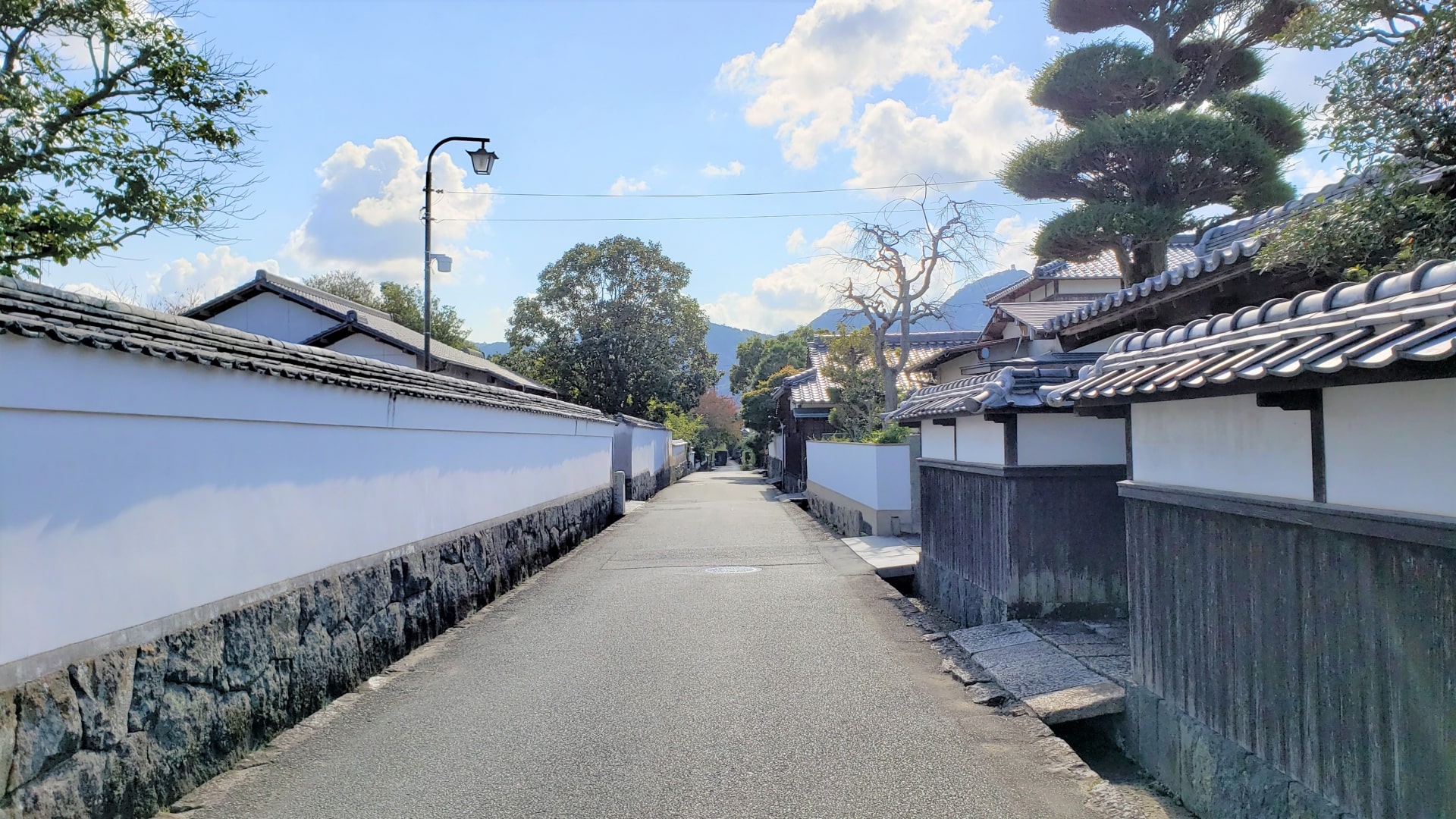
Time seems to stand still in Hagi , a beautifully preserved former castle town that exudes an old-world charm. Meandering through its atmospheric streets, visitors are transported to the samurai era, with well-preserved residences, earthen walls, and narrow lanes awaiting exploration. Beyond its samurai heritage, Hagi is also renowned for Hagi-yaki pottery, characterized by its subtle hues and rustic appearance. A visit to this town is not just a visual treat, but also an immersive journey into Japan’s rich history and culture.
10. Hofu Tenmangu Shrine
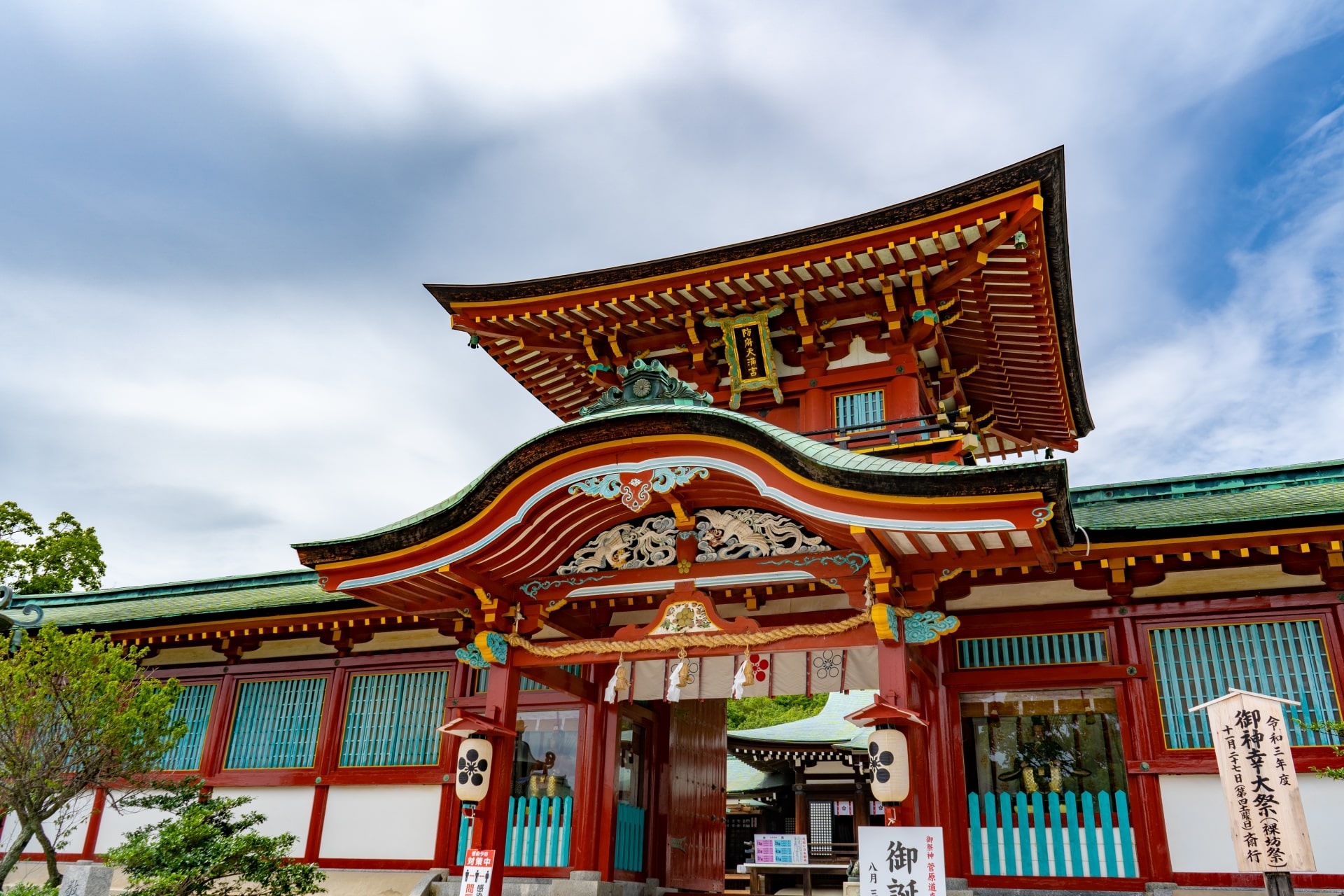
Among the pantheon of Japan’s revered shrines, Hofu Tenmangu holds a special place. Dedicated to the deified spirit of Sugawara no Michizane, a scholar and politician of the Heian Period, this shrine stands as a testament to Japan’s profound respect for learning and knowledge. With its serene ambiance, beautiful architecture, and lush green surroundings, the shrine is a place of reflection and solace. Visitors often come to seek blessings for academic success, making it particularly vibrant during exam seasons. Wander its sacred grounds and immerse yourself in its deep-rooted history and spiritual significance.
11. Nagato Yumoto Onsen
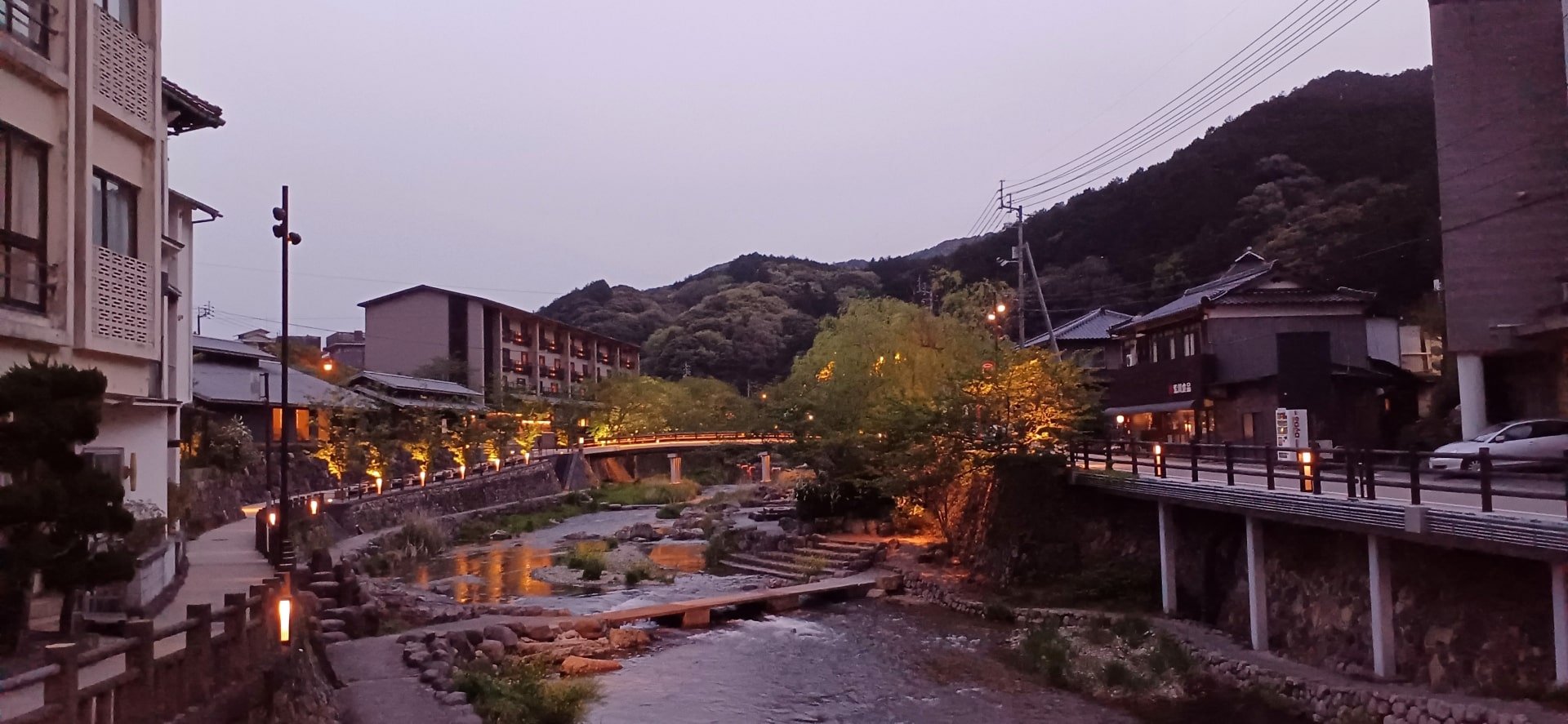
Tucked away in the picturesque landscape of Yamaguchi, the Nagato Yumoto Onsen offers a sublime escape from the world’s rigors. These hot springs have been a source of relaxation and healing for centuries, renowned for their mineral-rich waters. Steeped in legends and myths, the onsen area is surrounded by stunning mountain scenery, adding to the sense of tranquility. Whether you visit a traditional ryokan or a modern spa facility, the promise of relaxation and rejuvenation awaits every visitor.
12. Omijima Island
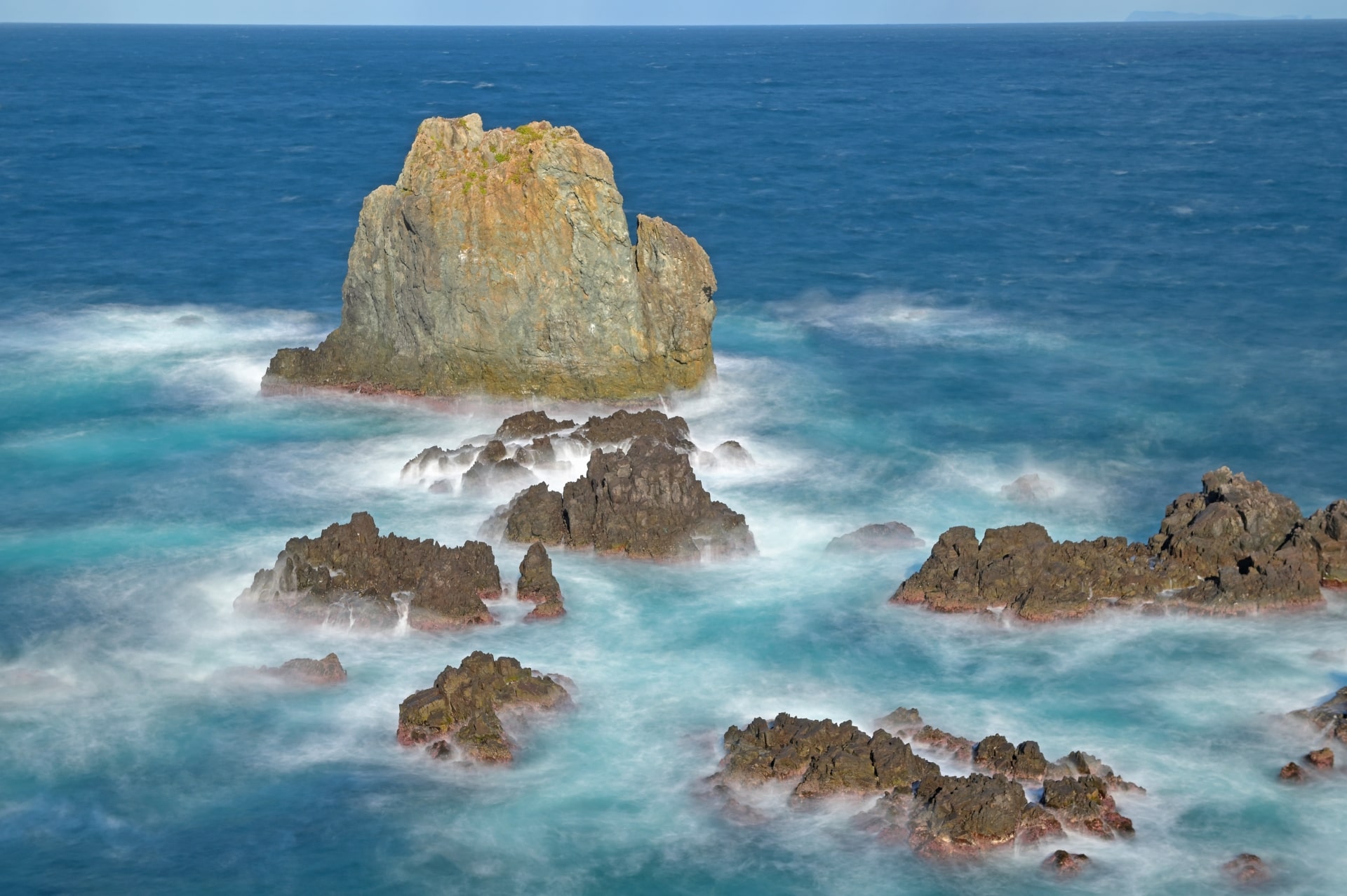
Aptly dubbed the “Island of the Gods,” Omijima Island boasts a rugged and breathtaking coastline that captivates all who venture to its shores. Its dramatic cliffs, clear blue waters, and unique rock formations present nature in its most unbridled form. But beyond its natural beauty, Omijima holds cultural and historical significance. The island’s shrines and temples, interspersed amidst the natural landscapes, have been places of worship and pilgrimage for centuries. Adventure seekers can explore its hiking trails, while those looking for solace can find it in the island’s serene pockets, making Omijima a versatile destination for all.
13. Joeiji Temple
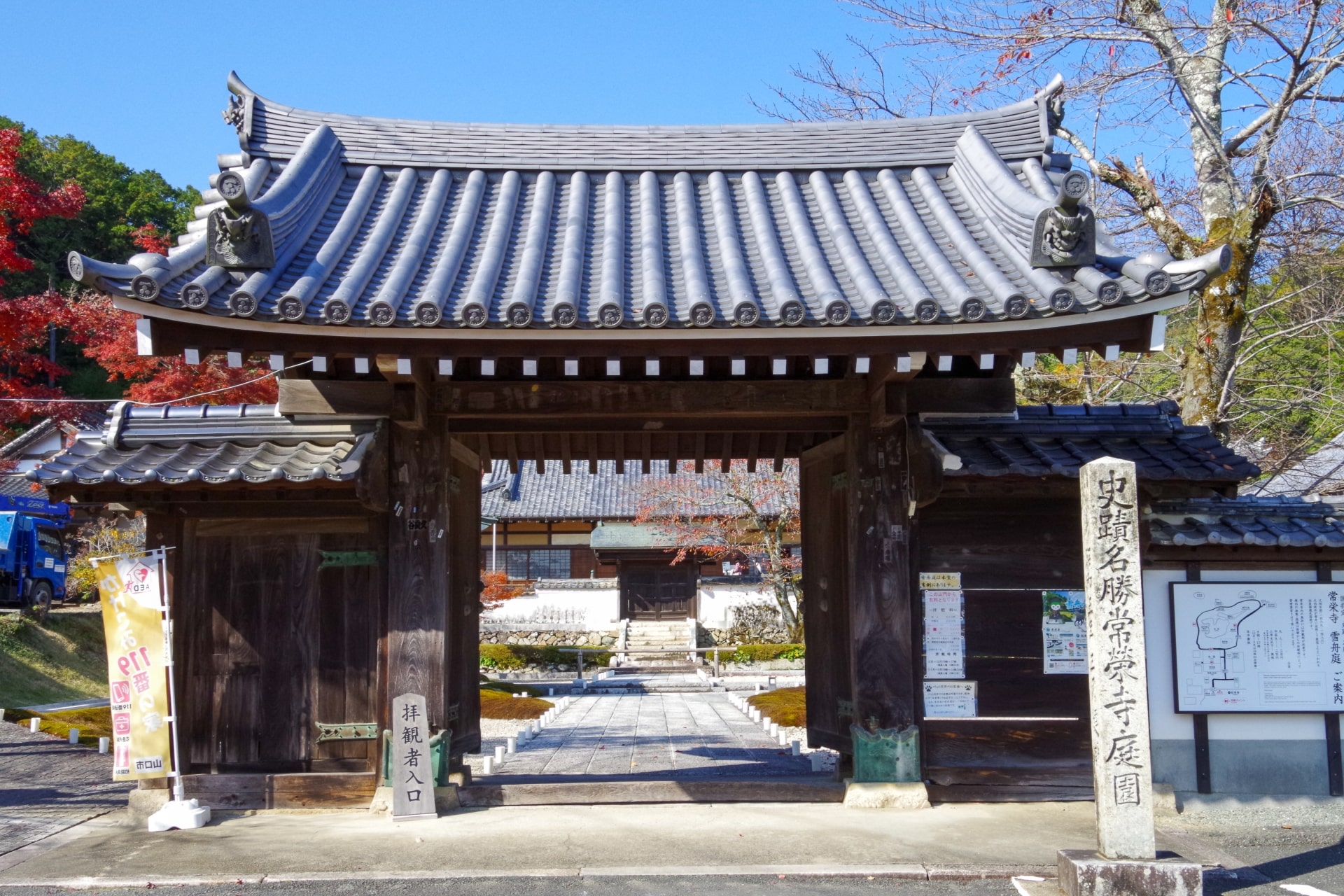
Nestled amidst the bustling locales of Yamaguchi, the Joeiji Temple offers a quiet sanctuary of peace and contemplation. Known for its picturesque moss garden, the temple stands as an epitome of Japanese landscape artistry. The verdant moss, interspersed with stone pathways and tranquil ponds, creates an ambiance of zen-like serenity. The temple’s traditional architecture complements this natural haven, allowing visitors to fully immerse themselves in the beauty and tranquility of their surroundings.
14. Suo Oshima Island
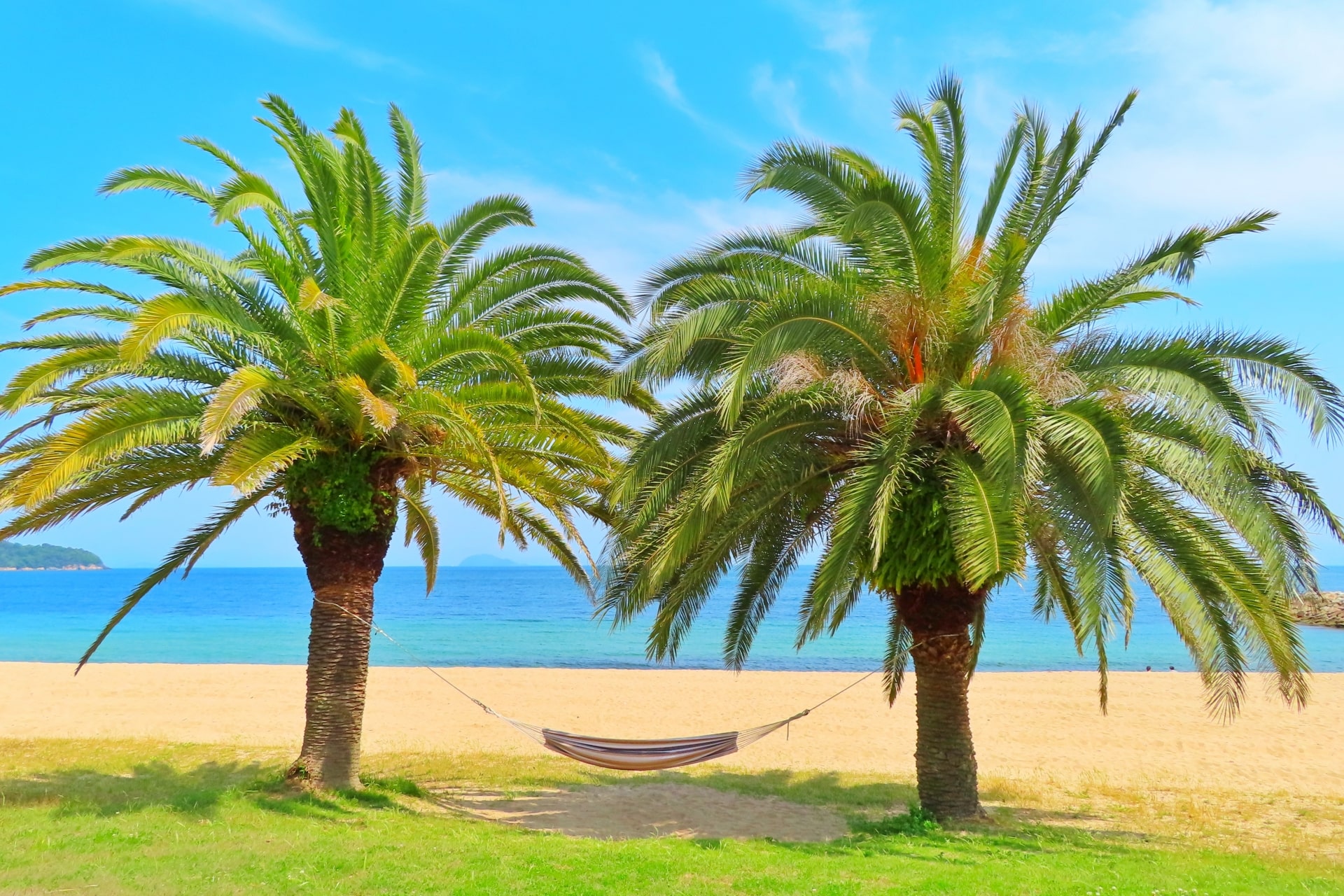
Often referred to as the “Pearl of the Seto Inland Sea,” Suo Oshima Island is a tropical haven teeming with natural beauty. Sandy beaches hug its coastline, providing the perfect setting for sunbathing or enjoying watersports. The island is also renowned for its sprawling citrus orchards, which produce some of Japan’s juiciest and most flavorful fruits. Experiencing the island life here is a blend of relaxation and adventure, and a journey to Suo Oshima promises memories that last a lifetime.
15. Yamaguchi Prefectural Art Museum
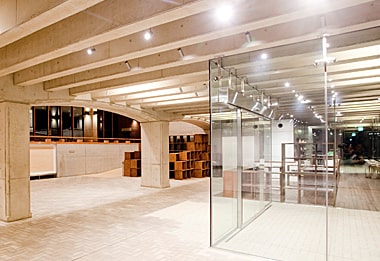
Celebrating the confluence of art and culture, the Yamaguchi Prefectural Art Museum is a hub of artistic brilliance. The museum boasts an impressive collection of artworks ranging from local talents to international maestros. Every exhibit narrates a story, from traditional Japanese paintings to contemporary art pieces. Interactive displays, regular workshops, and themed exhibitions keep the museum experience fresh and engaging for visitors of all ages.
16. Karato Fish Market
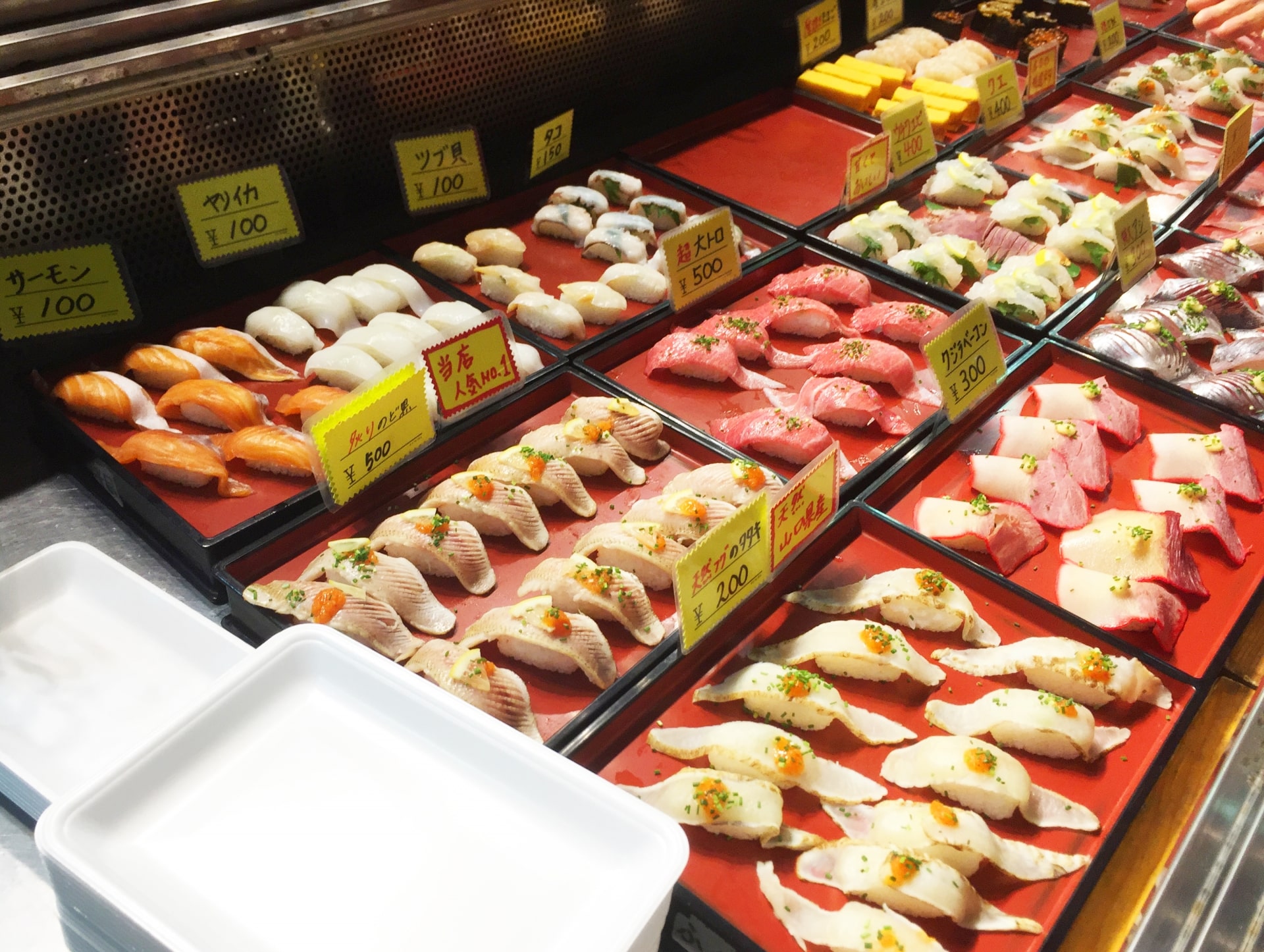
Located in Shimonoseki, the Karato Fish Market is a seafood lover’s paradise. As you stroll through the market, you are greeted with stalls brimming with the freshest catch of the day. The vibrant atmosphere is accentuated by sellers showcasing their produce and inviting visitors to taste. One of the main attractions here is the sushi, which many claim to be among the best they’ve ever tasted. The sheer variety of seafood, combined with the skills of local chefs, makes a visit to the Karato Fish Market a gastronomic adventure you shouldn’t miss.
As we draw our Yamaguchi exploration to a close, it’s evident that this prefecture is a harmonious blend of the past and the present. Each destination highlighted in our list of best things to do in Yamaguchi not only offers a sensory treat but also a deep connection to Japan’s rich heritage.
As the world continues to change, places like Yamaguchi remind us of the timeless beauty and enduring spirit of exploration. Whether you’re a history buff, a nature enthusiast, or simply looking for your next great adventure, Yamaguchi awaits now with open arms and endless wonders.
◇◇◇Let’s also check out these tourist attractions in the neighboring prefectures in Chugoku Region!◇◇◇
▶︎▷▶︎▷ 15 Best Things to Do in Tottori
▶︎▷▶︎▷ 17 Best Things to Do in Shimane
▶︎▷▶︎▷ 15 Best Things to Do in Okayama
▶︎▷▶︎▷ 16 Best Things to Do in Hiroshima
Niigata's Murakami City: Enjoy Fun Events, Sightseeing, and Local Cuisine!
We use cookies to improve our contents. Check the detail and update your settings here .
We use cookies to improve our services.
For more details, please click here .

- Change setting
- Food & Drink
- Accommodation
- Things To Do
- All the categories
Transportation
- Weather & Seasons
- Long-Term Stay
- Travel Tips
- Event Tickets
- About MATCHA
- Company Profile
- Things To Do in Yamaguchi
- Food & Drink in Yamaguchi
- MATCHA Special Features
Yamaguchi Travel Guide: 15 Things to Do, Access, Local Food, and More

Yamaguchi has many charming spots, including scenic views, culturally significant historical buildings, and hot springs. Whether it’s an excursion around famous places like Tsunoshima Bridge or a taste of Shimonoseki’s blowfish, read on to learn about exciting activities to enjoy while traveling her...
Yamaguchi: A Hidden Gem in Western Japan
Yamaguchi is a prefecture located on the eastern side of the Chugoku Region. There are several notable sights for travelers to see here, including the Hagi Castle Town for a sense of history, Motonosumi Inari Shrine with its rows of torii gates, and the scenic Tsunoshima Bridge . Yamaguchi is also known as the birthplace of great figures who shaped Japanese history and home to several sites related to those figures.
You can travel to Yamaguchi from Tokyo by Shinkansen (bullet train). It takes 4 hours and 20 minutes by Shinkansen from JR Tokyo Station to JR Shin-Yamaguchi Station, with fares starting around 20,100 yen. From JR Shin-Yamaguchi Station, it takes 25 minutes to JR Yamaguchi Station on the JR Yamaguchi Line, costing 240 yen.
As points of interest are scattered throughout the prefecture, it is convenient to rent a car at Yamaguchi Station. In this article, we'll tell you about the exciting activities you'll want to do while in Yamaguchi Prefecture.
1. Pay a Visit to Motonosumi Inari Shrine 2. Drive Along Tsunoshima Bridge's Scenic Route 3. Stroll Through Hagi Castle Town 4. Feel Refreshed at the Beppu Benten Pond 5. Check out the Five-Storied Pagoda at Ruriko-ji Temple 6. Experience Zen Ideology at Joei-ji Temple 7. Tour the DASSAI Sake Brewery 8. Cross the Wooden Arches of Kintaikyo Bridge 9. Soak in Hot Springs 10. Cycle Through the Vast Akiyoshidai Plateau 11. Explore Akiyoshido Cave 12. Eat Exquisite Pufferfish in Shimonoseki 13. Shunan Industrial Night Cruising 14. Try some Iwakuni Sushi 15. Snack on Some Kawara Senbei
1. Pay a Visit to Motonosumi Inari Shrine

Photo by Pixta
When you visit a shrine in Japan, it's customary to place money into the offertory box at the front of the main hall before praying. However, there is a shrine that has a very hard time collecting monetary offerings. The name of this sacred place is Motonosumi Inari Shrine . Unbelievably, its main hall is located at the end of one-hundred and twenty-three torii gates .

Typically an offertory box is located at the front of the main hall. Here, however, it is located at the top of a torii gate. Visitors must throw their coins towards the box placed five-meters off the ground.
Due to the difficulty of getting your coins into the box, it's a popular belief that your wish will come true if you are able to fortuitously throw it inside.

About a ten-minute drive away from Motonosumi Inari Shrine is a spot with a fantastic view called Senjojiki (literally meaning "one thousand tatami mats"). It's a grassland situated 333 meters above ground, much like the Tokyo Tower, and is a place where you can gaze out at blue skies with the beautiful sight of the sea. It's a spot where you'll be able to relax, swayed by the pleasant salty breeze.

Motonosumi Shrine

2. Drive Along Tsunoshima Bridge's Scenic Route

Tsunoshima Bridge is a route you'll want to take if you're driving in Yamaguchi. The bridge crosses over to Tsunoshima, a remote island, and is surrounded by a beautiful emerald green sea.

Tsunoshima Ohashi
3. Stroll Through Hagi Castle Town

Supporters of the Meiji Restoration (*1) were born in Hagi City , located on the western side of the prefecture. One of the first supporters was Shoin Yoshida, a samurai and educator.
Horiuchi, an old samurai quarter around the Hagi Castle Ruins , and Hagi Castle Town , were registered as a World Heritage Site in 2015. The area has retained the original streets that the townspeople lived on up to this day. These historical sites were classified as a component of the "Sites of Japan's Meiji Industrial Revolution: Iron and Steel, Shipbuilding and Coal Mining."
Throughout the area, you'll find several cafes made from old renovated Japanese homes where you can enjoy some tea during your stroll.
*1 Meiji Restoration (Meiji Ishin): A series of reformations made from the defeat of the Edo shogunate to the birth of the Meiji government.
4. Feel Refreshed at the Beppu Benten Pond

The Beppu Benten Pond is a famous photo spot located on the grounds of the Beppu Itsukushima Shrine, about 40 minutes by car from Hagi City.

Beppu Benten Pond
5. Check out the Five-Storied Pagoda at Ruriko-ji Temple

Photo by Pixta A ten-minute drive from JR Yamaguchi Station, Ruriko-ji Temple is a five-storied pagoda built during the 15th century that has a symbolic significance in Yamaguchi. Referred to as one of the "Three Most Famous Pagodas of Japan," it is ranked alongside Kyoto's Daigo-ji Temple and Nara's Horyu-ji Temple.
Similar to the Gassho-style homes in Shirakawa-go, it has a thatched roof (made out of cypress bark) that gives it a dignified appearance.

Rurikoji Temple

6. Experience Zen Ideology at Joei-ji Temple

Ink wash painting is a painting style that uses an ink stick and is said to have been introduced to Japan from China around the 8th century. Around the 15th century, a figure named Sesshu was Japan’s most prominent ink wash painter and a Zen priest. The Sesshu Garden in Joei-ji Temple is believed to have been built by this master of ink brush painting.
One of the highlights is the dry landscape garden made using just rocks and sand to express streams and the sea. It is located about ten minutes by car from JR Yamaguchi Station.

Joeiji Temple Sesshu Garden
7. Tour the DASSAI Sake Brewery
A famous Yamaguchi sake brand, DASSAI was gifted to the 44th President of the United States, Barack Obama, and to Russian President Vladimir Putin in commemoration of their visit to Japan. DASSAI's motto is to produce sake by hand without relying on machines. The DASSAI Store Head Brewery is where you can watch the sake brewing process.
Those interested in the brewery tour should make their reservations through the Brewery Tour Application Form on their official website. During this hour-long tour, you can watch as rice is steamed then fermented while learning about the sake brewing process.
Asahi Sake Brewery Co., Ltd.
8. Cross the Wooden Arches of Kintaikyo Bridge

The Kintaikyo Bridge is a famous spot for viewing cherry blossoms and autumn leaves. During the 7th century, this structure was built with sturdiness in mind as former bridges had been washed away by floods a number of times here. It has a distinct design that joins five smaller bridges together. Not a single nail was used in its construction.

About ten minutes across the bridge is a ropeway connecting to Iwakuni Castle. The castle’s observation deck is a spot that overlooks the sprawling town below.

Kintai Bridge

9. Soak in Hot Springs

Photo by Pixta The Yuda Hot Springs , just a ten minute drive from JR Yamaguchi Station, is also known by its nickname "Byakko no Yu" as white fox statues decorate the entire town ("byakko" means white fox in Japanese).
The name originated when a temple’s chief priest once found a white fox healing its wounds in Yuda’s hot springs. In this hot spring town, there are Japanese inns and bathing facilities ideal for day trips and footbaths—making it easy for all types of visitors to enjoy a soak.
10. Cycle Through the Vast Akiyoshidai Plateau
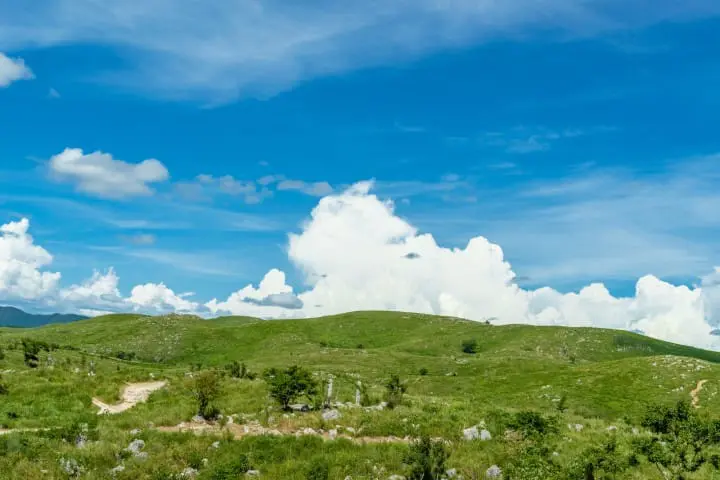
Photo by Pixta At Akiyoshidai , located 40 minutes by car from JR Yamaguchi Station, lies Japan’s largest karst plateau (*2). This landscape of sprawling green plains and towering white limestones is incredible. You can enjoy walking through three hiking courses here. You can also rent a bicycle at the Akiyoshidai Tourist Exchange Center and ride along the breezy cycling route.
*2 Karst Plateau: A type of topography formed when rainwater and other elements erode limestone-formed land.
Akiyoshidai Observatory
11. Explore Akiyoshido Cave

Right next to the Akiyoshidai Plateau is the Akiyoshido Cave , Japan’s largest limestone cave. Rumored to have a depth of 10.7 kilometers, about one kilometer of the length down is open to the public for sightseeing.

Photo by pixta There are various things to see inside the cave. These include the 100 Plates that look like scores of platters lined up in rows, and the Donai Fuji , which appears like a mountain emerging in view.
The temperature remains 17℃ throughout the year, which allows visitors to sightsee comfortably regardless of the season.

12. Eat Exquisite Pufferfish in Shimonoseki

Once you’ve had your fill of visiting tourist spots and have worked up a sweat at the hot springs, it’s time to savor the local cuisine.
Shimonoseki, an hour and 20 minutes by car from JR Yamaguchi Station, is a famous area for high-quality pufferfish (fugu). At the Karato Market (Japanese), you can enjoy fresh pufferfish priced relatively inexpensively in the city. Enjoy dishes such as fugu sashimi, hot pot (fugu nabe), or grilled fugu.

Photo by Pixta There are also dishes like Iwakuni sushi —a square-shaped sushi topped with shrimp and egg—and Kawara soba —buckwheat noodles fried on top of a roof tile—in Yamaguchi. They can be eaten at many Japanese restaurants in the prefecture.
13. Shunan Industrial Night Cruising

Photo by pixta Located on the eastern side of the prefecture, Shunan is an industrial area that helps sustain local commerce. The entire area transforms into a dazzling night view spot after the sun sets.
Cruise tours are available for travelers to enjoy the industrial night view. For example, the Shunan Industrial Night Scenery Sightseeing Tour (Japanese) travels around the entire Shunan industrial complex area in 90 minutes.
Tokuyama Port
14. Try some Iwakuni Sushi

Photo by pixta
Iwakuni , located on the eastern edge of Yamaguchi Prefecture, is known for its unique style of sushi " Iwakuni Sushi ," featuring fresh seafood and vinegared rice wrapped in bamboo leaves. The sushi is a pressed sushi and uses ingredients similar to chirashizushi. It's a must-try for sushi enthusiasts visiting the area.
15. Snack on Some Kawara Senbei
Kawara Senbei are traditional Japanese rice crackers cooked on a hot tile (kawara), resulting in a crispy texture and smoky flavor. They come in various flavors and are a popular snack in Yamaguchi. Try some out while visiting, or take some with you as unique souvenirs!
Enjoy Exploring Yamaguchi

I love Kimono and Daifuku.
Related topics
Top articles.

Rurikoji Temple and Its Famous Five-Storied Pagoda in Yamaguchi

Related Article

Top 45 Cherry Blossom Spots in Japan - 2024 Guide

10 Things to Do in Fukushima: Sightseeing, Food, and Safety

13 Top Cherry Blossom Spots in Hiroshima, Tottori, and Shikoku

Kagoshima Guide 2020 – Must-Visit Spots, Food, And Travel Tips

Shimane Travel Guide – Discover Shrines, Nature, And Local Food

10 Scenic Spots In Western Japan - Close To Kansai International Airport

Mie Travel Guide: 28 Sightseeing Spots, Food, Souvenirs, and More!
Start planning your trip
Special Features

Popular Searches
Latest news.

Showa Kinen Park Flower Festival 2024: Enjoy Nemophila, Tulips, and More!

A Must for Nature Lovers! Win a Free Stay at Unzen Amakusa National Park

A World of Light and Color! Van Gogh Alive in Japan 2024

Cherry Blossom Light-up in Tokyo! Yomiuri Land's Jewellumination

Cherry Blossoms and Sky Lanterns! Aichi Hanami Lights 2024

Japan's Public Holidays and Long Weekends in 2024

Aeon Mall Okinawa Rycom: A Shopping Mall Featuring a Resort Aura

Suica and Pasmo IC Cards: Prepaid Transportation Passes in Japan

Riding Taxis in Japan: The 6 Best Apps to Grab a Cab

How to Travel to Kyoto From Osaka: The Fastest and Cheapest Ways
New articles.

[Okinawa Yambaru]18 sightseeing spots and gourmet foods in Nago City! Enjoy play, nature, and food in Nago!

Room Introduction [Maisonette Suite Room with Barrel Sauna]

Nemophila field and yellow train

Golden Week 2024 in Japan: Dates, Events, and Travel Tips

[Yokoze Town, Chichibu District, Saitama Prefecture] Yokoze Carp Streamer Festival 2024 will be held until May 6th
Yamaguchi: 12 Top-Rated Things to do in Yamaguchi
- We may earn a commission from affiliate links
Yamaguchi is a prefecture located in the westernmost part of Japan’s main island, Honshu, Chugoku Region . Known for its natural beauty, rich history, and cultural significance, Yamaguchi is a popular destination for both domestic and international tourists. From stunning shrines and castles to breathtaking landscapes and modern museums, there is no shortage of things to do in Yamaguchi. In this travel guide, we’ll highlight 12 top-rated things to do in Yamaguchi to help you plan your trip and make the most of your visit to this beautiful prefecture.
1. Iwakuni Castle
Explore the reconstructed castle overlooking the Nishiki River and learn about its history.
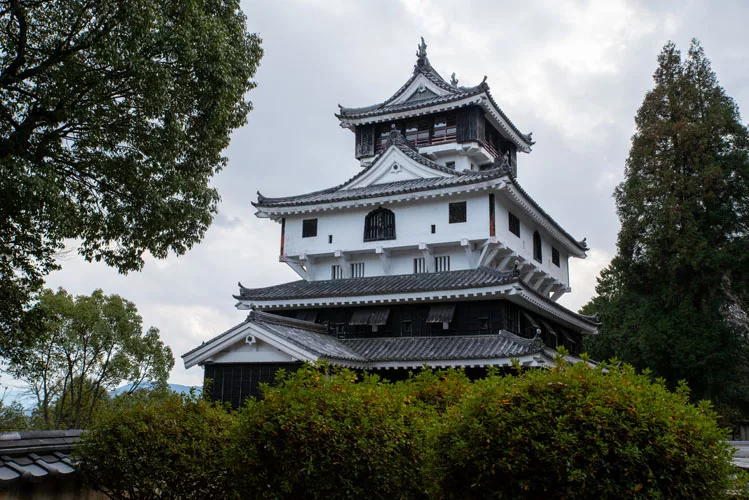
For history buffs and architecture enthusiasts alike, a visit to Iwakuni Castle is a must. This reconstructed castle sits atop a hill overlooking the Nishiki River and offers stunning views of the surrounding area. Originally built in the 17th century, the castle was destroyed during World War II and has since been rebuilt to its former glory.
Visitors can explore the various rooms and exhibits within the castle, including displays on the history of Iwakuni and the castle’s role in Japanese history. The castle’s top floor offers a panoramic view of the surrounding landscape, making it a popular spot for taking photos. Its stunning location and rich history make it a top attraction in Yamaguchi.
Official Website: https://kankou.iwakuni-city.net/
Address: 3 Chome Yokoyama, Iwakuni, Yamaguchi 741-0081
Reviews Visit: TripAdvisor
2. Kintai Bridge
Cross the iconic five-arched bridge in Iwakuni City and enjoy the scenic view of the Nishiki River
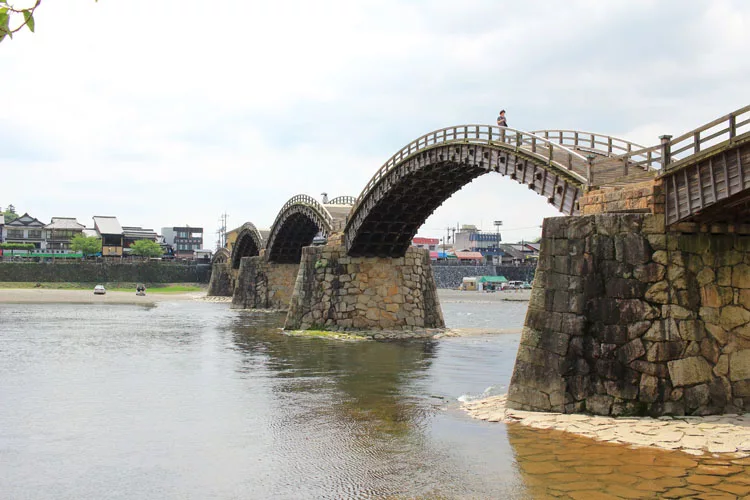
The Kintai Bridge is a must-see attraction in Yamaguchi, Japan. This iconic five-arched wooden bridge spans the Nishiki River in Iwakuni City and offers visitors a stunning view of the surrounding scenery. The bridge was originally built in 1673 and has been reconstructed several times over the centuries.
Today, visitors can cross the bridge on foot and take in the sights and sounds of the river and surrounding area. The view of the bridge from the riverbank is equally impressive, especially during the cherry blossom season when the trees are in full bloom. The bridge is also illuminated at night, creating a magical atmosphere for evening strolls. Overall, a visit to the Kintai Bridge is a must-do when in Yamaguchi.
Official Website: https://kintaikyo.iwakuni-city.net/
Address: Iwakuni, Yamaguchi 741-0062
3. Motonosumi Inari Shrine
Discover the stunning seaside shrine in Nagato City, famous for its 123 torii gates
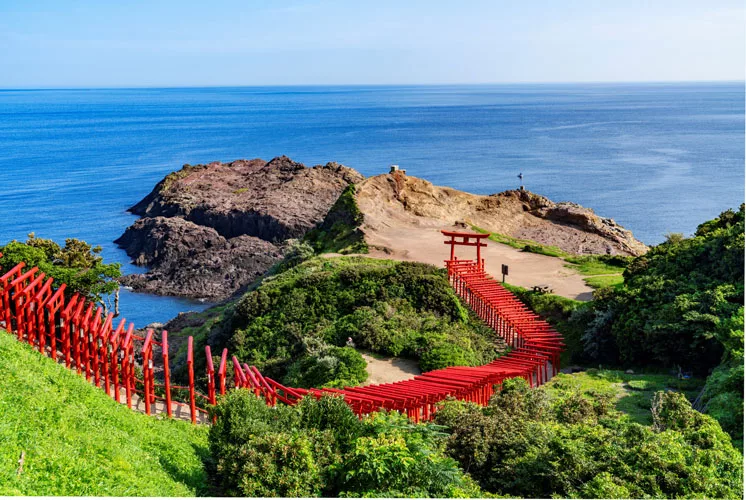
If you’re looking for a unique cultural experience in Yamaguchi, a visit to Motonosumi Inari Shrine is a must. This stunning seaside shrine, located in Nagato City, is famous for its 123 torii gates that line the pathway up to the main shrine. The bright orange color of the torii gates contrasts beautifully with the blue sea and sky, creating a truly picturesque scene.
Visitors can walk through the torii gates and explore the various shrines and buildings that make up the complex. The main shrine is perched on a rocky outcropping overlooking the sea and offers breathtaking views.
Official Website: https://www.motonosumi.com/
Address: 498 Yuyatsuo, Nagato, Yamaguchi 759-4712
4. Akiyoshido Cave
Marvel at the impressive stalactites and stalagmites in Mine City’s largest limestone cave
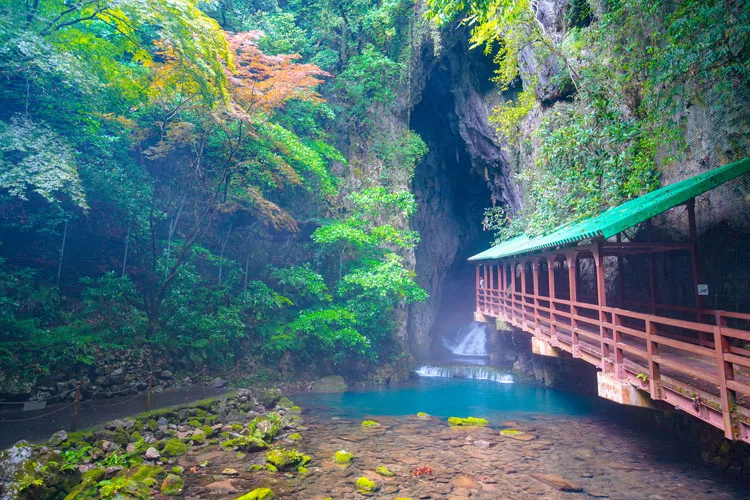
If you’re looking for an underground adventure, a visit to Akiyoshido Cave is a must. Located in Mine City, this limestone cave is the largest in Yamaguchi and offers visitors the chance to marvel at the impressive stalactites and stalagmites that have formed over thousands of years.
The cave is accessible via a walking path that winds through the underground chambers, with each turn revealing a new and breathtaking view. Visitors can also take part in guided tours to learn more about the cave’s history and geology. One of the highlights of the cave is the “Underground Waterfall”, a stunning feature that can be heard before it is seen. The waterfall drops from the ceiling of the cave and creates a misty atmosphere that adds to the cave’s otherworldly charm.
Official Website: https://karusuto.com/
Address: 3506-2 Shuhocho Akiyoshi, Mine, Yamaguchi 754-0511
5. Senjojiki
Hike to the scenic hexagonal rock formation in Mine City and take in the breathtaking view of the Sea of Japan.
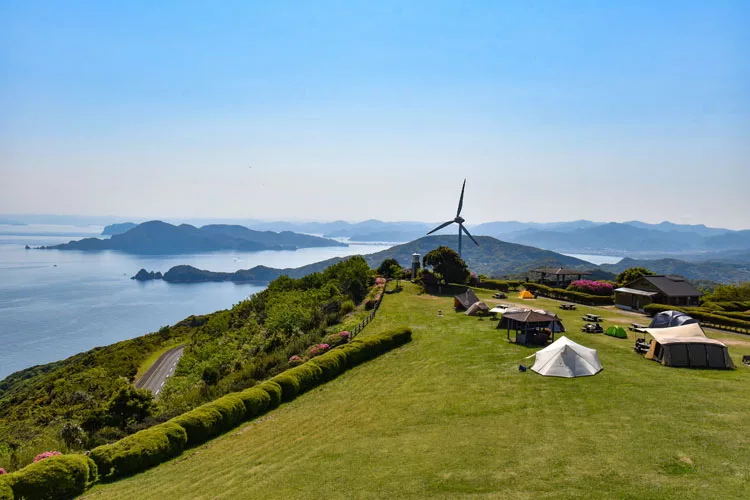
For nature lovers and outdoor enthusiasts, a visit to Senjojiki is a must. This scenic rock formation is located in Mine City and is famous for its unique hexagonal shape. Visitors can take a hike to the top of the formation and take in the breathtaking view of the Sea of Japan.
The hike itself is relatively easy and takes visitors through a forested area before reaching the top of the formation. Senjojiki is also a popular camping location. Once at the top, visitors can take a moment to appreciate the stunning view and snap some photos of the surrounding landscape. Overall, a visit to Senjojiki is a must for anyone looking to experience Yamaguchi’s natural beauty.
Official Website: https://visit-nagato.com/en/
Address: 1138-1 Heki-naka, Nagato, Yamaguchi Prefecture 759-4402
6. Mori Gardens
Relax in the serene traditional Japanese garden in Hofu City and appreciate the beauty of nature
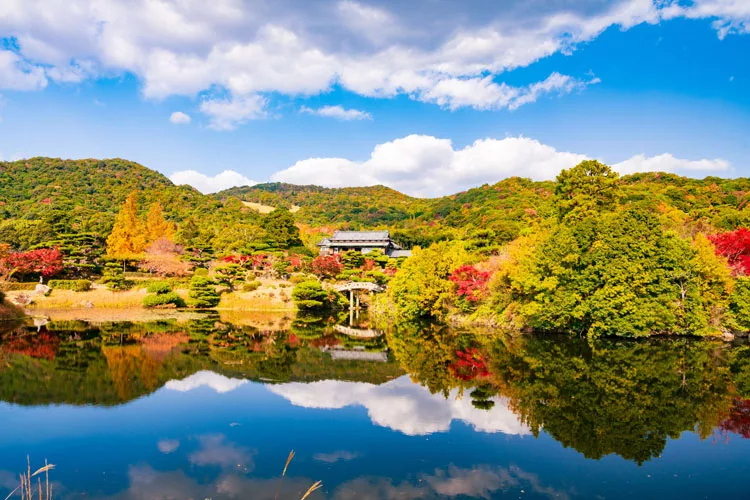
If you’re looking for a peaceful escape from the hustle and bustle of city life, a visit to Mori Gardens in Hofu City is a must. This traditional Japanese garden offers visitors the chance to relax and appreciate the beauty of nature.
The garden is designed in the traditional Japanese style, featuring carefully manicured landscapes, tranquil ponds, and a variety of plant life. Visitors can take a stroll through the garden’s paths, admiring the seasonal blooms and taking in the serene atmosphere. Mohri museum is also located in this garden, a visit to Mori Gardens is a peaceful and relaxing experience that shouldn’t be missed.
Official Website: https://www.c-able.ne.jp/
Address: 1 Chome-15-1 Tatara, Hofu, Yamaguchi 747-0023
7. Kaikyo Yume Tower
Admire the panoramic view of Kanmon Strait from the observation deck of the tower in Shimonoseki City.
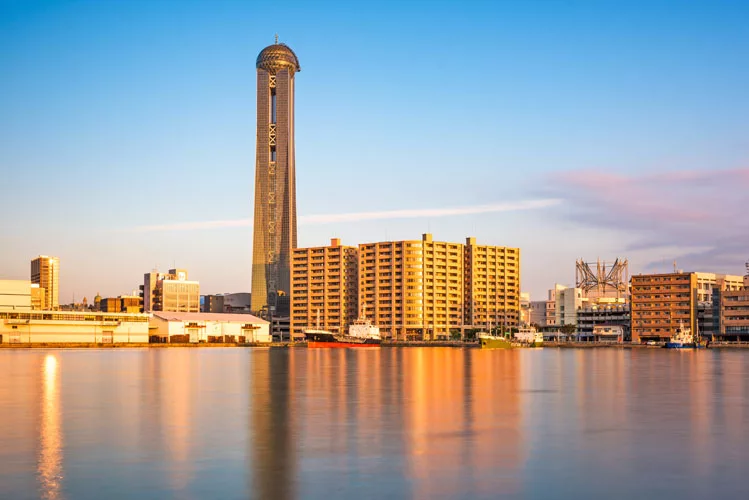
Kaikyo Yume Tower in Shimonoseki City is a must-visit attraction for those who enjoy breathtaking views. Standing at a height of 153 meters, this tower offers a panoramic view of the Kanmon Strait and the surrounding area from its observation deck.
The tower has two observation decks, one located at a height of 100 meters and the other at 143 meters, which offer a 360-degree view of the surrounding landscape. On clear days, visitors can see as far as the iconic Tsunoshima Bridge and the majestic Mount Chokai.
Official Website: https://www.yumetower.jp/
Address: 3 Chome-3-1 Buzendacho, Shimonoseki, Yamaguchi 750-0018
8. Beppu Benten Pond
Find tranquility at the scenic pond in Shimonoseki City and enjoy a peaceful walk
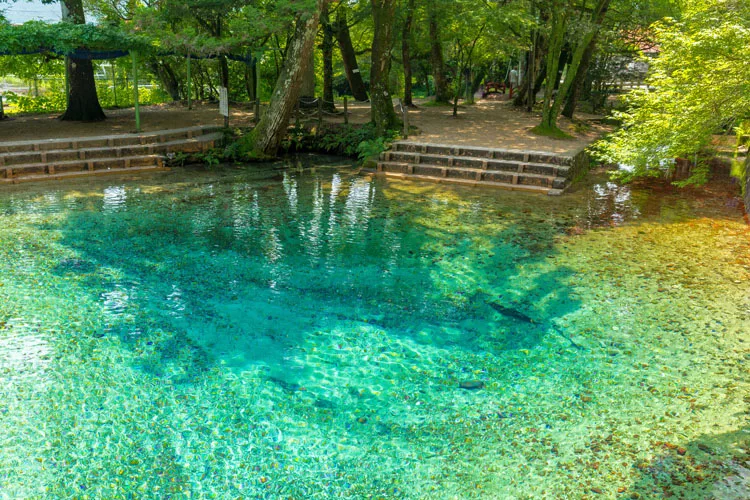
Beppu Benten Pond, located in Shimonoseki City, is a picturesque and peaceful spot that is perfect for a relaxing stroll. The pond is named after the goddess Benzaiten, who is said to have made an appearance at the pond.
Surrounded by lush greenery and trees, the pond is a popular destination for those who want to enjoy the tranquility of nature. Visitors can take a leisurely walk around the pond while enjoying the scenic view of the water and the surrounding landscape. The walking path is well-maintained and easy to navigate, making it accessible for visitors of all ages. Overall, Beppu Benten Pond is a hidden gem in Shimonoseki City and a must-visit for those who want to escape the hustle and bustle of the city and find tranquility in nature.
Address: 1578 Shuhocho Beppu, Mine, Yamaguchi 754-0603
9. Tsunoshima Lighthouse
Tsunoshima Lighthouse: Catch the sunset at the historical lighthouse on Tsunoshima Island and enjoy the stunning view of the sea
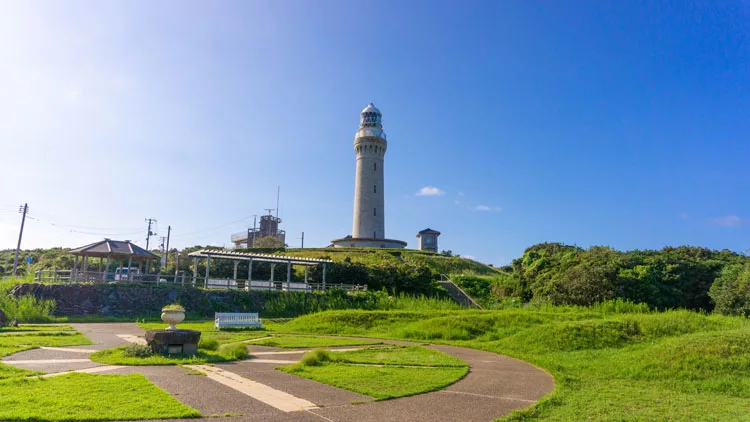
Tsunoshima Island, located off the coast of Yamaguchi Prefecture, is known for its picturesque scenery and beautiful beaches. At the top of the island sits the Tsunoshima Lighthouse, which offers a breathtaking view of the Sea of Japan.
The lighthouse, built in 1876, is an important historical landmark and one of the most popular tourist attractions on the island. Visitors can climb to the top of the lighthouse and take in the stunning panoramic view of the sea and surrounding landscape. It is especially beautiful during sunset, when the sky turns shades of pink and orange. A visit to Tsunoshima Lighthouse is a must for anyone visiting Yamaguchi Prefecture.
Official Website: https://www.tokokai.org/tourlight/tourlight11/
Address: 2343-2 Hohokucho Oaza Tsunoshima, Shimonoseki, Yamaguchi 759-5332
10. Shimonoseki Kaikyokan
Encounter diverse marine animals in Shimonoseki City and learn about their habitats.
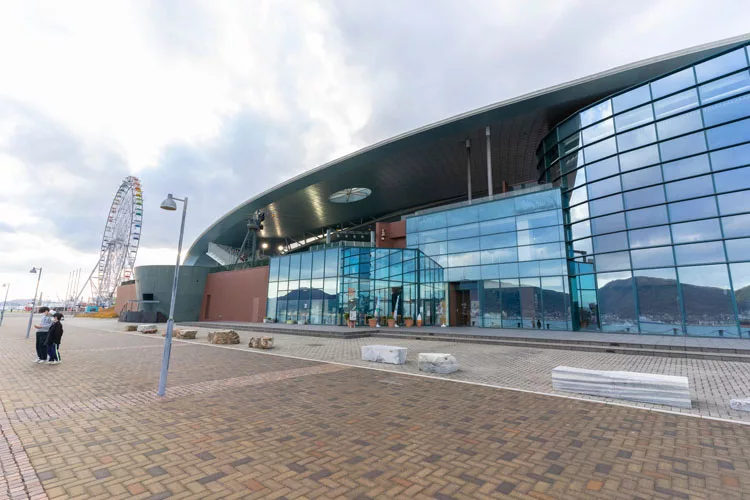
Shimonoseki Aquarium, also known as Kaikyokan, is a popular tourist attraction located in Shimonoseki City, Japan. The aquarium is home to a diverse range of marine life, including rare species such as the giant ocean sunfish.
One of the main attractions at Kaikyokan is the dolphin show, where visitors can watch these intelligent creatures perform acrobatic stunts and interact with their trainers. The aquarium also features a large tank that replicates the waters of the Kanmon Strait, where visitors can see various fish and other sea creatures native to the area. Whether you are a marine life enthusiast or just looking for a fun family outing, a visit to Shimonoseki Aquarium is a must-visit destination.
Official Website: https://www.kaikyokan.com/
Address: 6-1 Arukapoto, Shimonoseki, Yamaguchi 750-0036
11. Akiyoshidai International Art Village
Experience contemporary art in a unique setting in Mine City, surrounded by nature
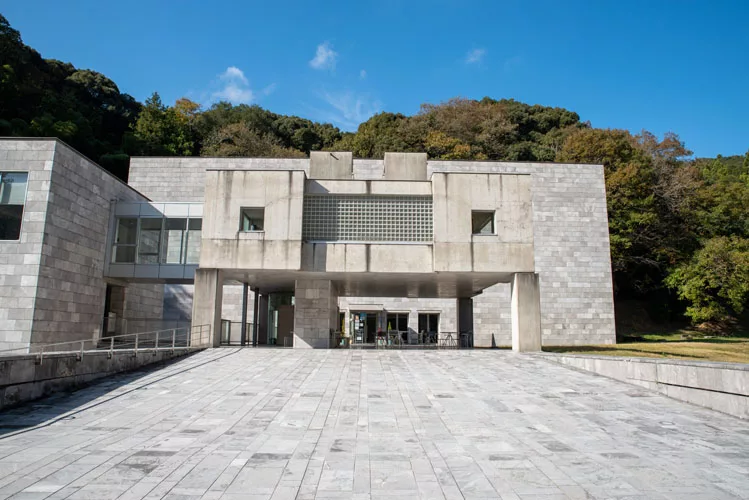
Akiyoshidai International Art Village is a must-visit destination for art enthusiasts. The art village is located in Mine City and offers visitors the opportunity to experience contemporary art in a unique setting surrounded by nature. The village features a collection of art installations and exhibitions that blend seamlessly with the natural landscape. You can take a leisurely walk around the village, enjoying the stunning scenery while taking in the artwork.
The art village is designed to inspire and stimulate creativity, with many of the installations being interactive and immersive. The Akiyoshidai International Art Village is the perfect destination for anyone looking to escape the hustle and bustle of the city and immerse themselves in a world of art and nature.
Official Website: https://aiav.jp/
Address: 50 Shuhocho Akiyoshi, Mine, Yamaguchi 754-0511
12. Yamaguchi Xavier Memorial Church
Discover the beauty and history of the Yamaguchi Xavier Memorial Church
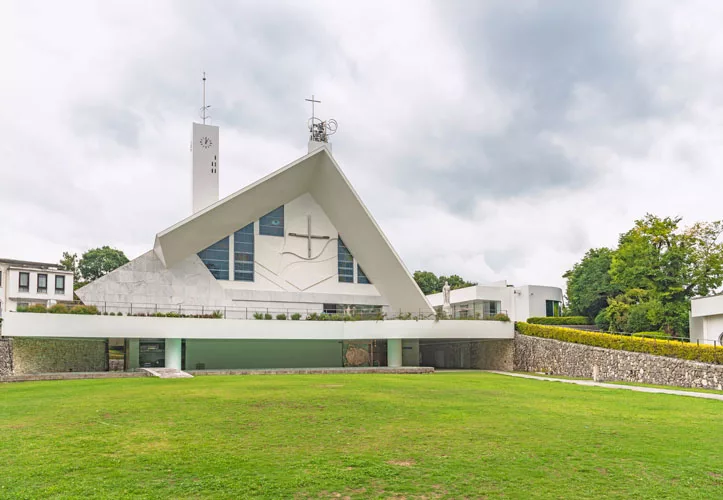
Yamaguchi Xavier Memorial Church, located in Yamaguchi City, Japan, is a stunning example of Catholic architecture. The church is dedicated to St. Francis Xavier, one of the first Jesuit missionaries to arrive in Japan in the 16th century. The church was built in his honor and completed in 1955.
The church’s design is a fusion of Western and Japanese styles, with a unique roof inspired by traditional Japanese architecture. The interior is adorned with beautiful stained glass windows and intricate wood carvings, creating a serene and peaceful atmosphere for worship and reflection. The church is not only a place of worship but also a popular tourist attraction, drawing visitors from around the world to admire its beauty and historical significance.
Official Website: http://www.xavier.jp/
Address: 4-1 Kameyamacho, Yamaguchi, 753-0089
Yamaguchi prefecture offers a variety of unique and stunning attractions for travelers to explore. From natural wonders like Akiyoshido Cave and Senjojiki to cultural landmarks such as Iwakuni Castle and Motonosumi Inari Shrine, there is something for everyone. Visitors can also learn about marine life at Kaikyokan and enjoy the scenic views from Kaikyo Yume Tower and Tsunoshima Lighthouse. And for those seeking a tranquil escape, Mori Gardens and Beppu Benten Pond offer a serene atmosphere. Akiyoshidai International Art Village provides a unique and thought-provoking art experience in a beautiful natural setting. With so much to offer, Yamaguchi is a must-visit destination for anyone interested in exploring the beauty and culture of Japan.
Where to stay in Yamaguchi for Sightseeing
You may wonder where to stay for sightseeing in Yamaguchi. Whether you’re looking for luxury, mid-range or budget accommodation, we have got you covered. Here is our list of top hotels to stay in Yamaguchi for an unforgettable sightseeing experience.
Luxury Hotels:
Matsudaya Hotel : A 13-minute walk from Yudaonsen train station, this inn famous for its connection with the revolutionaries of the Meiji Restoration “Ishin no shishi” dating from 1860 with a modern annex, is 4 km from Rurikō-ji Temple and 3 km from the Yamaguchidai Shrine. There’s a communal bathhouse with natural hot spring water and open-air bathing. Other amenities include a cozy lounge, a museum and a 300-year-old garden. Feel a historical atmosphere as you relax and enjoy your stay.
Cent Core Yamaguchi : Is a 3-star hotel, Situated in Yamaguchi. An urban hotel where you can enjoy the atmosphere and nature of Yuda Onsen. Its sauna and hot spring baths are famous among the Japanese. A typical Japanese cuisine is served for dinner. One of the fabulous place to feel Japan in its own kind.
Mid-Range Hotels:
Yudaonsen UBL Hotel Matsumasa : Is a Japanese-style Ryokans hotel. It ranks 1 st in Shin-yamaguchi. This hotel offers the most popular Japanese Kaiseki meal. Experience a great refuge from Home Life. A day trip to experience the traditional essence of Japan. It offers variety of luxurious room.
Hotel New Tanaka : A revolutionary hotel from sightseeing to business. A calming hotel with 175 rooms offers a popular winter plan “winter-kagozen”. Also, Most gorgeous place to plan your wedding with a Japanese garden and this is a sure place to accommodate your guest and have a blast.
Budget Hotels:
Super Hotel Yamaguchi Yudaonsen : Are you an individual whose financial capacity does not allow for indulgence in high-end hospitality services, yet you still yearn for such an experience? Super Hotel Yamaguchi Yudaonsen is a best choice. Recently opened in 2021, also Equipped with 100% free-flowing natural hot springs.
Toyoko Inn Shin-yamaguchi-eki Shinkansen-guchi : Ranks 9 th Budget friendly hotel in Yamaguchi. Breakfast is free. Best choice for a business trip, personal trip, and family trip.
What is Yamaguchi known for?
Yamaguchi is known for its scenic beauty, historical landmarks, and cultural significance. It is also famous for its traditional crafts and delicious cuisine.
What are the top-rated attractions in Yamaguchi?
The top-rated attractions in Yamaguchi include Kintai Bridge, Motonosumi Inari Shrine, Iwakuni Castle, Akiyoshido Cave, Senjojiki, Mori Gardens, Kaikyokan, Kaikyo Yume Tower, Beppu Benten Pond, Tsunoshima Lighthouse, Shimonoseki Aquarium, and Akiyoshidai International Art Village.
How do I get to Yamaguchi?
Yamaguchi can be easily reached by train or bus from major cities in Japan. The Shinkansen bullet train stops at Shin-Yamaguchi Station, which is the gateway to Yamaguchi. Yamaguchi Ube Airport also has domestic flights from major cities in Japan.
What is the best time to visit Yamaguchi?
The best time to visit Yamaguchi is during spring (March to May) and autumn (September to November) when the weather is mild and the foliage is at its peak. However, each season in Yamaguchi has its own charm, and visitors can enjoy the region’s attractions year-round.
What are some traditional souvenirs to buy in Yamaguchi?
Some traditional souvenirs to buy in Yamaguchi include lacquerware, pottery, sake, locally produced seafood, and confectionery such as “Iwakuni-zanmai,” a type of sweet made with local ingredients.
Recommended Passes
Regions of japan, other posts.

Fukui: 12 Best things to do in Fukui Prefecture

Tottori: 12 Top-Rated things to do in Tottori
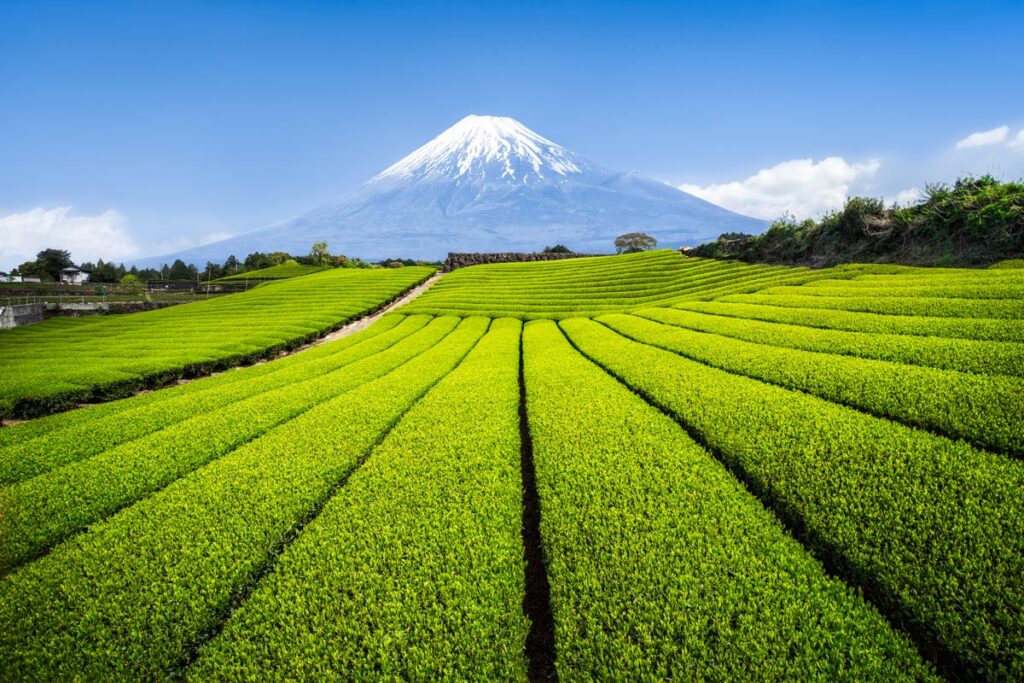
Shizuoka: 12 Best Things to do in Shizuoka

The Ultimate Guide to the Best Credit Cards in Japan for Foreigners: 2024 Edition
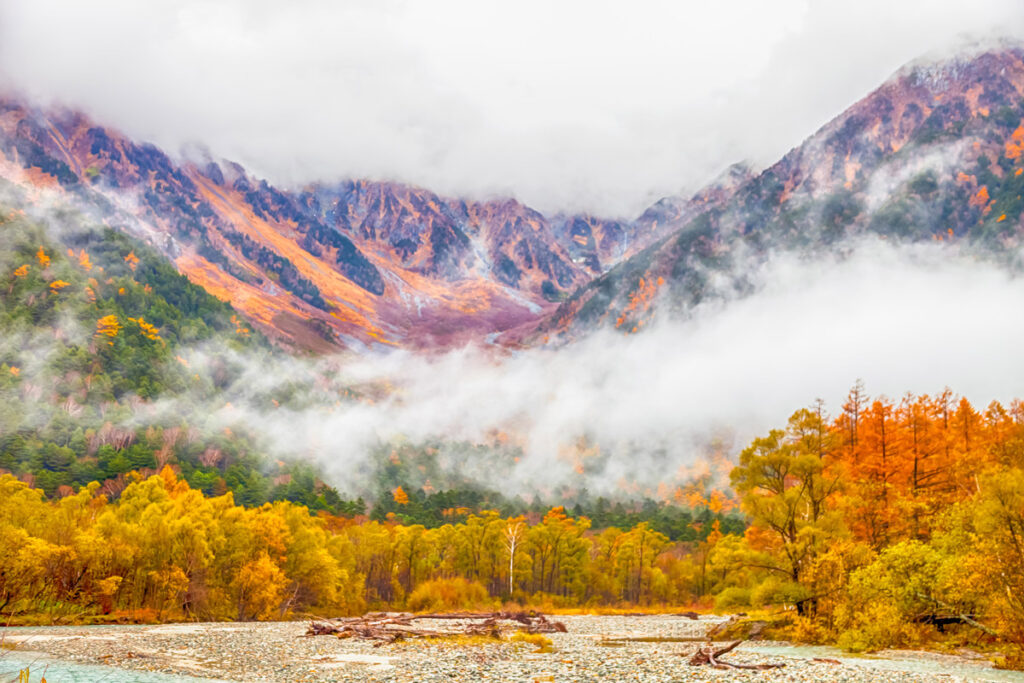
Nagano: 12 Top-Rated Things to do in Nagano
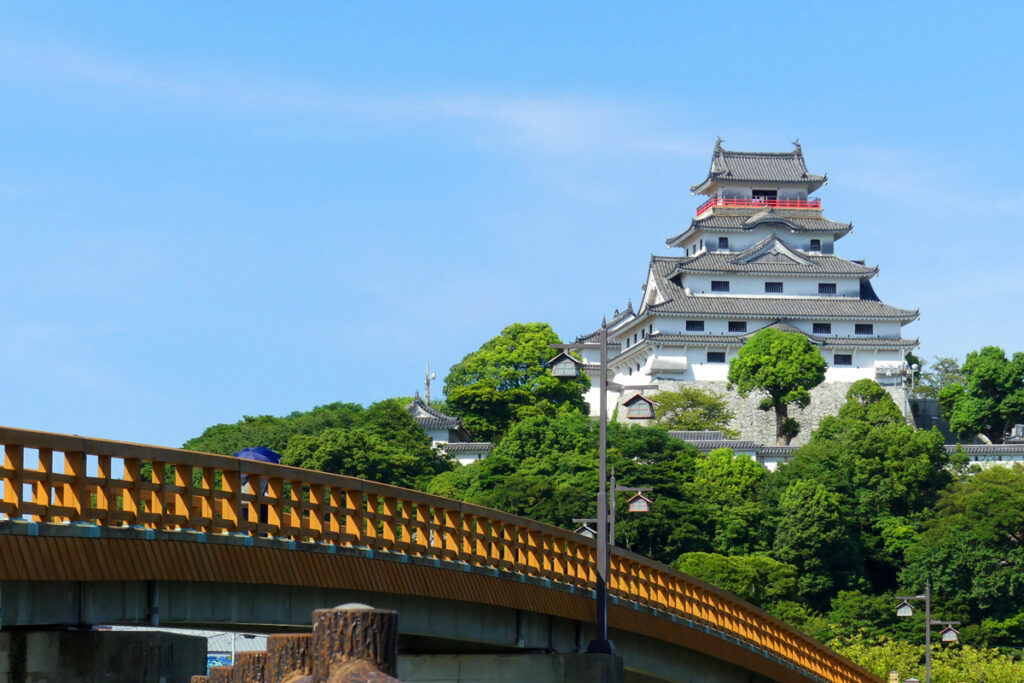
Saga: 12 Top-Rated Things to do in Saga
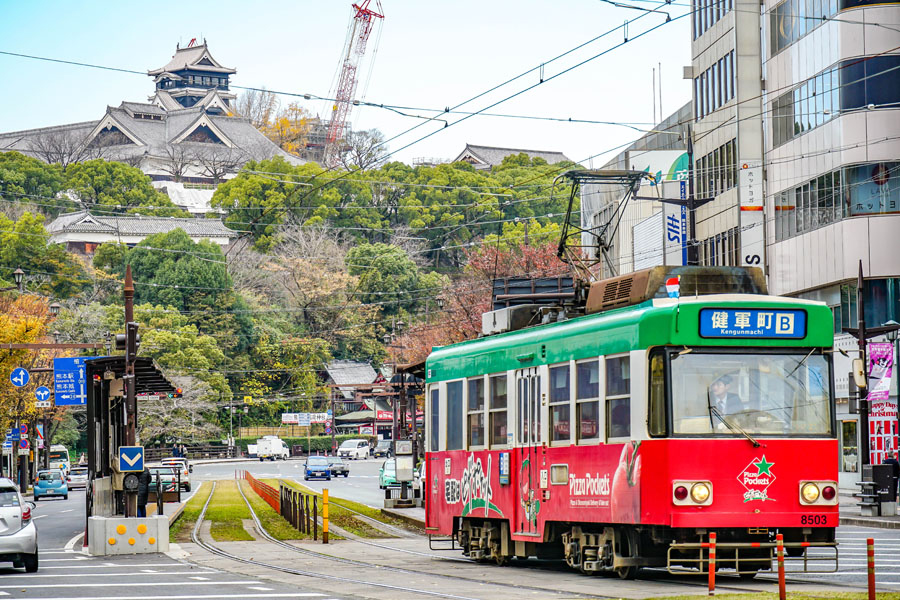
Kumamoto: 12 Top-Rated Things to do in Kumamoto

Ishikawa: 12 Top-Rated Things to do in Ishikawa

Oita: 12 Top-Rated Things to do in Oita
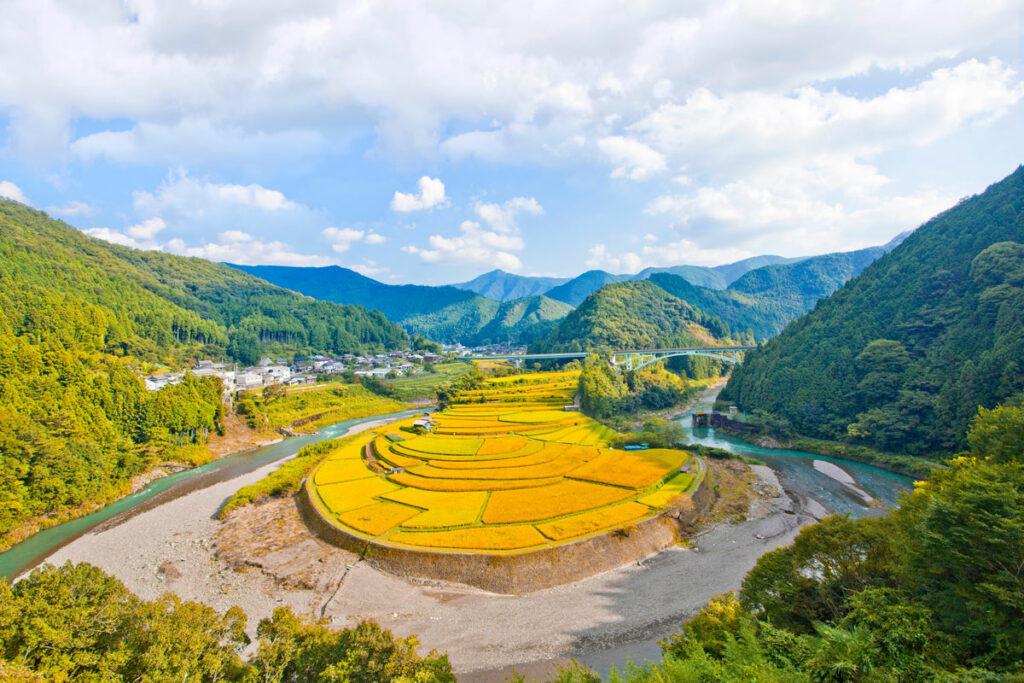
Wakayama: 12 Best things to do in Wakayama Prefecture
- Skip to main content
- Skip to primary sidebar

Destinations
- Plan Your Trip
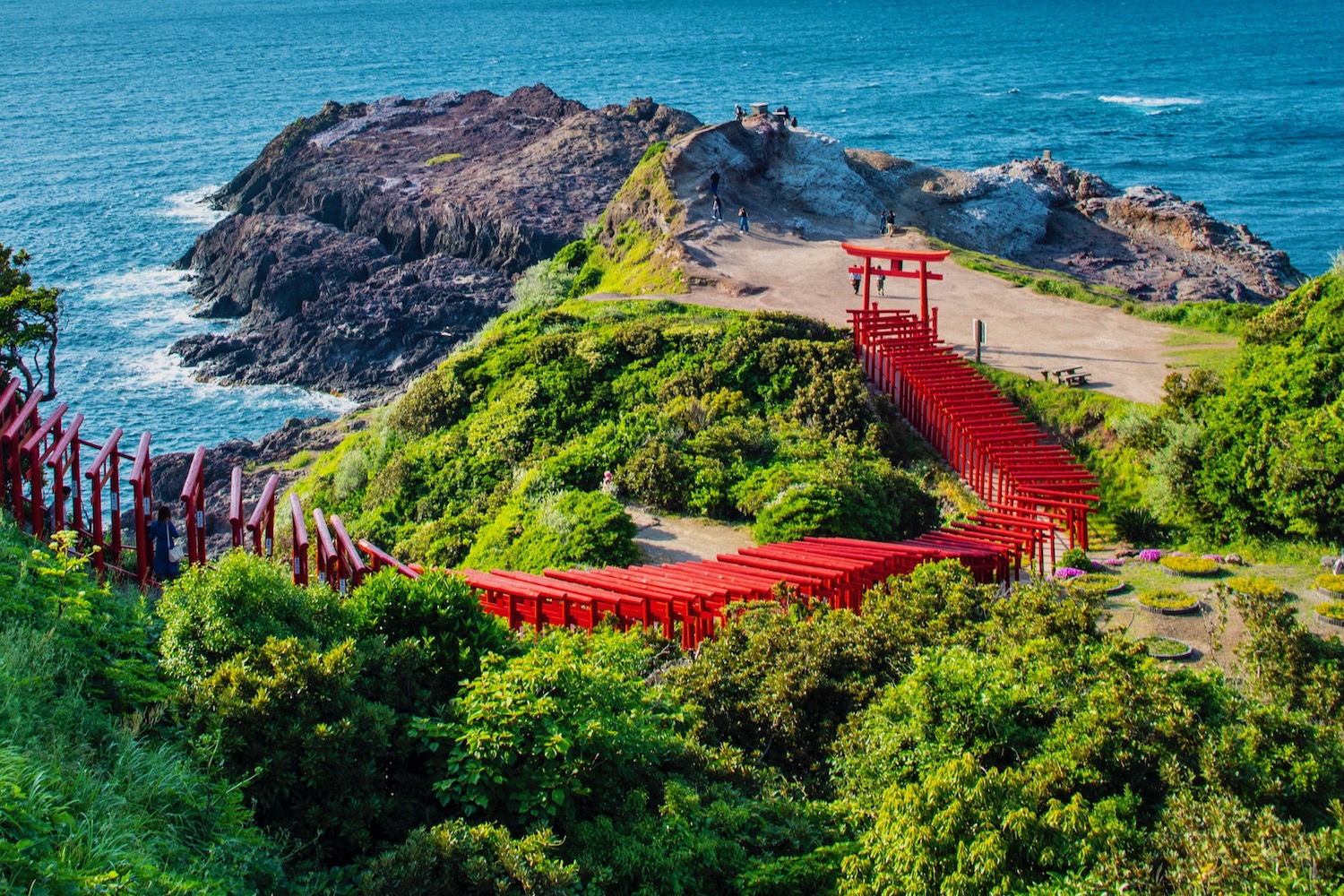
Yamaguchi Starts Here
There are few parts of Japan less-often visited than Yamaguchi, the westernmost prefecture of Honshu island. In some ways—logistical one—this is understandable: The Shinkansen barely runs through here; Yamaguchi is between Fukuoka and Hiroshima , two places that are by contrast very high up on most travelers’ lists.
In another way, of course, Yamaguchi’s lack of favor among most visitors to Japan is regrettable. As you’ll see reading the next few paragraphs, Japan’s “wild west” is a treasure trove of unique cuisine, culture, scenery and cityscapes.
If you’re already planning a trip there, my Yamaguchi travel guide should make it much easier for you to finalize your plans. If you’re simply seeking inspiration…well, I offer that in spades as well.
Why So Many Travelers Skip Yamaguchi
There are two basic ways to get from Tokyo to Yamaguchi, neither of which are especially fast. If you don’t take one of the infrequent flights from Haneda to Yamaguchi-Ube Airport, you need to ride a Shinkansen. Well, two Shinkansen trains: Since the super-fast Nozomi doesn’t stop anywhere in Yamaguchi prefecture, you’ll need to transfer in Hiroshima to the slower Sakura or Kodama trains.
There’s also the matter of getting around in Yamaguchi, which outside of major cities like Shimonoseki and Yamaguchi usually requires renting a car, or knowing enough Japanese to be able to navigate cumbersome local bus networks. While I’ll admit that this is exactly as fun as it sounds, I’ll also let you in on a secret: Yamaguchi is completely worth the stress you sometimes incur when you explore it.
The Best Things to Do in Yamaguchi
Say a prayer at motonosumi inari shrine.
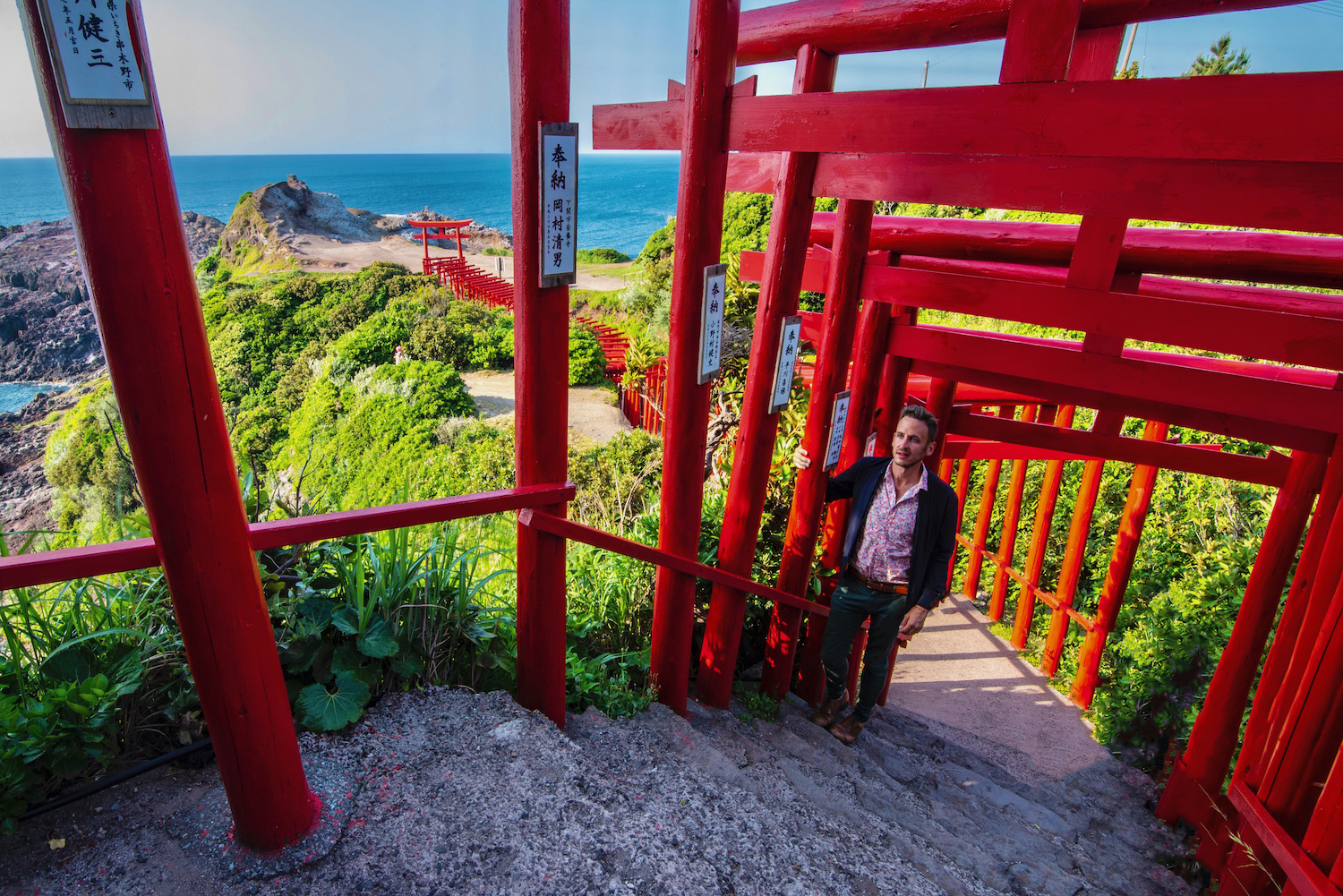
Sometimes known as “Fushimi Inari by the Ocean,” Motonosumi Inari Shrine is one of Japan’s most enchanting destinations. Built in 1955 to honor a local fox spirit, it features 123 red gates, which undulate in a dragon-like arrangement over bluffs leading down to the Sea of Japan. For my money, this is the most impressive place you can visit during your time in Yamaguchi prefecture.
Eat fugu in Shimonoseki

I was scarred by the famous Simpsons episode— this one —in the 90s, which means that I’ve had a lifelong fear of fugu . As a regular, even though shop owners in Shimonoseki city assured me that their Yamaguchi food was safe, I opted against eating it as sashimi . I even waited in the shop for 15 minutes after I’d finished eating so that they could call an ambulance if necessary (it obviously wasn’t).
See the sea at Tsunoshima Bridge

Although it’s located almost an hour away from central Shimonoseki by car, Tsunoshima Bridge is technically within the city from an administrative perspective. Visually, of course, it’s a completely different story. From the emerald hues Tsu-no-shima island’s greenery gives off to the fluorescent blue of the island, it almost feels like you’re in Okinawa rather than mainland Japan.
(Or the mountains at Kintai Bridge)
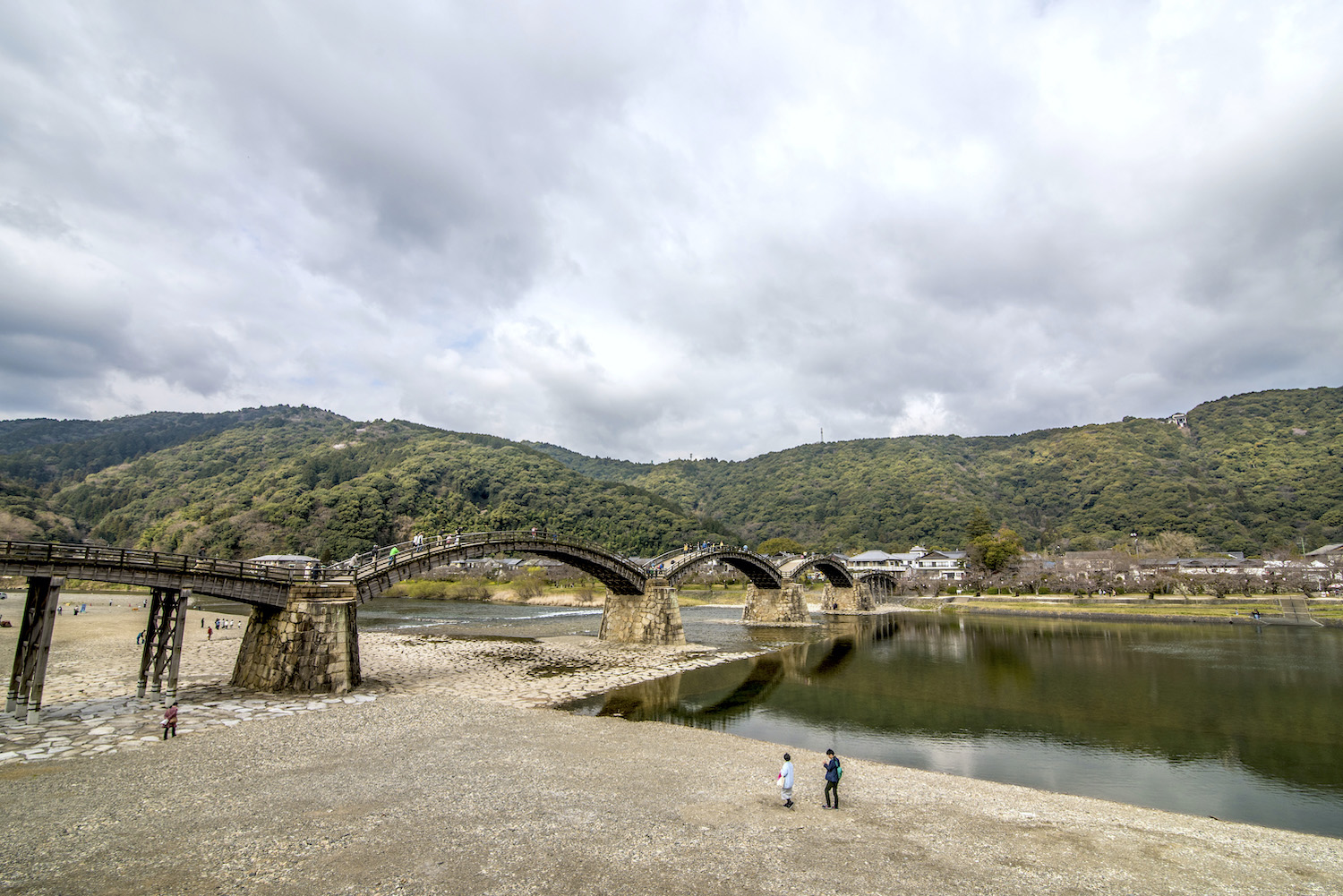
This Yamaguchi tourist spot has a special place in my heart, since I first came here a decade ago during my first trip to Japan, on a day trip from nearby Hiroshima. Built in 1673, this historical bridge is Japan’s largest and most impressive surviving wooden hashi , which looks especially beautiful amid the sakura of spring but is gorgeous no matter when you visit. Conveniently, it’s just a short bus ride from the Shin-Iwakuni Shinkansen station.
Cool off at Beppu Benten Pond
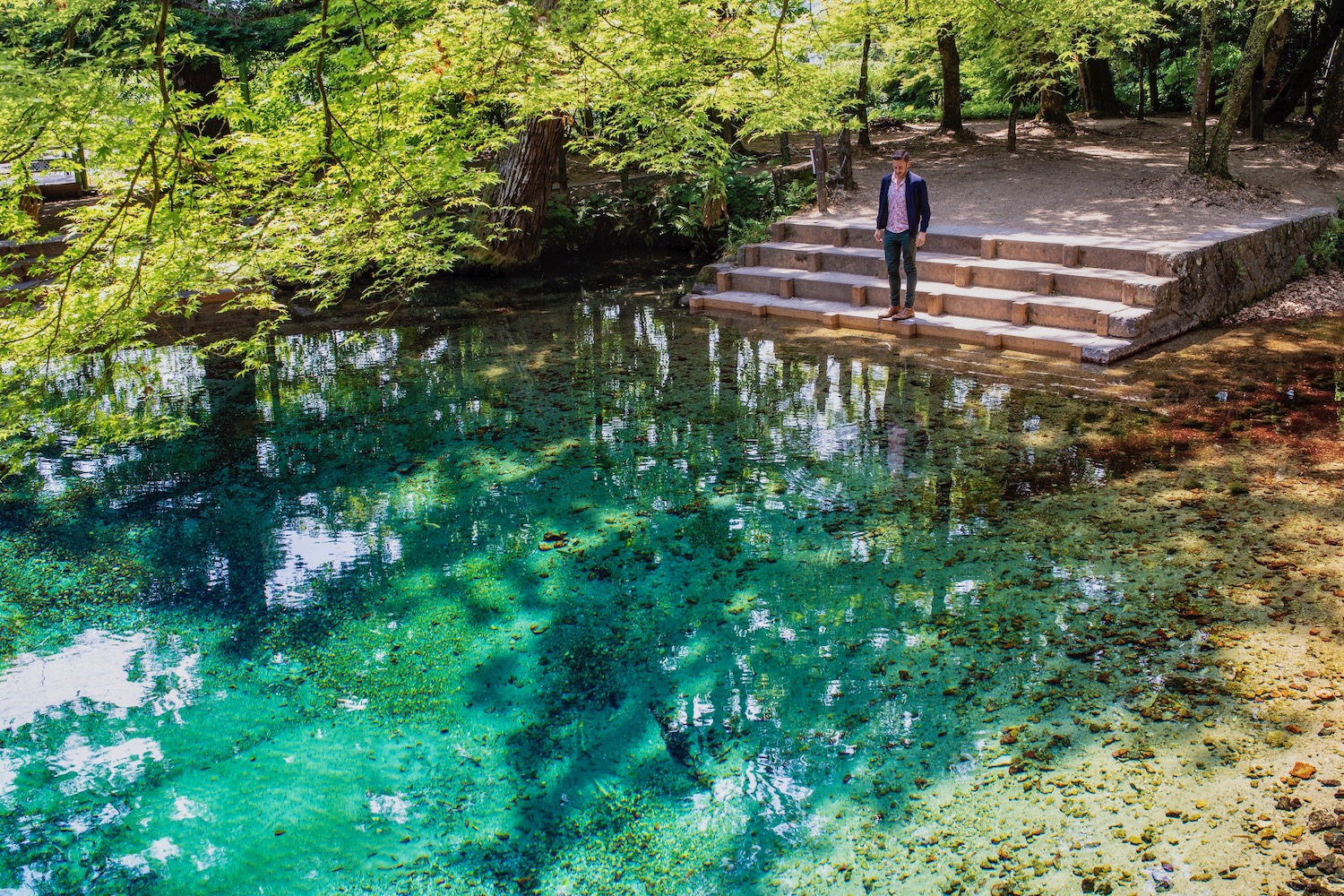
Beppu Benten Pond, on the other hand, requires a bit more cumbersome journey to reach. Not to be confused with the onsen mecca of Beppu on Kyushu island , this pond is quite literally in the middle of nowhere, which—don’t worry—is part of its appeal. If you’re staying in Yamaguchi city, you can stop here in the early morning after setting off, before visiting Motonosumi Inari in the afternoon.
Where to Base Yourself in Yamaguchi
In most cases, it makes sense for travelers to stay in one of Yamaguchi’s larger cities. I mean, assuming you don’t visit your destination of choice as a day trip from Hiroshima, Fukuoka or even Matsue, which is a totally realistic option in certain cases. Near Shin-Yamaguchi Station, the simple (but not-quite-spartan) Comfort Hotel will get the job done, while I usually advise travelers to Shimoseki to choose the Dormy Inn .
The other option, of course, is to choose a property in a more rural part of the prefecture, which is realistically only on the table if you rent a car. Hagi-no-yado Tomoe is near the Hagi Samurai district. Alternatively, you could choose Trip Base Coconeel near Beppu Benten Pond, though I wouldn’t recommend staying here the night before you travel back from Yamaguchi to Tokyo.
Other FAQ About Visiting Japan’s Yamaguchi Prefecture
How many days in yamaguchi.
Yamaguchi prefecture is larger than it looks on the map. And since local trains and buses are slow-going (to say nothing of local speed limits), it takes longer to cover ground here than it might in more populous areas of Japan. Depending on how many places on my Yamaguchi itinerary you end up visiting, I’d suggest spending between 2-5 days in Yamaguchi.
What is Yamaguchi famous for?
Yamaguchi is known first and foremost for being the origin of fugu, the Japanese pufferfish that’s lethal if prepare improperly (which it almost never is in Yamaguchi—it’s just delicious). Beyond this, travelers love to visit Yamaguchi for Motonosumi Inari Shrine, which is sometimes known as “Fushimi Inari by the Sea” and for the centuries-old Kintai Bridge.
Is Yamaguchi worth visiting?
Yamaguchi is absolutely worth visiting, particularly if you’ve already visited Japan several times and are eager to get off the beaten path. Not that you need to be a Japan expert to appreciate it: I took a day trip from Hiroshima to Kintai Bridge on my very first trip to Japan a decade ago!
The Bottom Line
I hope you’ve found my Yamaguchi travel guide valuable, whether you were planning a trip to the prefecture and needed clarity, or even if the thought of coming here had never previously crossed your mind. From the fugu shops of Shimonoseki city to the vermillion gates of Motonosumi Inari Shrine, and from the crystalline waters of Beppu Benten Pond to the centuries-old wooden ties of Kintai Bridge, Yamaguchi will impress you, even if you’re literally expecting nothing at this point. Make sure your next trip to Japan knocks your socks off, no matter where you’re headed— consider hiring me to plan it.
Plan Your Japan Trip

Subscribe to email updates!
Words, images and design ©2018-2024 Robert Schrader, All rights reserved. Read Privacy Policy or view sitemap .
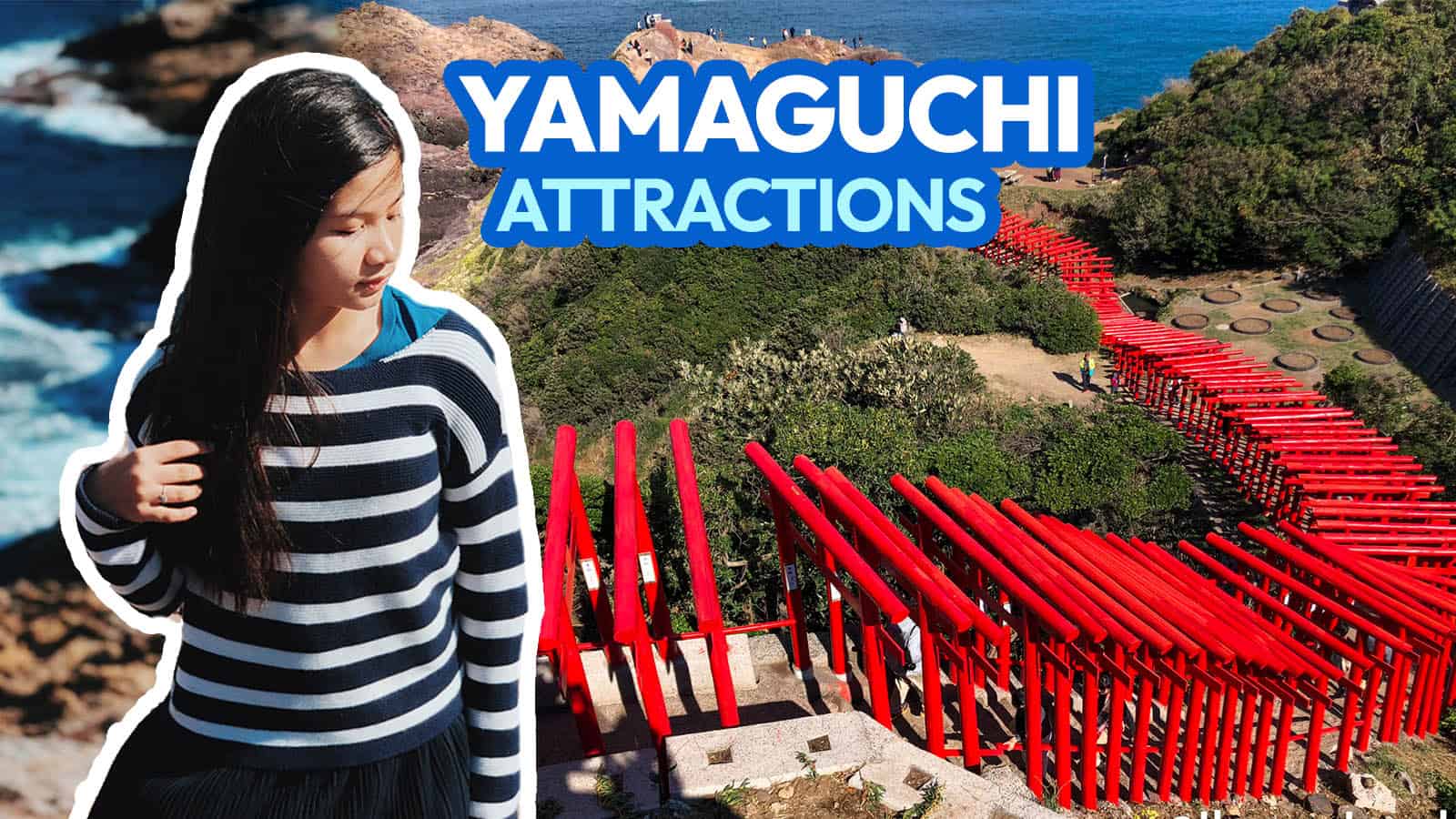
YAMAGUCHI, JAPAN: 15 Best Things to Do & Places to Visit

One of the best things about Japan is that it’s bursting with places to see and things to do wherever you go. It’s expected when it comes to global tourism favorites like Osaka and Tokyo. But even destinations that are virtually unheard of among international tourists also have so much to offer. Case in point: Yamaguchi .
Punctuating the southwestern tip of Honshu Island, Yamaguchi Prefecture is often overlooked in favor of its more recognizable neighbors — Fukuoka to the south and Hiroshima to the north. Most travelers coming from Fukuoka Airport on their way to Hiroshima usually just breeze through it without giving it a second look. This is why Yamaguchi often surprises visitors.
The prefecture’s history has a strong link to the samurai ruling class. Today, it is one of the most industrialized prefectures in the country. It attracts tourists to its lush natural parks, coasts, and cultural sites. The most popular destinations are Yamaguchi City, Shimonoseki, Iwakuni, Hagi City, and the Akiyoshidai Quasi-National Park.
If you are adding Yamaguchi in your itinerary, here are some of the things to do and places to visit.
WHAT'S COVERED IN THIS GUIDE?
1. Motonosumi Inari Shrine
Adorning the coast of Yuyatsuo in the coastal city of Nagato in the north, Motonosumi Inari Shrine is included in CNN Travel’s list of “31 Most Beautiful Places in Japan.”. Its most striking feature is the path of red torii gates leading to the coast and the rock formations below. The contrasting deep red color of the traditional torii gates against the green woods and the blue waters of the Sea of Japan is a sight to behold.
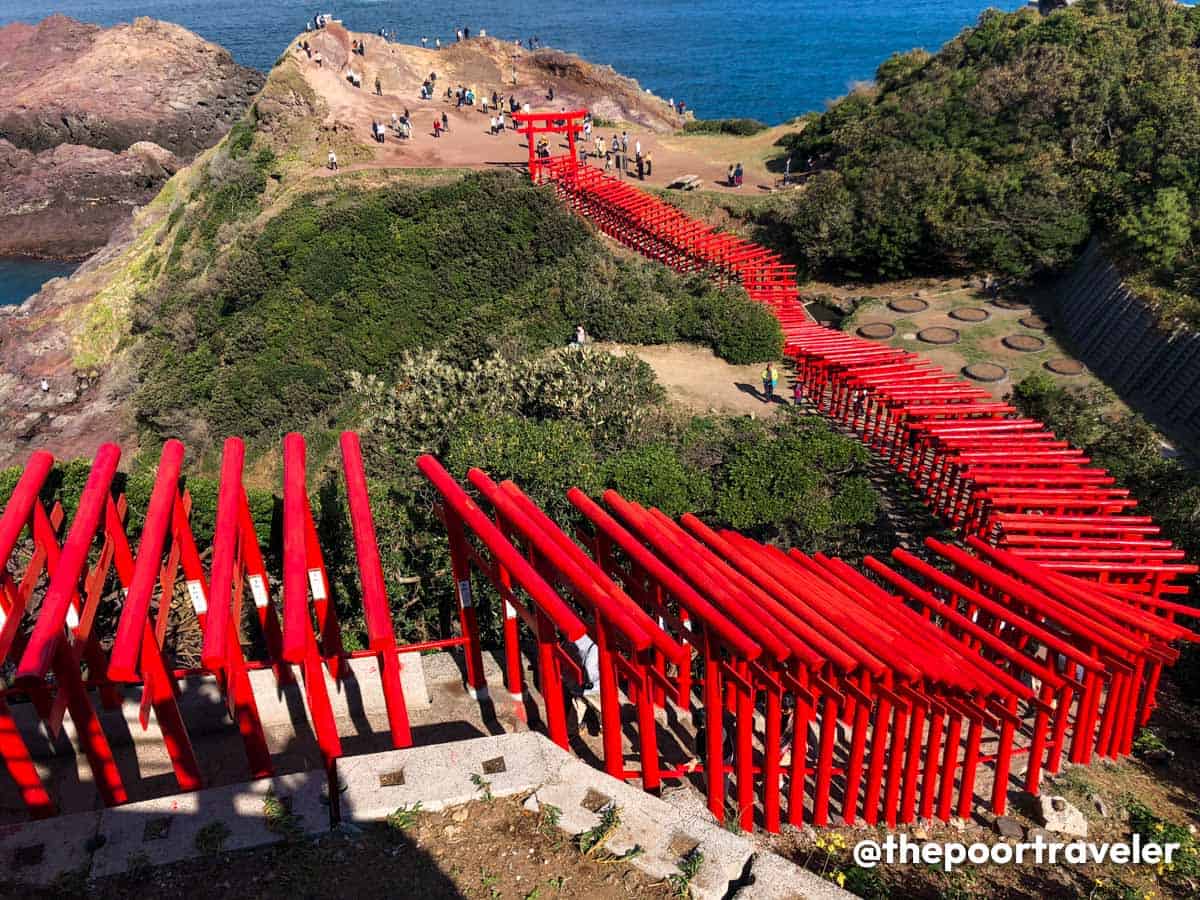
The construction of the shrine started in 1987, forming a tunnel of 123 torii gates crawling from the hilltop entrance down the rocky coast. But the most notable of them all is the tallest one with an offertory box perched high above. Visitors believe that their wish will be granted if they successfully toss a coin into the box.
Another attraction in the vicinity is the Ryūgū Wave Splash , just a few meters from the last torii gate at the base.
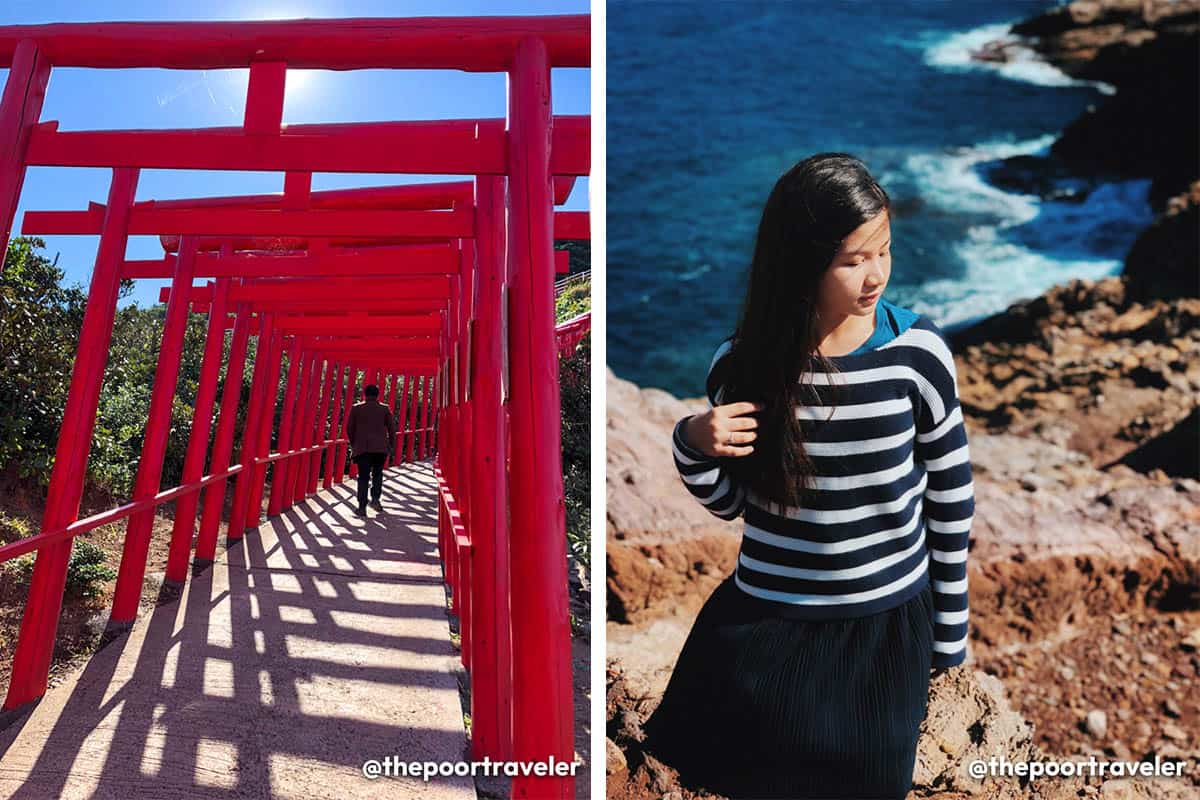
Location: 498 Yuyatsuo, Nagato, Yamaguchi Prefecture 759-4712, Japan Opening Hours: 5:30 AM – 5:30 PM (Daily). Basically, the shrine is open from sunrise to sunset, so hours miht differ. Admission: FREE Nearest Station: Nagato-Furuichi Station or Hitomaru Station. Note that you might need to hail a taxi because access to the shrine via public bus is very challenging and limited. Official Website: www.motonosumi.com
2. Tsunoshima Bridge
On the northwest coast of Yamaguchi Prefecture, a scenic bridge stretches 1,780 meters over Amagaseto Strait , connecting the mainland to Tsunoshima Island, a resort island off the coast of Shimonoseki. Curving slightly to avoid the spot occupied by a small uninhabited island (Hato Island), the bridge is hailed as the second-longest in Japan.
View this post on Instagram A post shared by しっぽ〆 (@chipdale320)
Officially opened in November 2000, the bridge starts at Hōhoku in Shimonoseki. Both ends of the bridge are adorned by parks — Amagase Park in Shimonoseki and Sezakiyono Park on Tsunoshima Island.
Although tourists cannot cross the bridge on foot, the scenic drive is one of its draws aside from the attractions on the island. Amagase Park in Shimonoseki features the Tsunoshima Observatory and other viewpoints.
Location: Hohokucho Oaza Tsunoshima, Shimonoseki, 〒759-5332 Yamaguchi, Japan Nearest Station/Stop: Shimonoseki Station, Takibe Station, Hotel Nishinagato Bus Stop
3. Tsunoshima Island
Situated northwest off the coast of Yamaguchi Prefecture, the island is under the jurisdiction of Shimonoseki and is part of the Kita-Nagato Kaigan Quasi-National Park . Before the construction of the Tsunoshima Bridge, the island was linked to the mainland by ferry. The bridge contributed largely to the island’s tourism industry by making it a lot easier to access.
Some of the Tsunoshima Island’s points of interest are Shiokaze Cobalt Blue Beach, Tsunoshima Ohama Beach, Tsunoshimaohama Camping Ground, Tsunoshima Lighthouse, Makizakikazeno Park, and other parks.
The island is also a popular film and ad shooting location. Camping and sports fishing are some of the common activities on the island.
Location: Hohokucho Oaza Tsunoshima, Shimonoseki, Yamaguchi 759-5332, Japan Nearest Station/Stop: Shimonoseki Station, Takibe Station, Kottoi Station, Tsunoshima Bus Stop
4. Kintai Bridge
Originally constructed in 1673 leading to the main gate of Iwakuni Castle, the Kintai Bridge is one of the most remarkable historic landmarks in Yamaguchi.
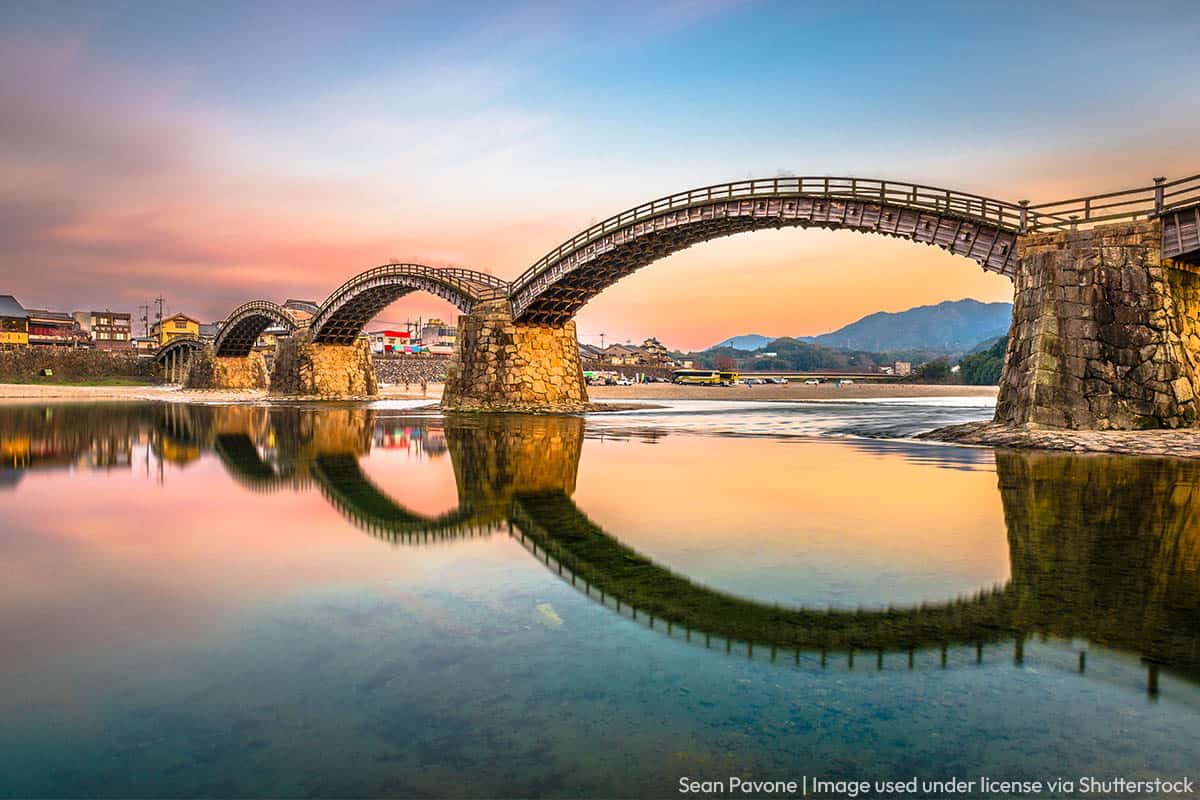
Part of the Kikkou Park , the bridge stretches about 200 meters in length and crosses over Nishiki River. It is well-known for its series of five wooden arches supported by four stone piers and two wooden piers on each end of the bridge. It underwent several reconstruction over the years. It was recognized as a National Treasure in 1922.
Kikkou Park is a popular hanami (flower viewing) spot during the cherry blossom season and momiji (Japanese maples) viewing destination during the autumn season.
Location: Iwakuni, Yamaguchi 741-0062, Japan Opening Hours: Bridge 24/7; Ticket Booth 8:00 AM – 6:00 PM (Summer), 8:00 AM – 5:00 PM (Winter). If you visit outside the ticket booth operating hours, kindly drop your payment in the toll/ticket box provided. Note that the opening schedule might change, so check for updates and announcements prior to your visit. Admission: ¥310 (Adults), ¥150 (Children) Nearest Station/Stop: Nishi-Iwakuni Station, Iwakuni Station, Kintaikyo Bus Stop Official Website: www.kintaikyo.iwakuni-city.net

5. Iwakuni Castle
Also part of the Kikkou Park, Iwakuni Castle is nestled on Mount Yokoyama, overlooking the city and the Seto Inland Sea. Commissioned by Kikkawa Hiroie to serve as his official residence, the original castle was completed in 1608. However, it was demolished in 1615 following the Tokugawa Shogunate’s policy of “one castle per province.”
The current four-story structure dates back to 1962. The castle also hosts a collection of samurai-related artifacts.
From Kikkou Park, you can reach the castle either on foot or via ropeway.
Location: 3 Chome Yokoyama, Iwakuni, Yamaguchi 741-0081, Japan Opening Hours: Castle 9:00 AM – 4:45 PM (Daily); Ropeway 9:00 AM – 5:00 PM (Daily), CLOSED (Inspection/Maintenance Day). Note that the opening schedule might change, so check for updates and announcements prior to your visit. Admission: ¥270 (Adults), ¥120 (Children) Nearest Station/Stop: Nishi-Iwakuni Station, Iwakuni Station, Kintaikyo Bus Stop Official Website: www.kankou.iwakuni-city.net
6. Iwakuni Sushi
While in the Kikkou Park area, don’t miss Iwakuni’s popular specialty dish — Iwakuni sushi . In form, this layered pressed sushi (oshizushi) looks like a savory cake.
View this post on Instagram A post shared by Domechan (@domechan.it)
There may be variations but the original basic ingredients are sushi rice, Iwakuni Renkon lotus root, denbu (or fresh fish), thinly sliced eggs, and mushrooms. These ingredients are then pressed together using a wooden sushi mold. The sushi is served by slicing the “sushi cake” into small pieces by layer.
It’s sold and served at restaurants and stalls in Kikkou Park, particularly around the Kintai Bridge area.
7. 100 flavors of ice cream at Musashi
WARNING: This is not for the indecisive! But if you have so much time on your hands, then enjoy browsing through the menu boards for the ice cream flavor that will catch your interest.
You may go for the classic flavors or the odd one if you are feeling bold. A hundred flavor of ice cream might be a bit overwhelming, right? No worries! There are lists of ice cream flavors grouped by category: bestsellers, seasonal limited flavors, special flavors, and new flavors. Flavors are also categorized per ice cream base: fruit-based, tea-based, and more.
View this post on Instagram A post shared by Ali McHodgkins-Cudd (@davidandali)
Musashi Ice Cream is located at the other end of the Kintai Bridge. Look for the second establishment to your left facing Kikkou Park. The price range for the regular flavor soft-serve ice cream is ¥200 – ¥400.
Location: 2 Chome-1-23 Yokoyama, Iwakuni, Yamaguchi 741-0081, Japan Opening Hours: 9:00 AM – 4:30 PM (Monday, Wednesday – Sunday); CLOSED (Tuesdays). Note that opening hours might vary and change without prior notice. Price Range: ¥200 – ¥400 (Regular Flavors)
8. Akiyoshidai Quasi-National Park
Established in 1955, the Akiyoshidai Quasi-National Park is a protected area covering about 45 square kilometers of karst plateau and vast grassland.

The park’s most famous feature is the Akiyoshidō , the longest cave in Japan and one of the longest in Asia. The cave spans almost nine kilometers in length,; however, only about one kilometer is accessible to the public for sightseeing. The cave tour entails traversing a walkway and bridge system and an artificial elevator. Inside are dozens of rock formations that can capture your imagination.

Aside from Akiyoshidō, there are over 400 more limestone caves in the park. The park also includes the Akiyoshidai Groundwater System , which was declared as a Ramsar Site and wetland of international importance. There are several hiking routes within the park leading to scenic spots. There’s a visitor center, the park headquarters, a natural history museum, a rest house, and a youth hostel. The park is managed by the local prefectural government.
Highlights: Akiyoshidō, Akiyoshidai Karst Lookout, Akiyoshidai Eastern (Chōjagaminé) Viewing Platform, Kanzan, Chōjagamori, Jigokudai, Kaerimizu, Karst Road, Mt. Wakatake, Mt. Nishinonishi Location: Mine, Yamaguchi 754-0602, Japan Opening Hours: General Park Area 24/7; Akiyoshidai Tourist Info Center 8:30 AM – 5:00 PM; Akiyoshidō 8:30 AM – 5:30 PM (March – November), 8:30 AM – 4:30 PM (December – February). Note that the opening schedule might change, so check for updates and announcements prior to your visit. Admission: Akiyoshidō ¥1,300; General Park Area FREE. You may explore on your own or you may book one of the tours if you want to be accompanied by a local guide. Fees apply for guided tours. Nearest Station/Stop: Akiyoshidō Bus Terminal, Mine Station. If you are not a fan of walking and hiking, you may hail a Karst Taxi which operates within the park. Official Website: www.akiyoshidai-park.com
9. Yudaonsen
Onsen (natural hot spring) culture is strong in Japan. It is one of the defining customs that locals still religiously practice. The experience may be shocking to first timers, but for the locals, it is a way of life.
Onsen baths are extremely famous for their health benefits. There are numerous onsen towns and villages in Japan, but this one in Yamaguchi has a mystical background. According to legends, a white fox came to the Kumano Shrine and dipped its wounded paw into the shrine’s pond and eventually healed.
Today the Yudaonsen District in Yamaguchi City is littered with fox statues and fox-themed enterprises like restaurants, souvenirs, and more. The Yudaonsen Station is dominated by a giant statue of the white fox to commemorate the district’s symbol. The natural spring baths are known for its alkaline waters. There are many onsen establishments in the district, but it is also offered by ryokans and hotels.
If you are too shy to try, opt for one of the six free foot bath facilities instead.
Location: Yudaonsen, Yamaguchi City, Yamaguchi Prefecture, Japan Nearest Station: Yudaonsen Station
10. Hagi Castle Town
Hagi was an affluent castletown during the Edo Period. It is the seat of the Mori clan, one of the most prominent and powerful clans in Japan during that period. The Mori lords ruled over the present-day Yamaguchi for over 250 years. The Hagi Castle serves as their official residence of the lords. The castle grounds also served as home to the samurai, merchants, and craftsmen.
Today, the city of Hagi still exudes the traditional vibe of the old castle town. The former castle was constructed at the foot of a hill (Mount Shizukiyama), adjacent to Kikugahama Beach at the edge of the city. Only the castle ruins remain on the site today, while the castle town in the city center today used to be the area where the samurai and commoners settled. The castle town flaunts well-preserved structures such as old merchant houses and former samurai mansions.
Highlights: Castle Ruins, Kikugahama Beach, Edoya Yokocho, Kuchiba Residence, Kubota Residence, Kido Takayoshi Residence, Kikuya Residence, Hagi Museum and other museums, Enseiji Temple Location: 1 Chome, 呉服町 Hagi, Yamaguchi 758-0072, Japan Nearest Station: Higashi-Hagi Station. From the station, you can ride the Maru Bus or go there on foot, which will take you approximately 30 minutes. If you are into cycling, you can explore Hagi by renting a bike at the station.
11. Ruriko-ji Temple
Dating back to the late 15th century, Ruriko-ji is one of the main attractions in Yamaguchi. The Buddhist temple boasts a five-story pagoda, hailed as one of the three greatest pagodas in Japan.
The pagoda is the oldest structure within the temple grounds, existing already even before the foundation of the temple as an institution. The complex encompasses the main hall, a bell tower, a museum, and a temple storehouse.
Ruriko-jo is located within Kozan Park , which also houses the Mori Clan burial site and the historically significant tea house, Chinryutei .
Location: 7-1 Kozancho, Yamaguchi, 753-0081, Japan Opening Hours: Temple Grounds 24/7; Pagoda 9:00 AM – 5:00 PM (Daily). Note that the opening schedule might change, so check for updates and announcements prior to your visit. Admission: Temple Grounds FREE; Pagoda ¥200 Nearest Station/Stop: Yamaguchi Station, Kenchomae Bus Stop. From the station, you can ride a bus or walk there (about 40 minutes). Bicycle rentals are available at the station too if you are interested.
12. Irori Sanzoku
Literally translated to “Bandit’s Hearth”, Irori Sanzoku is a famed restaurant in Yamaguchi, known for serving fares that are said to be those eaten by sanzoku (bandits). The most popular on the menu are Sanzoku musubi (large rice ball), Sanzoku-yaki (hearty grilled chicken), Sanzoku udon, and Sumeragi beef.
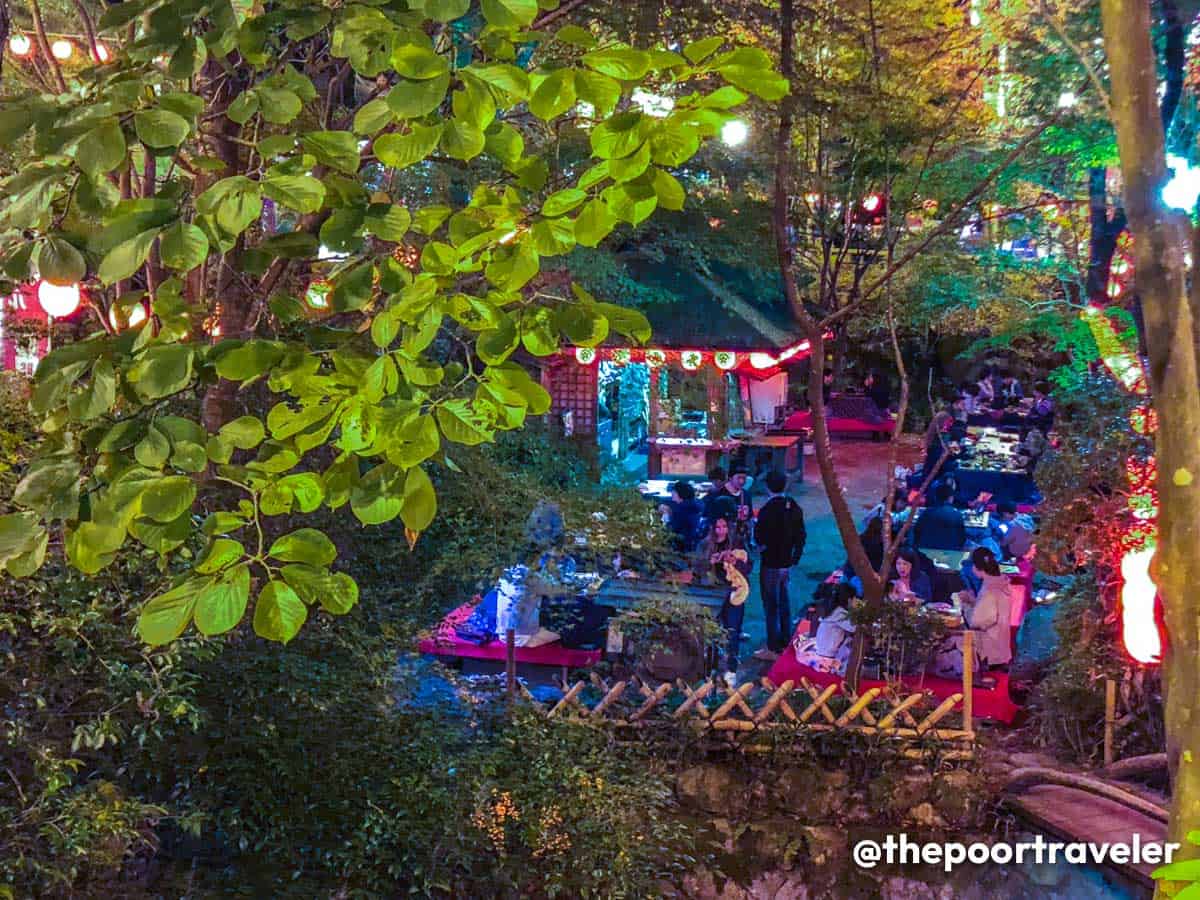
The local restaurant chain has six branches of restaurants in three areas: three in Kuga, two in Nishiki, and one in Shuto. The architecture and design of the restaurants strongly identify with traditional Japanese structures and themes.
Location: Kuga, Nishiki, and Shuto, Yamaguchi, Japan Opening Hours: Sanzoku 10:00 AM – 12:00 AM, CLOSED (Tuesdays & Holidays); Kamado 10:00 AM – 12:00 AM, CLOSED (Wednesdays); Tourian 10:00 AM – 12:00 AM, CLOSED (Thursdays); Sanzoku-toride 10:00 AM – 10:00 PM, CLOSED (Thursdays); Ittousen 10:00 AM – 10:00 PM, CLOSED (Wednesdays); Oimatsu 10:00 AM – 12:00 AM, CLOSED (Thursdays). Note that the opening schedule might change, so check for updates and announcements prior to your visit. Official Website: www.irori-sanzoku.co.jp
13. Karato Fish Market
Located at the Kamon Wharf in Shimonoseki, the Karato Fish Market is a huge market noted for its fresh seafood and a myriad of choices for sushi, sashimi, donburi, and other culinary delights.
View this post on Instagram A post shared by 오늘도 사부작 🏊♀️🏃♀️🪴👶💛 (@one_fine.day)
For the adventurous, care for some fugu (puffer fish), one of the most dangerous fish to be consumed? Shimonoseki is hailed as the Puffer Fish Capital of the World. One of Japan’s most celebrated (but notorious) dishes, fugu is usually served as a hotpot or as sashimi.
When you are done stuffing your face with fresh seafood, head over to the boardwalk for a relaxing and picturesque view of the Kanmon Straits.
Location: 5-50 Karatocho, Shimonoseki, Yamaguchi 750-0005, Japan Opening Hours: 5:00 AM – 3:00 PM (Monday – Saturday), 8:00 AM – 3:00 PM (Sundays). Note that the opening schedule might change, so check for updates and announcements prior to your visit. Nearest Station/Stop: Shimonoseki Station, Karato Bus Stop (via Sanden Kotsu Bus) Official Website: www.karatoichiba.com
14. Akama-Jinju Shrine
Just a few hundred meters northeast of Karato Fish Market, Akama-Jinju Shrine is a waterfront Shinto shrine facing the Kanmon Straits. Inspired by Ryūgū-jō, an undersea palace in Japanese folklore, its bright red main gate draws attention to the shrine. Established in the 1191, the shrine was dedicated to the young emperor Antoku, who perished by drowning during the Battle of Dan-no-ura in 1185.
Other notable features of the shrine aside from the bright red main gate are the Hoichi Hall and the Nanamori-zuka, the burial site of the Taira clan warriors.
Location: 4-1 Amidaijicho, Shimonoseki, Yamaguchi 750-0003, Japan Opening Hours: 24/7 Admission: Shrine grounds FREE. Note that enetring the halls may incur minimal fee. Nearest Station/Stop: Shimonoseki Station, Akamajinjumae Bus Stop
15. Kawara Soba
Kawara Soba is the Yamaguchi Prefecture’s very distinct local cuisine. Concocted by Shinichi Takase, the founder of the Kawara Soba Takase restaurant, it has warmed the belly of locals since 1962, eventually becoming the specialty of the Kawatana Onsen District.
View this post on Instagram A post shared by (公式)瓦そばたかせ東本館 (@kawarasoba.takase.higashi)
Kawara Soba is composed of green tea soba, thinly sliced egg, seweed, beef, grated daikon, chili, and lemon slices. It is usually paired with the restaurant’s signature soba soup with bonito flakes and Kombu. But what made the dish distinct is cooking and serving it using the Japanese Kawara (roof tile).
Kawara Soba Takase Official Website: www.kawarasoba.jp.
More Tips on YouTube ⬇️⬇️⬇️
Is this post helpful to you?

Related Posts:
- 10 Food Delights to Try in Japan
- KAKIGORI: The Grandmama of Halo-halo
- The Emperor’s New Year Greeting: Imperial Palace, Tokyo, Japan
- HITACHI SEASIDE PARK: Early Spring Blooms in Ibaraki, Japan
- HOW TO RENEW JAPAN VISA & Other Frequently Asked Questions
- HOW TO GET TO DISNEYLAND from Tokyo Downtown or Airport
- TAKAYAMA TRAVEL GUIDE: Budget Itinerary & Things to Do
- KYOTO TRAVEL GUIDE: Budget Itinerary, Things to Do

- Recent Posts
- 2024 STILTS CALATAGAN Beach Resort Travel Guide with Itinerary & Budget - 7 April 2024
- TOKYO SKYTREE TRAVEL GUIDE: Know Before You Visit! - 30 March 2024
- 37 BORACAY TOURIST SPOTS & Things to Do (with Prices!) - 6 November 2023
Featured On

We heard you!
Your comment is now queued for moderation! We’ll try to get back to you soonest. While waiting, follow us on these channels.
Subscribe on Youtube! Follow us on Instagram!

- Tours & Experiences
- Tailor-made Trips
- Bahasa Indonesia
We are happy to see you again!
Continue with
Or use email.
No Account? Create one
Create account
Already have an account? Sign in
Quickly Sign up with
I agree to Japan Travel's Terms of Service and Privacy Policy . Terms of--> and acknowledge that Japan Travel's Privacy--> applies to me.-->
Email reset password link
Please check your inbox and click the link we will send to you.
5 Must-visit Places in Downtown Shimonoseki
Yamaguchi's surprise packet city boasts plenty to offer

Shimonoseki is the largest city — but not the capital — of Yamaguchi Prefecture, and sits right on the southwestern tip of Honshu. The city has some historical significance as a result of its geographic location, and it's a destination well worth exploring for daring foodies, too. If you'll be passing through in the future, here are five must-visit places in the downtown Shimonoseki area.
Karato Market
There are a large number of fish markets across the country, but the thing that differentiates Karato Market from the rest is their abundance of fugu, or pufferfish. The fascination factor is that the fish can be deadly to consume if it's not prepared correctly due to a neurotoxin it contains. Don't worry though - the preparation of fugu is heavily regulated in Japan, so much so that fugu chefs need multiple years of training before they can serve it to the public. If you're going to try it anywhere, it may as well be in the place dubbed the fugu capital!
5-50 Karatochō, 唐戸町 Shimonoseki-shi, Yamaguchi-ken 750-0005
Kaikyo Yume Tower
There's no way to miss the dominant feature on Shimonoseki's skyline - the Kaikyo Yume Tower. Completed in July of 1996, the tower reaches a height of 153 meters, with an observation deck ten meters below that. The ride to the observation deck takes just over a minute from the ground floor, and once you exit the elevator you're treated to an impressive 360-degree view of the city, the Kanmon Strait, the Kyushu Ranges and two seas - the Sea of Japan and the Seto Inland Sea.
3 Chome-3-1 Buzendacho, Shimonoseki, Yamaguchi 750-0018
Kanmon Pedestrian Tunnel
The Kanmon Pedestrian Tunnel provides a fun and unique experience while you're in Shimonoseki - you can actually walk under the Kanmon Strait and cross over from Honshu to Kyushu from here. The distance from one side to the other is close to 800 meters, and there's a point around the halfway mark where you can have one foot set in Honshu, and one foot set in Kyushu - it's a memorable spot for a photo! The tunnel is open to pedestrians from 6 am until 10 pm.
22 Mimosusogawa-cho, Shimonoseki City
Mimosusogawa Park
Across from the entrance to the Kanmom Pedestrian Tunnel on the Shimonoseki side, you'll find Mimosusogawa Park. It's hard to miss, as it sits right by the water and has a full repertoire of historical statues and cannons on display. Why, you may ask? The park was the site of the Battle of Dan-no-ura, a major sea battle between the Taira and Minamoto clans during the late-Heian period. Even if you're not a history buff, the park is a scenic spot to simply watch ships come and go throughout the Kanmon Strait.
1-1 Mimosusogawacho, Shimonoseki, Yamaguchi 751-0813
Akama Shrine
Akama Shrine is another destination with links to the Battle of Dan-no-ura. The shrine is dedicated to Emperor Antoku, who was killed at six years of age during the conflict in 1185. The shrine is just a few minutes walk away from the Karato Market, so it's easy to visit them both in one morning.
4-1 Amidaijicho, Shimonoseki, Yamaguchi 750-0003
- Share on Facebook
- Share on Twitter
- Copy link to share
Japan Travel Staff
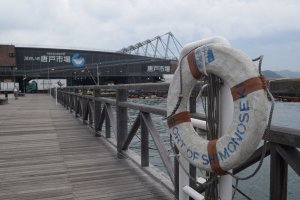
Top Articles
- Recommended

Kurobe Unazuki Canyon Route to Link with Tateyama Kurobe Alpine Route

Tokyo Takes 2nd Place on Top Coffee Cities List

2024 Grand Sumo Tournaments

Valley of Witches: a New Ghibli Park Attraction

Guide to Golden Week

Tokyo One of the World's Most Walkable Cities

Mount Omuro

Haneda Airport Ranked World's Cleanest

Sapporo Beer Opens New Brewery in Tokyo’s Ebisu

Guide to Bringing Medicines Into Japan

Your Name: Real-Life Locations in Tokyo

Hachiko Statue in Shibuya

Iwatayama Monkey Park

Shibuya Crossing

Daikoku Car Meet

Kanamara Penis Festival

Guide to Suica Cards

Japanese Urban Legends

Guide to PASMO Cards
More from this category.

Gunma Top 10: Attractions & Things..
By Serena Ogawa

Nishiyama Park and Red Pandas..
By Geoff Day

A Walk Along Kamo River
By Erika Arceo

Adachi Fireworks
By Michael Groen
Join the discussion

Let us know how we can help.
Help us improve JapanTravel.com
We welcome any suggestions regarding this content. Your feedback is confidential and will be used to help improve this page.
Suggest an edit
https://en.japantravel.com/guide/5-must-visit-places-in-downtown-shimonoseki/66940
Thank you for your support!
Your feedback has been sent.
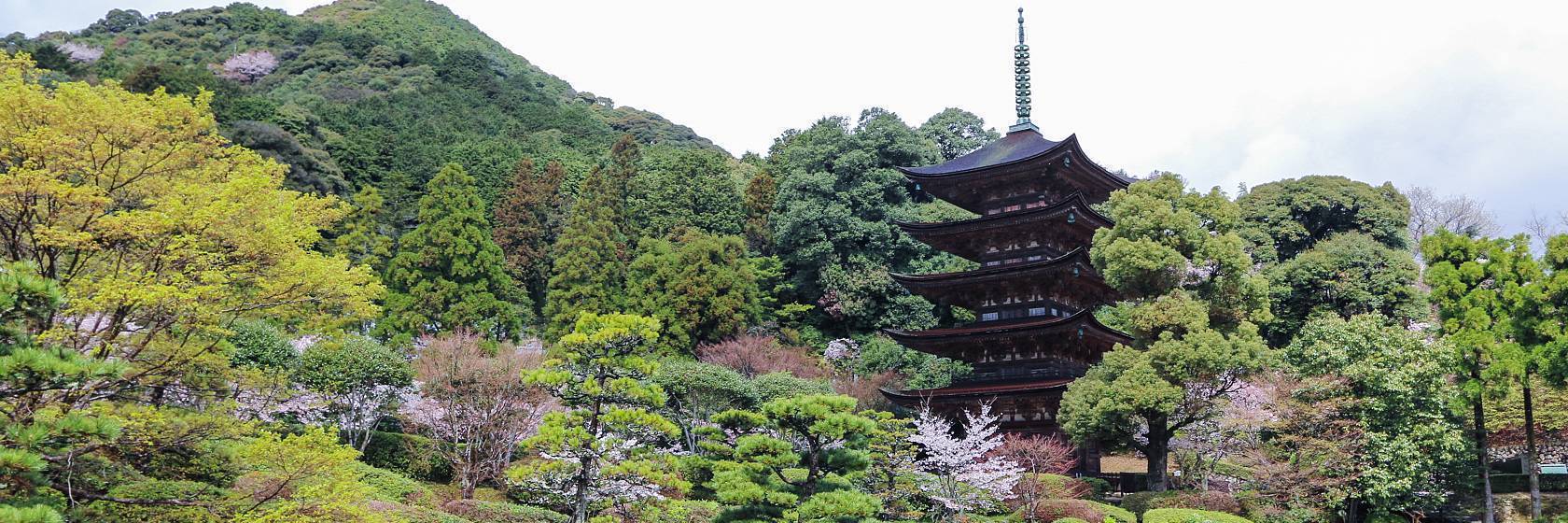
Yamaguchi (�R��) is a pleasant and friendly city in Western Honshu founded by the Ouchi family in the 14th century. It is now the capital of Yamaguchi Prefecture , a region formerly known as the Nagato (Choshu) and Suo provinces. As the seat of the powerful Ouchi lords, Yamaguchi grew to culturally rival the war torn capital of Kyoto during Japan's age of warring states . As a result, the city became known as the "Kyoto of the West".
The Mori family succeeded the Ouchi as the local feudal lords and made nearby Hagi the seat of their rule. The Mori played a leading role in the Meiji Restoration (1868), which brought Japan's feudal age to an end. Yamaguchi today has a surprisingly laid back atmosphere, considering its historical prominence. Several eminent places of worship stand in the city, serving to remind of its past cultural distinction.
Top attractions in Yamaguchi
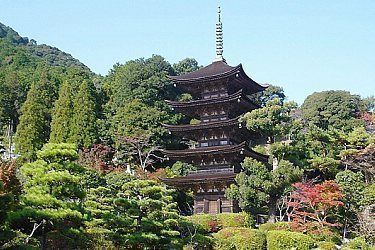
Rurikoji Temple •
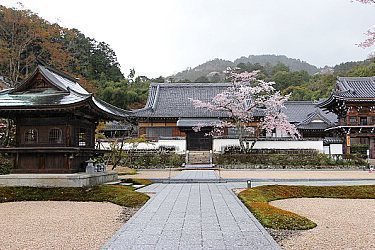
Joeiji Temple
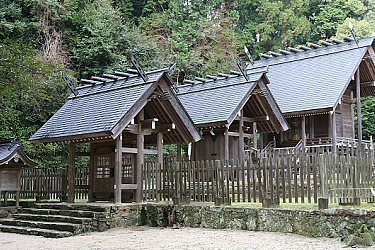
Yamaguchi Daijingu
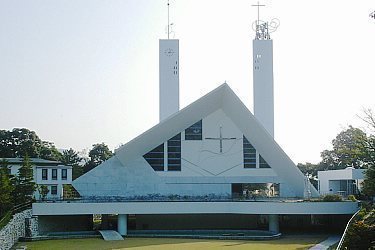
Xavier Church
Getting there and around.
Questions? Ask in our forum .
Links and Resources
Yamaguchi city, hotels around yamaguchi.


- Adventure & Experience

- Art & Culture

- Sea & Nature

- Food & Drink

- Relaxing Stay

- For First-Time Visitors

- Getting to Setouchi

- Getting Around Setouchi

- Travel Tips

- Itineraries
- TRAVEL TRADE & MEDIA
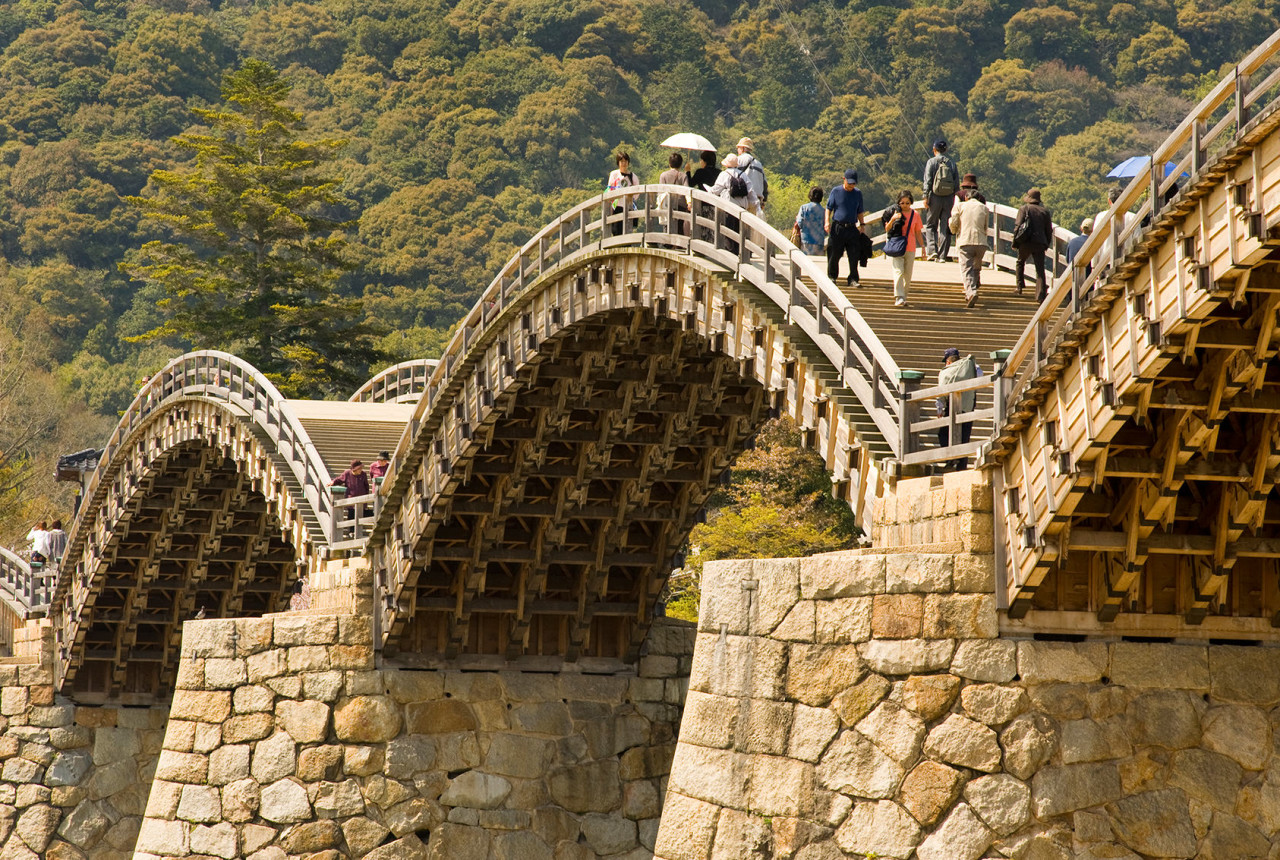
Destinations
Yamaguchi is surrounded by ocean, mountains and rivers and is characterized by its climate, which is comfortable throughout the year. Its natural scenery, which includes some 1,500 kilometers of coastline, is a cut above. The prefecture has Kintaikyo Bridge, one of the three most famous bridges in Japan, and other tourist attractions, and its fugu (pufferfish) is famous as a winter dish.
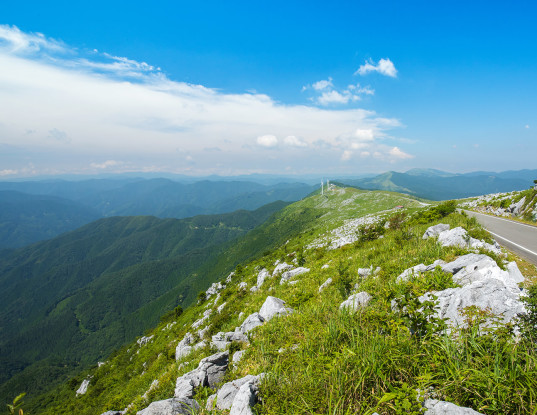
Must-see Spots
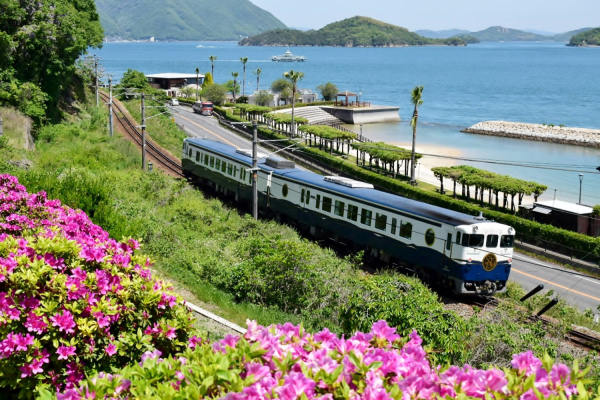
Introducing 5 Sightseeing Trains in Setouchi

Tokiwa Park
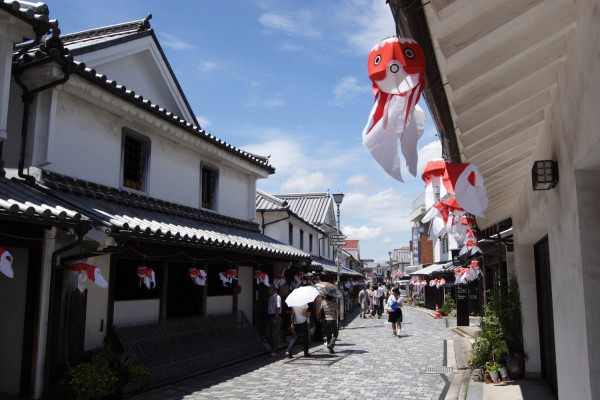
White wall townscape
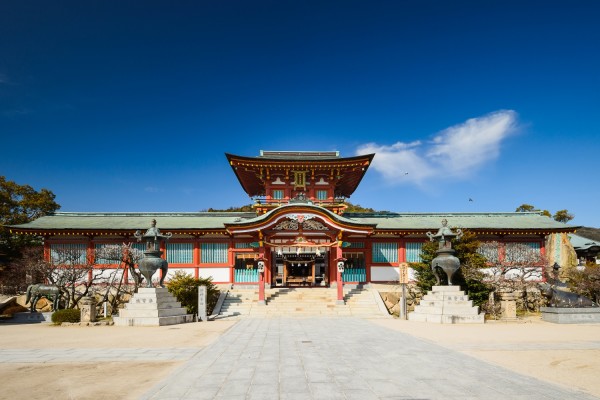
Temples & Shrines
Hofu Tenmangu
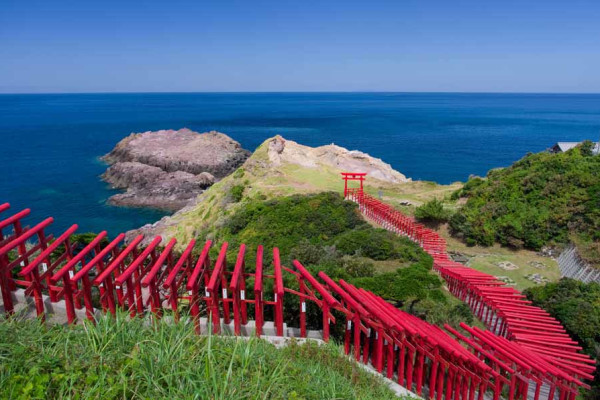
Adventure & Experience
Motonosumi Shrine

Art & Culture
Yuda Onsen (Kitsune no Ashiato)

Senteisai Festival (Akama-jingu Shrine)

Akama-jingu Shrine

Karato Market
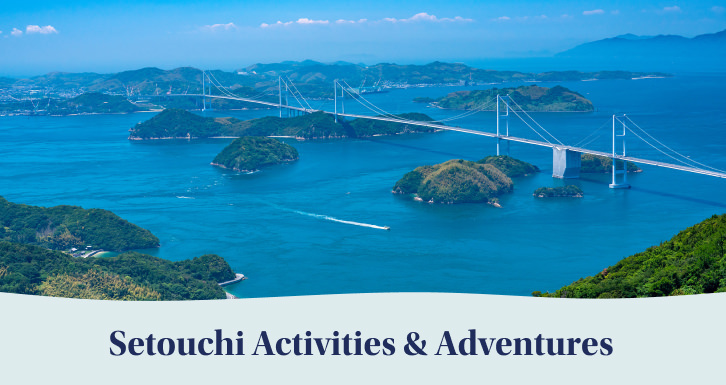
10 amazing things to do in Yamaguchi, Japan!
Dec 21, 2020
- Destination
- 10 Amazing Things

Yamaguchi is the prefecture in Chugoku region, and is nestled on the westernmost of Honshu, the mainland of Japan. The prefecture is home to many hidden tourist spots, including a historical castle, a temple with beautiful torii gates, and great local delicacies.
The prefecture is often overlooked for its more famous neighbors like Hiroshima and Ehime, but it is packed with several notable sights to see, including the scenic Tsunoshima Ohashi Bridge and its mystical Akiyoshido Cave.
Brimming with beautiful nature and interesting tourist destinations, how about visiting Yamaguchi to have both, an extraordinary, yet a novel adventure?
How to get there
Recommended sightseeing spots in yamaguchi:, iwakuni castle, kintaikyo bridge.
- Night view at Shunan Plant
Akiyoshidai
Akiyoshido cave, ruriko-ji temple, beppu benten pond, tsunoshima ohashi bridge, motonosumi inari shrine, yamaguchi’ s best local treats:.
- Kawara soba
- Sanzoku chicken
- Iwakuni Sushi
Yamaguchi is accessible by both trains and planes, and the main transportation hubs in Yamaguchi are the Shin-Yamaguchi Station and Yamaguchi Ube Airport, which connect the prefecture to Tokyo, Osaka, Fukuoka, and other major cities in Japan.
The prefecture is connected to Tokyo, Osaka, and Fukuoka through the JR Sanyo Shinkansen. It takes 2 hours to reach Yamaguchi from Osaka, around 40 minutes from Fukuoka, and around 4.5 hours from Tokyo. All trips are fully covered by the JR pass.
ANA and JAL operate several flights between Yamaguchi Ube Airport and Tokyo’s Haneda Airport, and the flight duration is around 100 minutes.
Recommended sightseeing spots in Yamaguchi
Yamaguchi is a perfect destination to visit if you’re looking for something off the beaten path to make your trip special. The prefecture is packed with numerous hidden gems that are hard to find in big cities like Tokyo and Osaka, including the great Motonosumi Inari Shrine that is famous for its red torii gates, and the historical Iwakuni Castle.
A perfect destination for a weekend getaway, you can escape from the hustle and bustle of the big cities by having a relaxing trip in Yamaguchi, exploring its excellent sightseeing spots while enjoying the tranquil atmosphere of its great nature.
Here are our picks for the best things to do in Yamaguchi, Japan!
1. Explore Iwakuni Castle

- Business hours: 9:00-16:45
- Admissions: 260 yen
- Access to Sanroku Ropeway Station: a 25-minute walk from Kawanishi Station
- Website (in Japanese)
Back To Index
2. Walk on the Kintaikyo Bridge
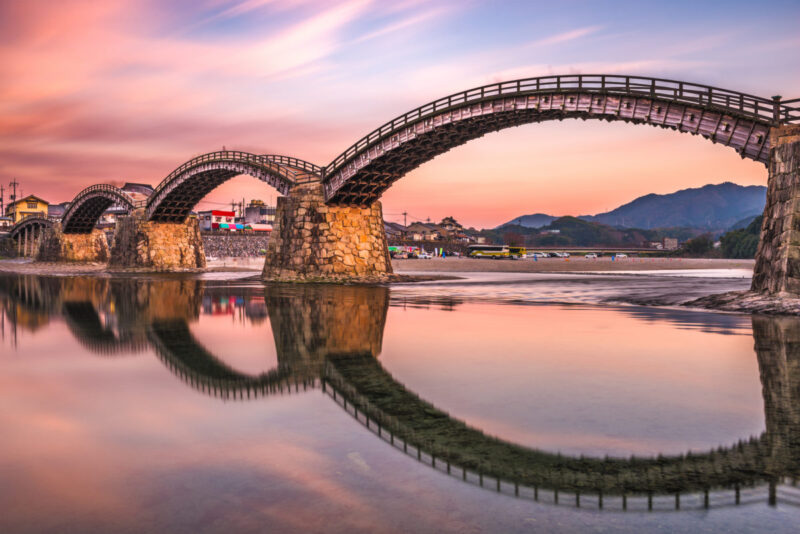
Kintaikyo Bridge is a famous bridge in Yamaguchi, and it is best known for its beautiful scenery during the dusk, amazing cherry blossoms in spring, and its heart-warming autumn leaves in fall.
Kintaikyo Bridge is a five arched bridge, and it was originally made to stop invading armies from crossing the Nishigawa river, and its history is said to date back to 1673.
3. Have a night cruise to enjoy the night view of Shunan Plant
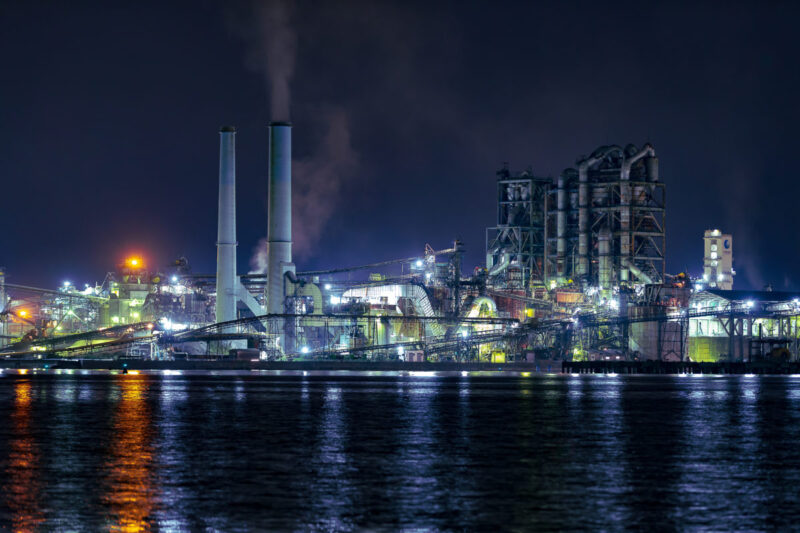
Shunan Plant is located on the east of Yamaguchi, and it is a famous industrial area that sustains local business. The plant turns into a dazzling night view spot after the dusk, and you can enjoy the amazing, and priceless night views of Shunan Plant by participating in the night cruising program, which you can book through local tour agents.
Shunan Plant Night Cruising Program
- See this website for booking
4. Admire the great nature of Akiyoshidai
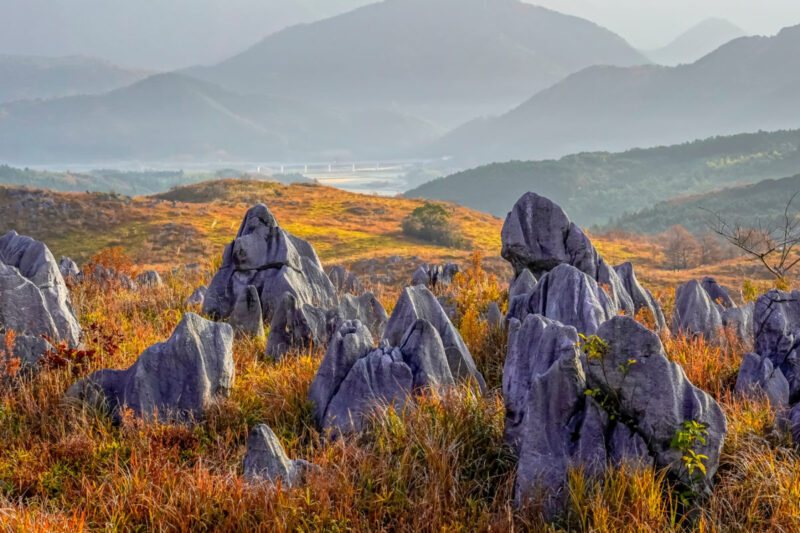
If you love to enjoy nature, how about cycling around Akiyoshidai when you’re in Yamaguchi?
Akiyoshidai is located just 40 minutes by car from JR Yamaguchi Station, and it is known as the largest karst plateau, a limestone-formed land, in Japan.
One of the best ways to explore the karst is by exploring its hiking trails with a bicycle.
5. Explore the legendary Akiyoshido Cave
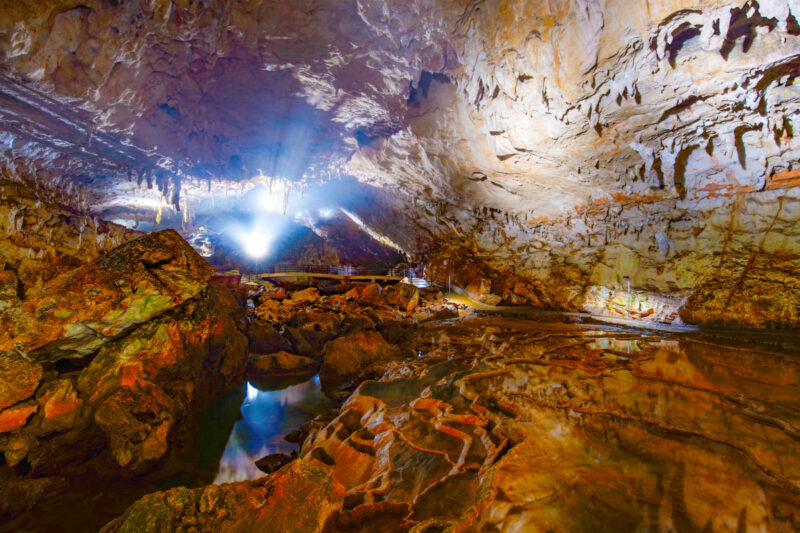
Akiyoshido cave is located right next to the Akiyoshidai plateau, and it is best known as the largest limestone cave in Japan. Said to have a depth of 10.7 kilometers, only around a kilometer of the length is open to public for sightseeing and exploring.
Inside the cave, there are around 100 plates that look like scores of platters lined up in rows, which can be accessed through an adventure trail.
- Business hours: 8:30-17:30 (main entrance, from March to November), 8:30-16:30 (main entrance, from December to February), and 8:30-16:30 (elevator entrance & Kurotani entrance)
- Admissions: 1,300 yen (age 16 and above), 1,050 yen (age 13 to 15), 700 yen (age 12 and under)
6. Find your peace at Ruriko-ji Temple
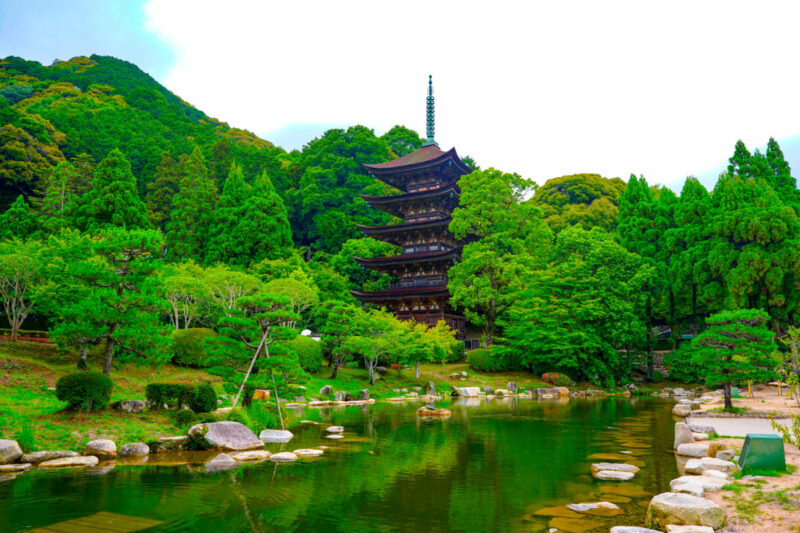
The temple is considered as the 10 th oldest temple, and the third most beautiful temple in Japan along with Horyu-ji Temple in Nara, and the Daigo-ji Temple in Kyoto.
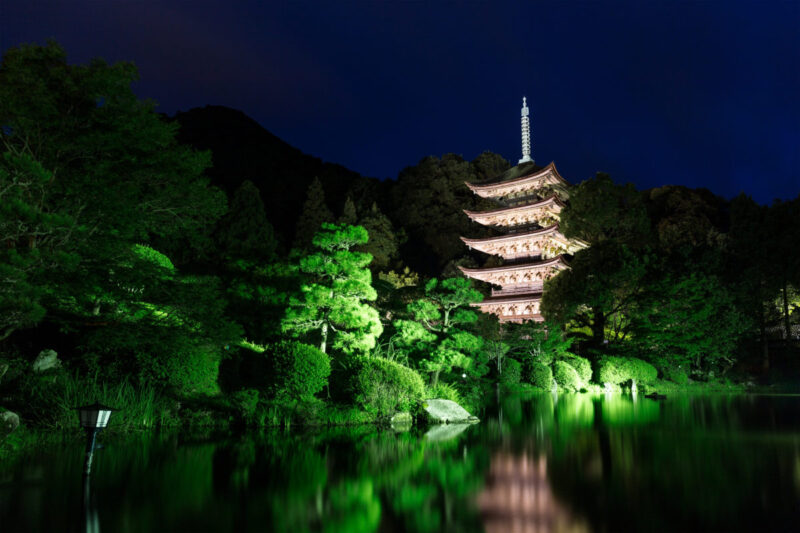
- The temple grounds open for 24 hours, and the Pagoda Museum open from 9:00 to 17:00
- Admissions: free for the temple grounds (Kozan Park), 200 yen for the Pagoda Museum
- Access: a 10-minute walk from Kenchomae Bus Stop
7. Visit Beppu Benten Pond
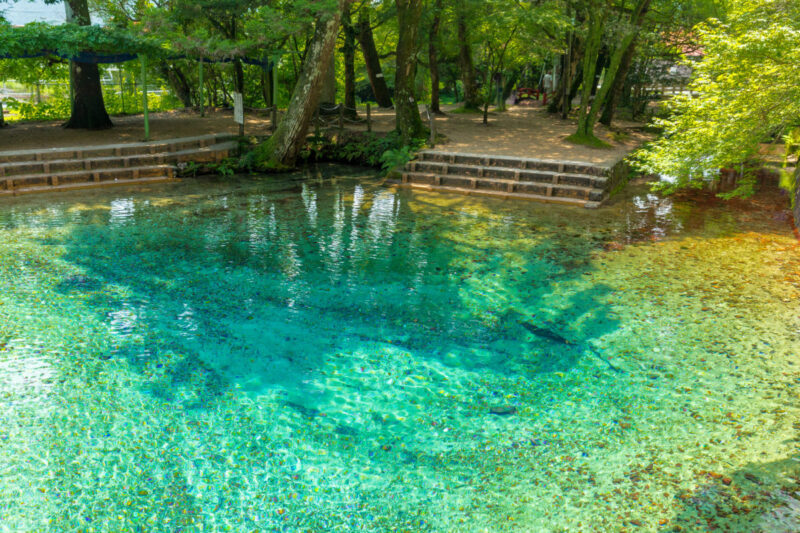
The uneven cobalt blue hue, with a slightly deeper color on its center, makes this pond looks even more mysterious, and drinking its water will bless you with longevity and wealth.
- Admissions: free
8. Drive along the Tsunoshima Ohashi Bridge

The bridge stretches over 1,780 meters, and it stands above the Sea of Japan. It is known as the second-longest bridge in Japan, and it attracts a lot of tourists every year.
9. Visit the great Motonosumi Inari Shrine

Visiting a shrine during your trip in Japan is a must, so you should never miss the great Motonosumi Inari Shrine, which is famous for its red torii gates when you’re in Yamaguchi.
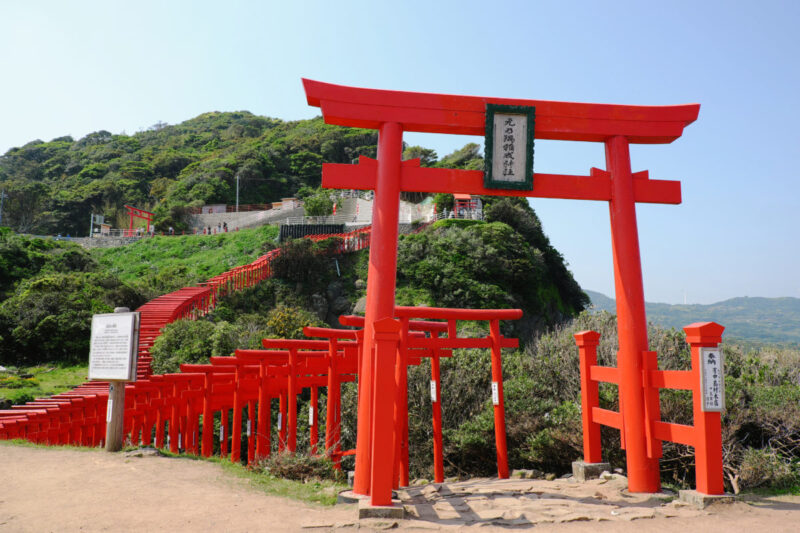
- Business hours: from sunrise to sunset
- Access: a 20-minute drive from Nagato-Furuichi Station on the JR San’in Main Line
Back To Index
10. Enjoy the breathtaking scenery of Senjojiki
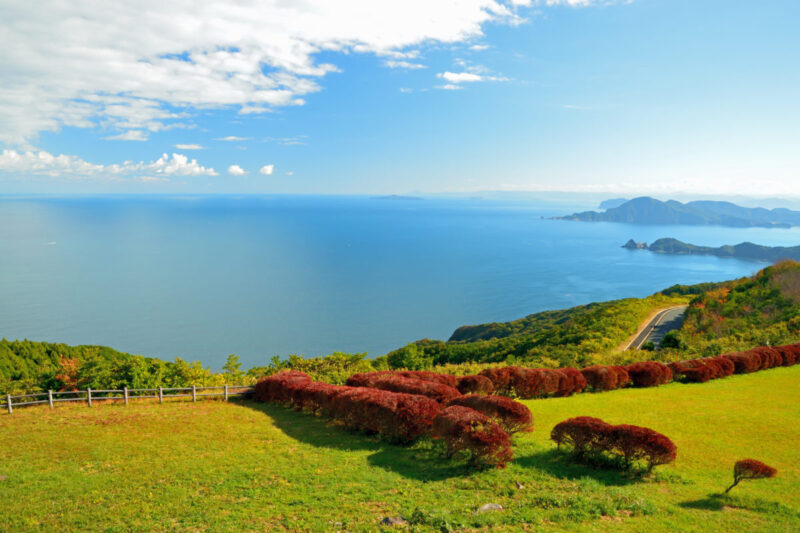
Senjojiki is a famous night camping spot in Yamaguchi, so how about spending a night in this amazing nature spot?
Yamaguchi’s best local treats
Yamaguchi is best known for its distinctive, yet amazing local cuisines, and the prefecture is home to the intriguing, yet dangerous, puffer fish, and Dassai , a famous nihonshu (Japanese sake) brand exclusive to Yamaguchi Prefecture.
From fugu sashimi to Iwakuni Sushi , wherever you go, scrumptious local treats await in Yamaguchi. Here are our picks for the best foods to try when visiting Yamaguchi!
1. Kawara soba

Fugu is a puffer fish, and it is undoubtedly the most famous food of Yamaguchi. Trying puffer fish is intriguing, as there is a misconception that puffer fish can kill you if prepared incorrectly, which is true, but in Japan only restaurants with certified chefs can serve puffer fish, so basically you shouldn’t worry about dying after eating the puffer fish.
Fugu is usually eaten raw as sashimi or cooked in a hot pot, and sometimes they are deep-fried like karaage.
3. Sanzoku chicken
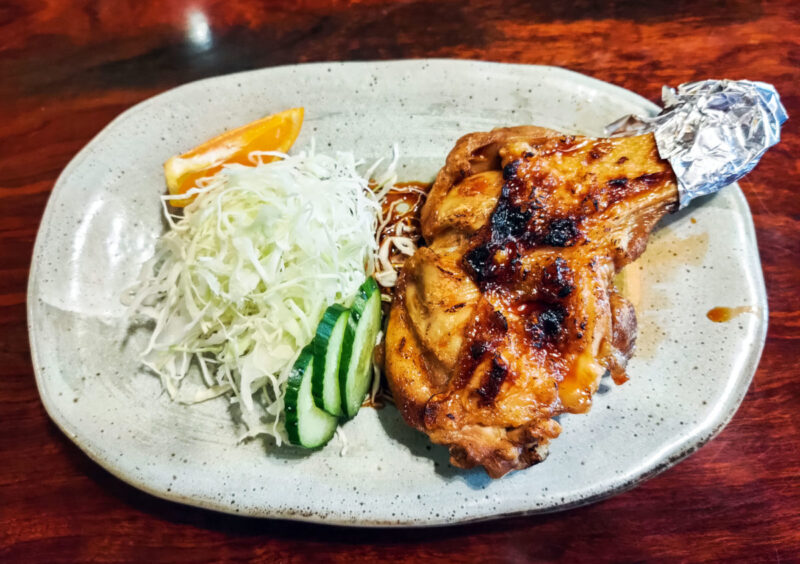
4. Bari soba
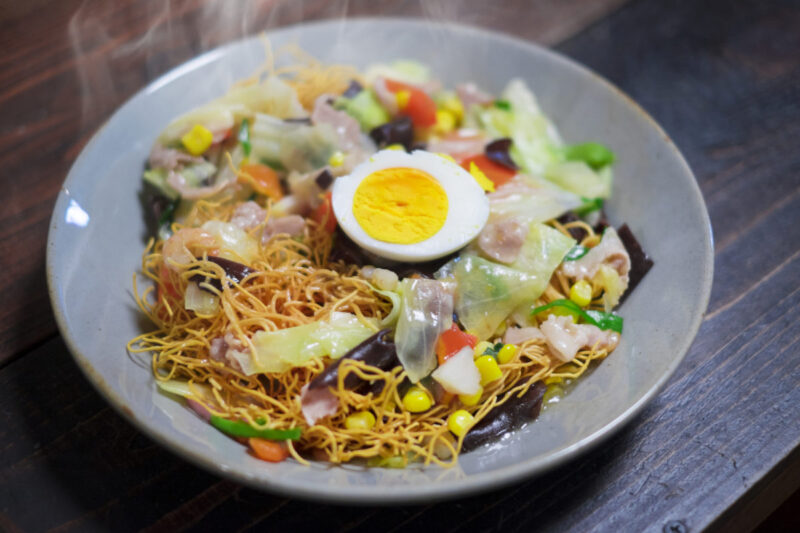
5. Iwakuni Sushi

Unlike other sushi, Iwakuni Sushi doesn’t have a slice of fish on top of it. It consists of four to five layers of sweet vinegar rice, which all are prepared and served all at once. The sushi is usually topped with flaked raw fish and thinly sliced eggs.
Now that you have an idea of how many fabulous spots are in Yamaguchi, all you have to do is plan your itinerary to enjoy unforgettable experiences in Yamaguchi!
Back To Top
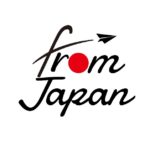
fromjapan_en_editor
We share all interesting stories about Japan; travel guide, food, shopping, and many trivial stories. If you’re the one who loves Japan, this is your area.
Recommended Article
Jul 07,2020
Aug 18,2020
Aug 31,2020
Oct 25,2020
Dec 11,2019
Keyword search
Detailed search

Art & Culture Japanese History & Culture Travel
Things to Know About Yamaguchi | List of 7
A prefecture that's likely to see a sharp rise in tourism this year
February 14, 2024 Updated On February 15, 2024
Last month, Yamaguchi city was named as one of the “52 Places to Go in 2024” by The New York Times , which means there’s likely to be a huge influx of tourists visiting there this year. Surrounding towns and cities in Yamaguchi Prefecture will probably also see a rise in tourism as a result, so with that in mind, we thought we’d take a closer look at the area for our latest List of 7. So, here are some things you need to know about Yamaguchi.
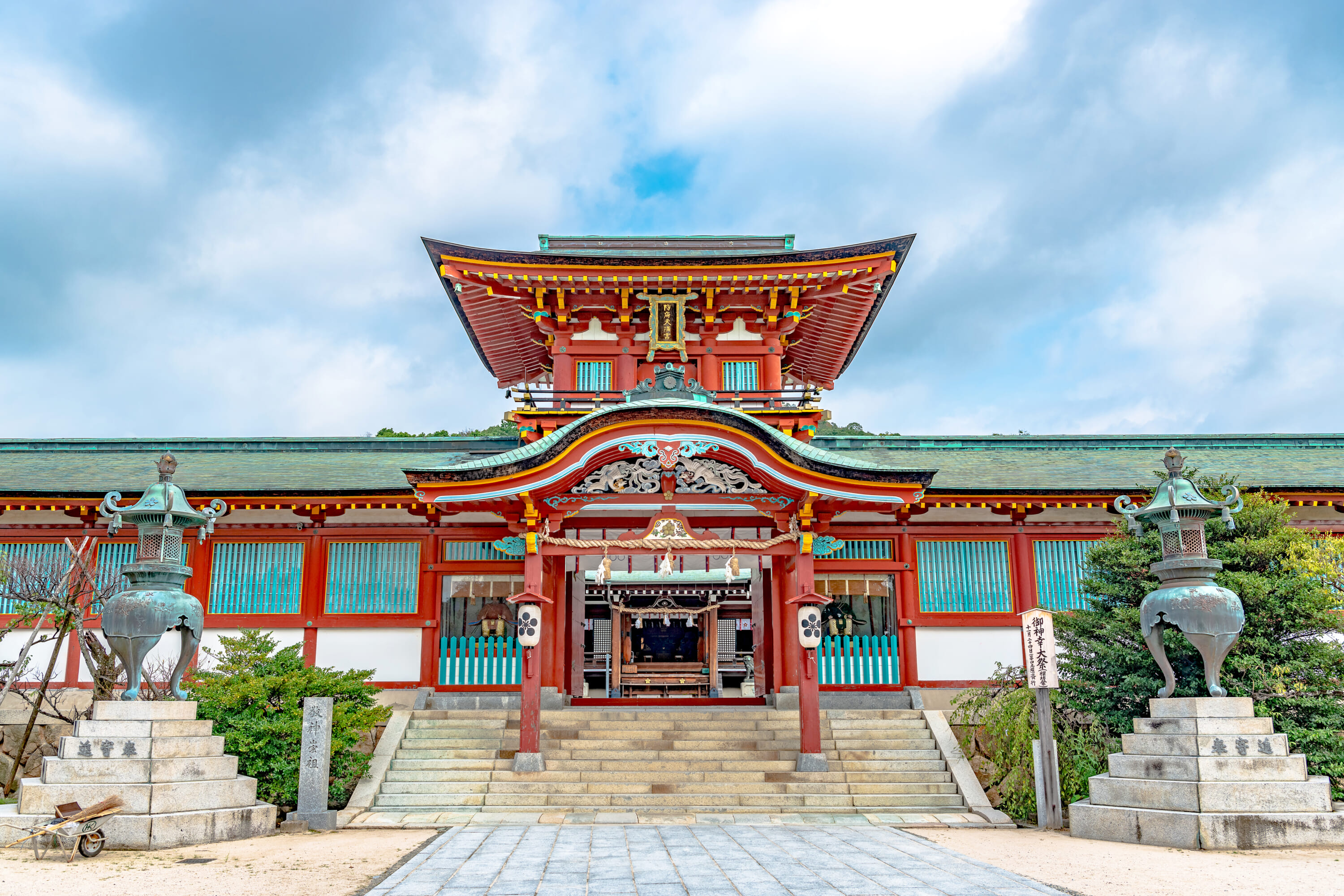
1. Japan’s Oldest Tenjin Shrine is in Yamaguchi Prefecture
Founded in 904, Hofu Tenmangu Shrine in Hofu city is believed to be the first ever Tenjin shrine constructed in Japan. Tenjin is the deification of Sugawara no Michizane (845-903), a scholar who excelled in waka and kanshi poetry. Today, he is revered in the Shinto religion as the god of learning. Falsely accused of conspiring against Emperor Daigo, Michizane was banished to Kyushu from the court of Kyoto in 901. On his way into exile, he stayed in Hofu and prayed that the charges against him would be dismissed. They weren’t and he subsequently died in 903. A series of mysterious events occurred in Hofu around the time of his death, leading people to believe that his soul had returned to his last stop in the town. The shrine, built in his honor, was erected the following year. There are currently more than 12,000 Tenjin shrines in Japan.
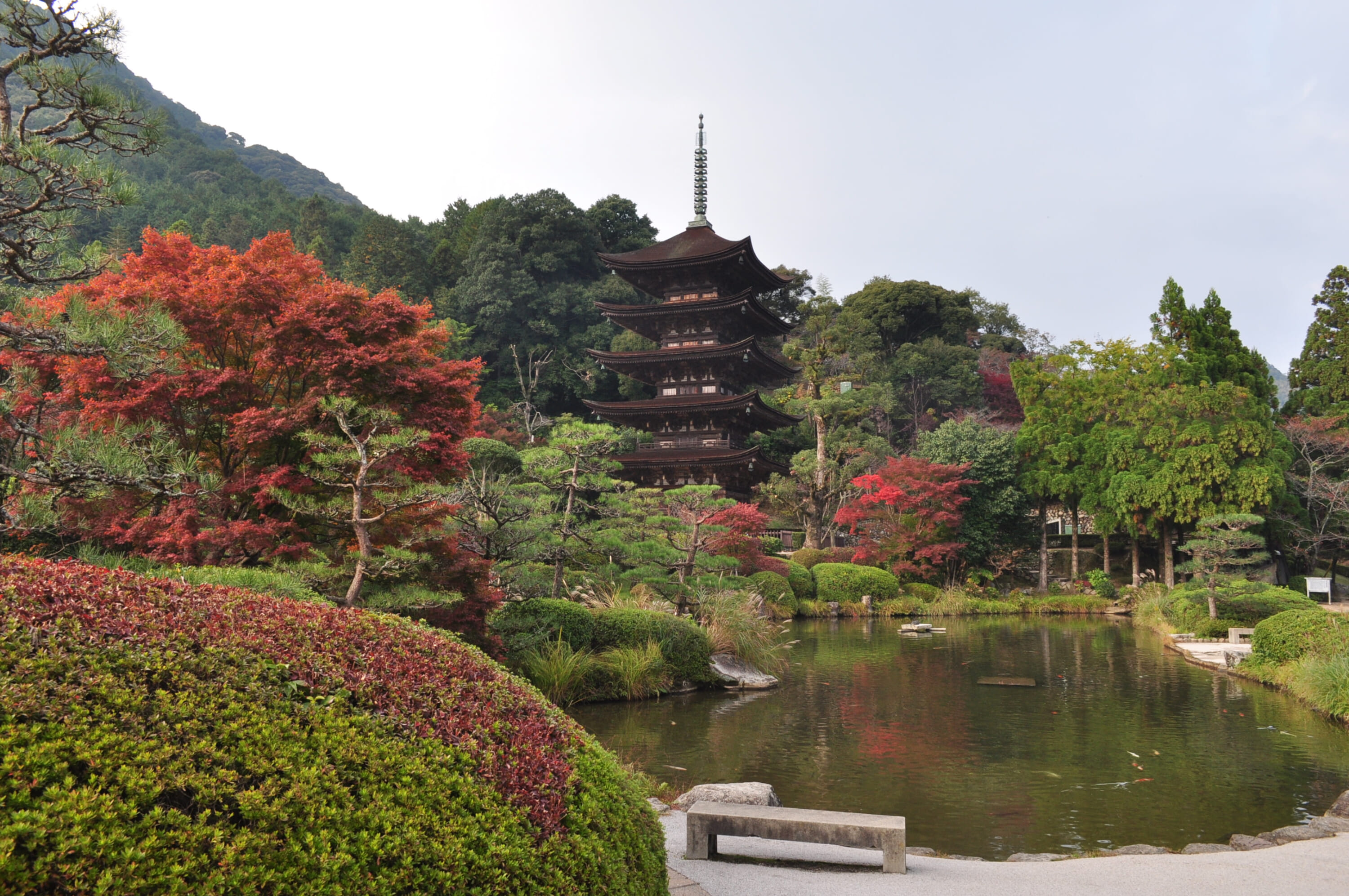
2. Yamaguchi City Was Built to Resemble Kyoto
Since ancient times, Yamaguchi city has often been referred to as the “Kyoto of the West.” In his article for The New York Times , writer Craig Mod was keen to stress that it is “much more interesting than that — and it suffers from considerably less ‘tourism pollution.'” While this is undoubtedly true, it is hard to ignore the comparisons. After-all, Yamaguchi was built to resemble Kyoto in the first place. Ouchi Hiroyo, the head of the commanding Ouchi clan, moved to Yamaguchi in 1360 and created a town based on Japan’s capital at the time. Under the leadership of his family, Yamaguchi flourished, becoming one of the most affluent cities in Japan. During that period of growth, the Buddhist temple, Rurikoji, was built. Its five-storied pagoda is a national treasure that ranks among Japan’s three greatest, alongside Kyoto’s Daigoji Temple and Horyuji Temple near Nara.
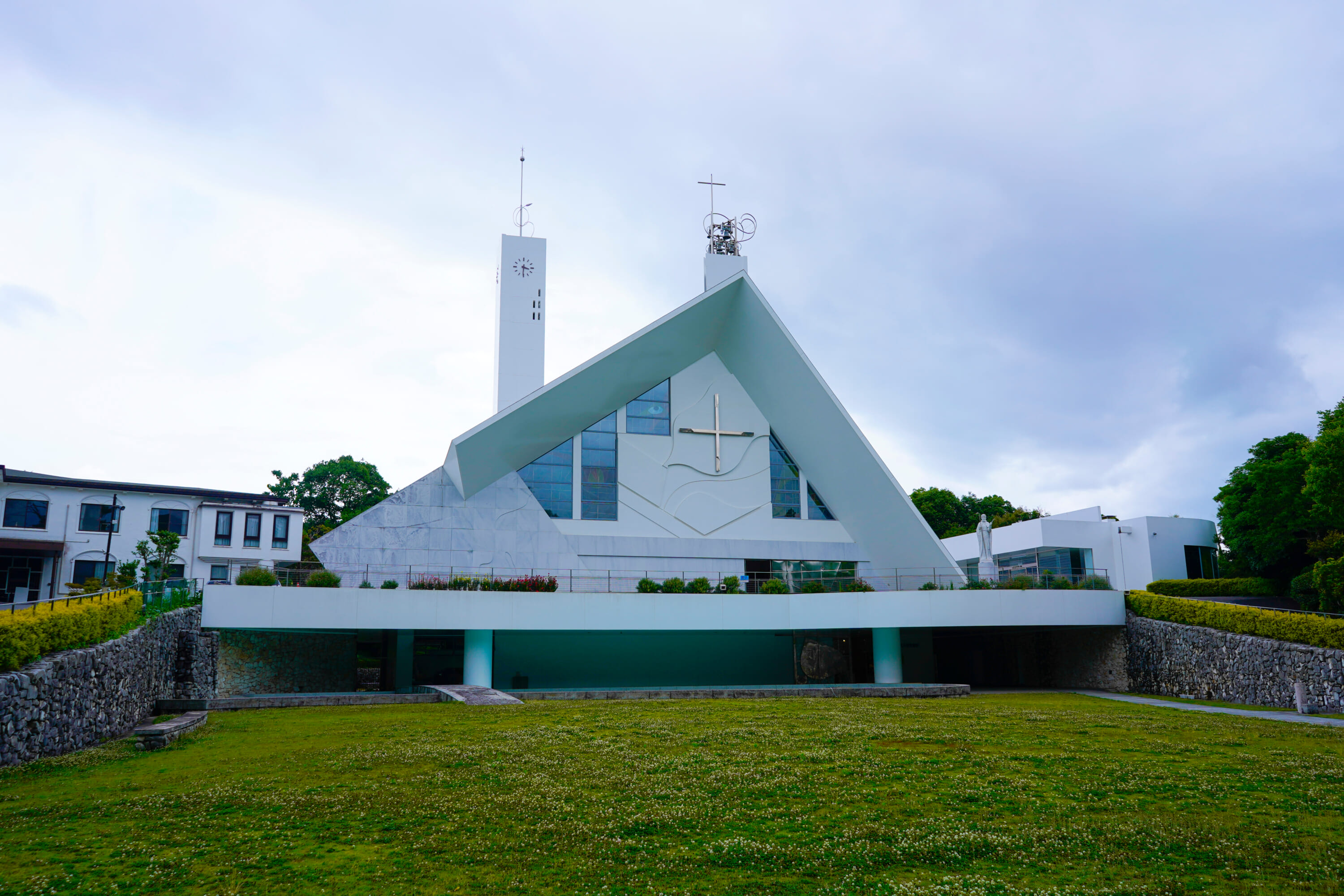
3. Japan’s First Christmas on Record Was Celebrated in Yamaguchi
Leading the first Christian mission to Japan, Francis Xavier spent some time in Yamaguchi on his way from Kagoshima to Kyoto for an audience with the emperor. Failing to meet with him, Xavier returned to Yamaguchi, where he visited the powerful daimyo (feudal lord) Ouchi Yoshitaka for the second time. The Spanish preacher presented him with several gifts and Ouchi subsequently allowed his guest to proselytize in the Suo province (eastern part of Yamaguchi Prefecture). After Xavier left, Cosme de Torres led the Jesuit mission in Yamaguchi. He said Japan’s first ever recorded Christmas mass at the abandoned Daidoji Temple in 1552. Xavier possibly said a Christmas mass prior to that, but there’s no record of it. The St. Francis Xavier Memorial Church was built in Yamaguchi city in 1952. It was reconstructed in 1998 following a fire seven years earlier.
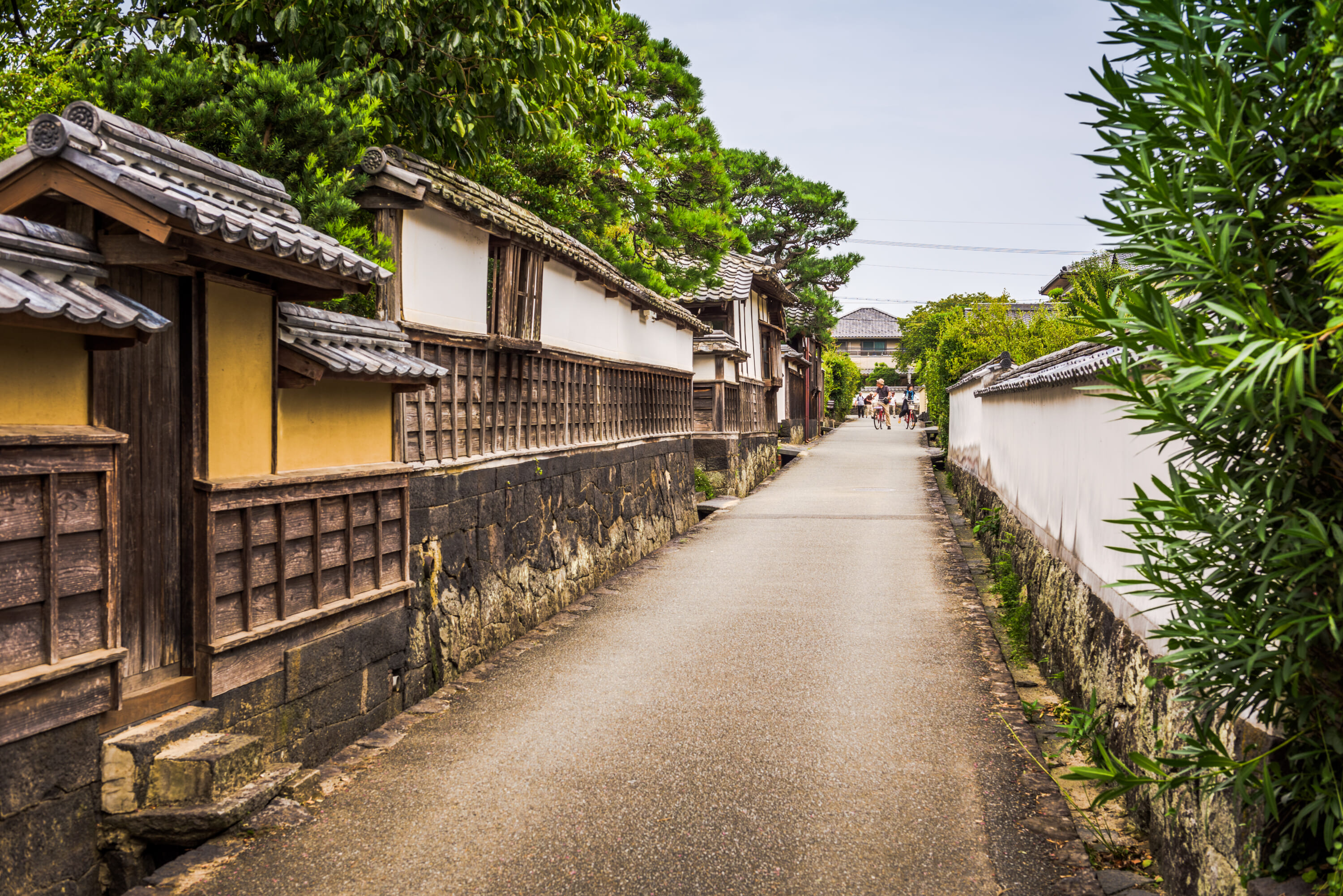
4. The Region Played a Pivotal Role in the Overthrow of the Tokugawa Shogunate
The Choshu Domain — which was absorbed into Yamaguchi Prefecture following the abolition of the Han system in 1871 — was the most prominent anti-Tokugawa domain during the Edo period. Making an alliance with the Satsuma Domain, the two forces overthrew the shogunate by force and issued an edict to restore imperial rule, bringing an end to over 260 years of feudal government. The political and economic center of the Choshu Domain was the former castle town of Hagi, which today has one of the biggest and most impressive samurai districts in all of Japan. A popular tourist destination that is famed for its pottery, it boasts five world heritage sites, including Shoin Shrine, dedicated to Yoshida Shoin, who was regarded as a spiritual leader of the Meiji Restoration. He was one of several prominent figures of the late Edo era who came from Hagi.
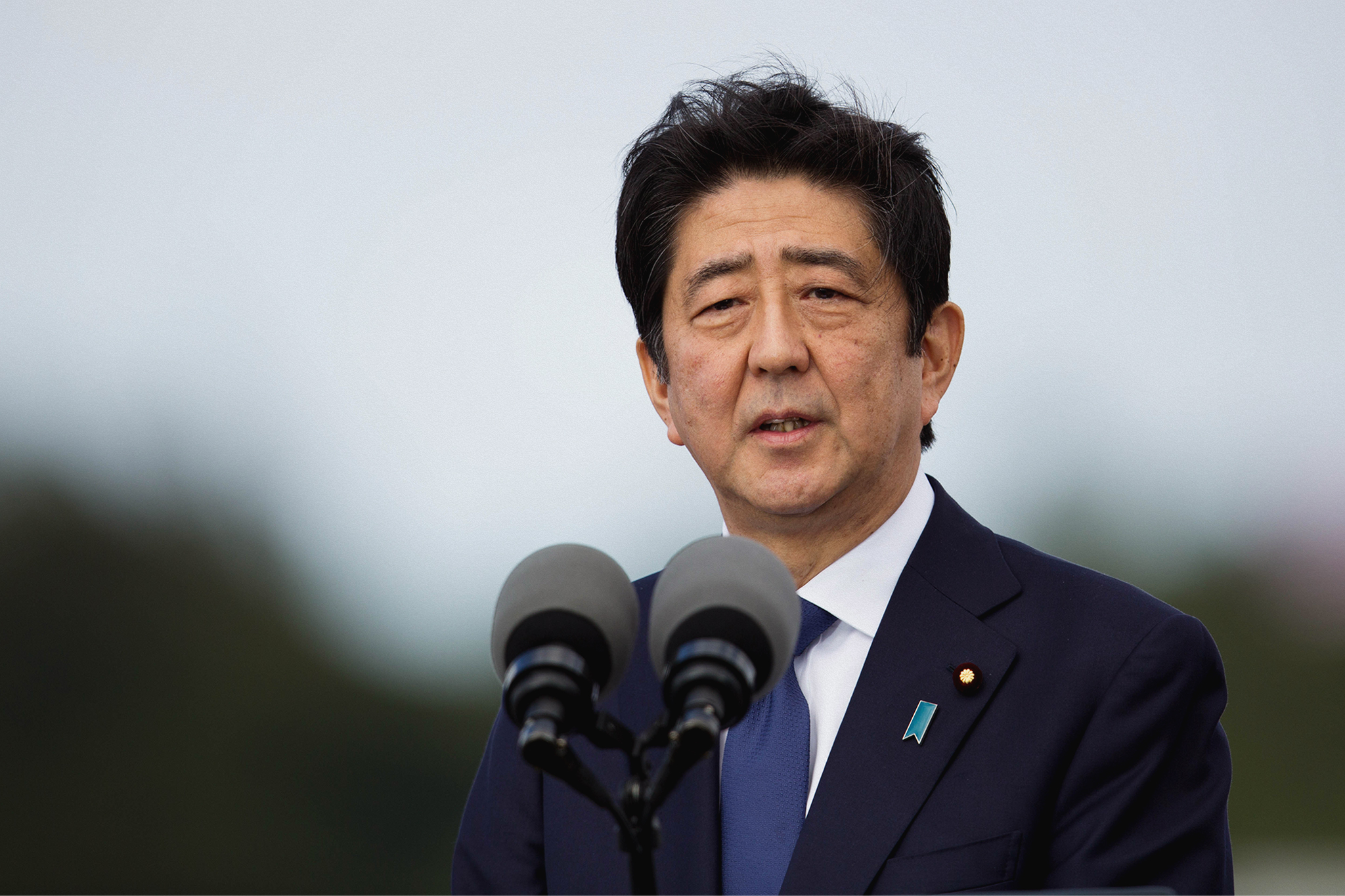
Shinzo Abe | Anthony Quintano
5. Yamaguchi Has Produced More Japanese Prime Ministers Than any Other Prefecture
One of Yoshida’s students was Ito Hirobumi, Japan’s first ever prime minister. The Yamaguchi Prefecture-native led the country four times, established a cabinet system based on European ideas, was the principal author of modern Japan’s taxation system and became the first residential-general of Korea. He resigned from that position in 1909 and was assassinated by a Korean independence activist a few months later. Ito was the first of eight Yamaguchi Prefecture representatives that have, thus far, ruled Japan. This is based on the person’s birthplace prior to World War II and the electoral district after it, so Naoto Kan, who was born in Ube, doesn’t count. The most recent Yamaguchi Prefecture representative was, of course, Shinzo Abe . His maternal grandfather, Nobusuke Kishi, was also prime minister, as was his great-uncle, Eisaku Sato, the only Japanese person to have received the Nobel Peace Prize.
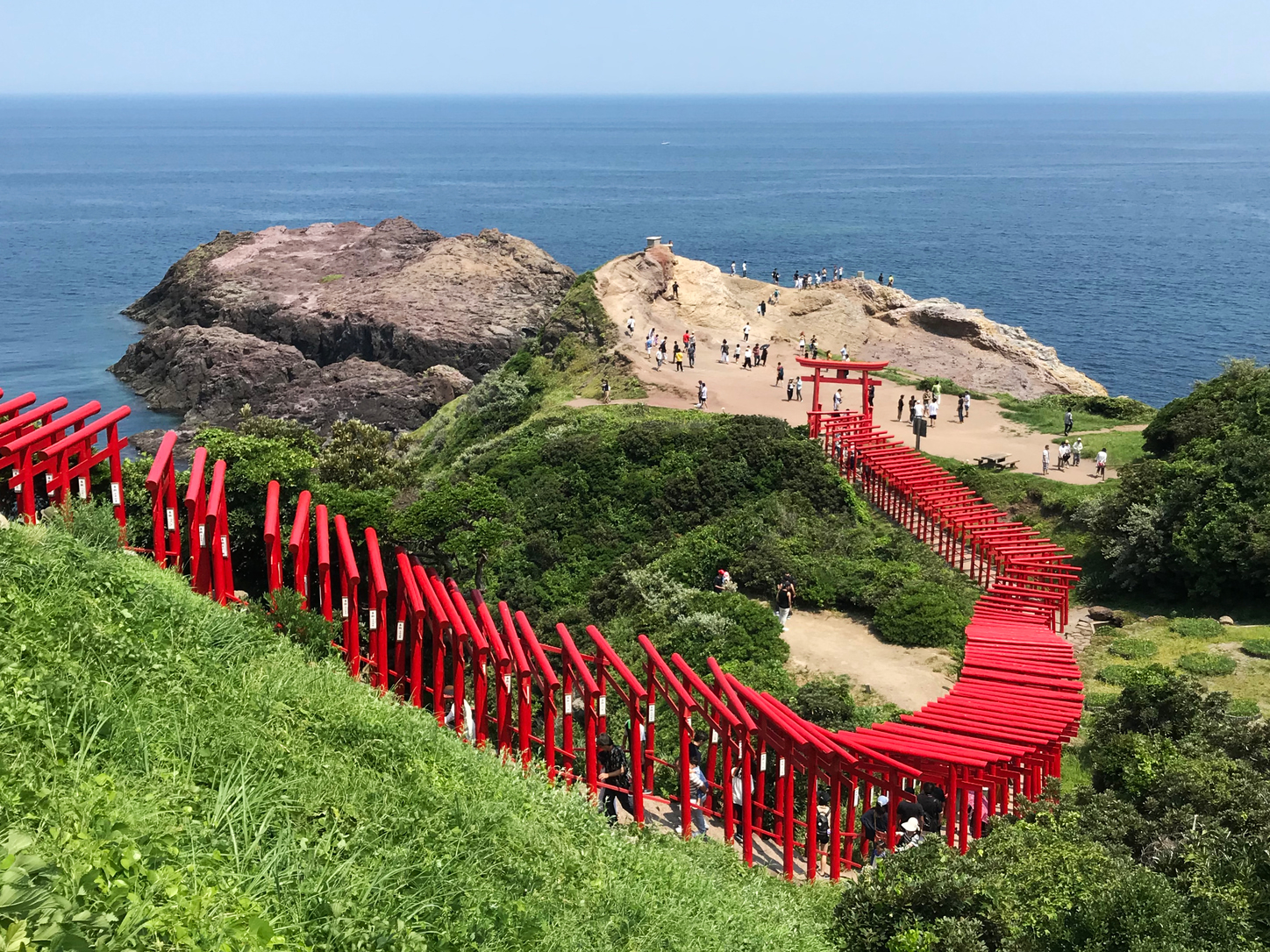
Motonosumi Inari Shrine
6. Motonosumi Inari Shrine is One of Japan’s Most Beautiful Places
Well, that was the view of CNN anyway, who chose the shrine as one of the “31 Most Beautiful Places in Japan” in 2015. Two years later, CNN featured it again as part of its “36 Most Beautiful Places in Japan” list. It’s hard to disagree. It was founded in 1955 after, according to legend, local fisherman Hitoshi Okamura received a divine message from a white fox during a dream. A messenger of Inari, the god of success and prosperity, the fox told Okamura to build a shrine, and it would bring good luck to the city of Nagato. So, he did. Featuring 123 vermillion torii gates that line up like dominoes against the sea, it truly is a magnificent sight. One of the gates has a distinctive offering box. It’s said that anyone who successfully throws their money into it will have their wish granted.
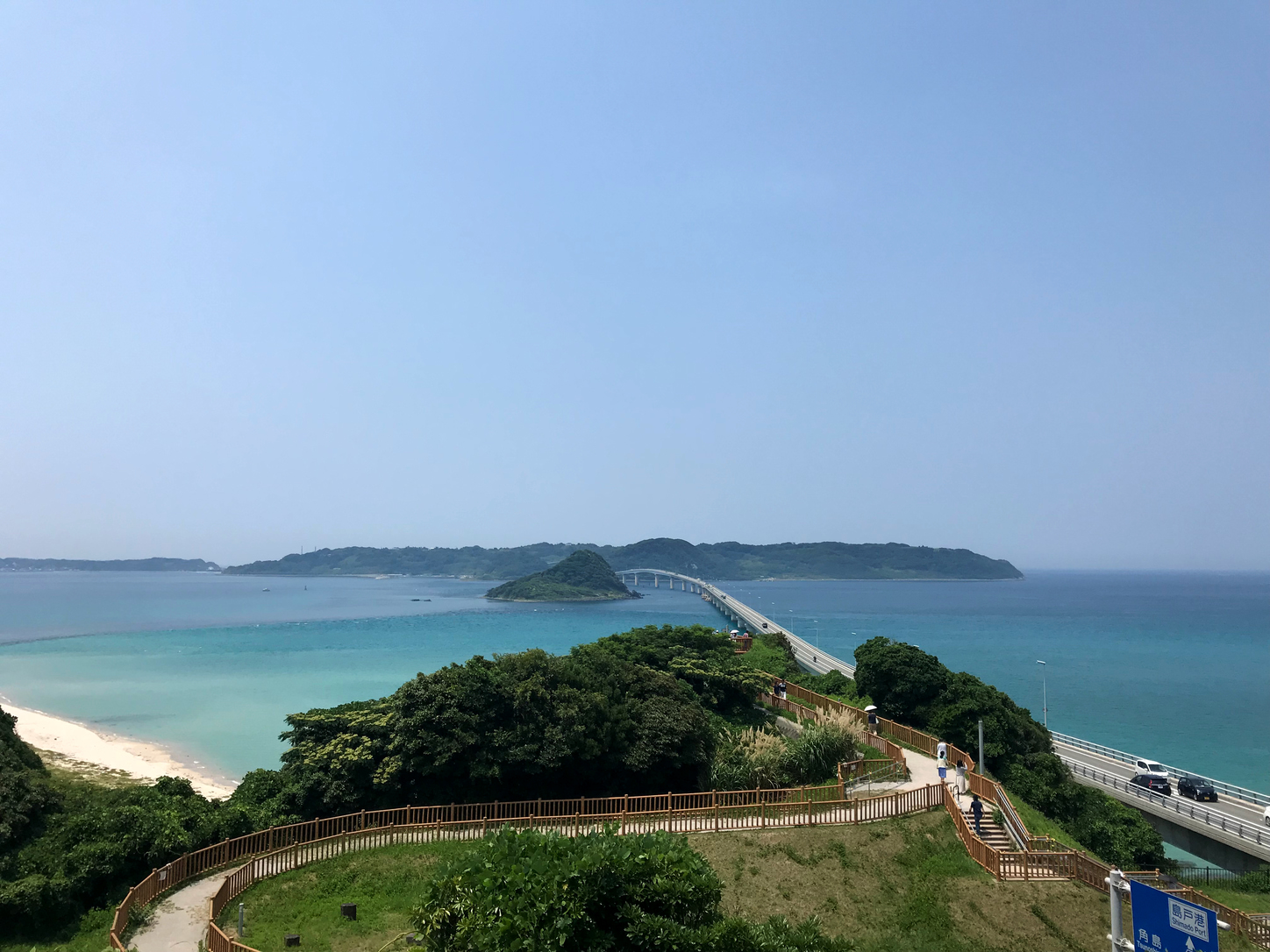
Tsunoshima Bridge
7. Yamaguchi Is Known for Its Bridges
For fans of bridges, Yamaguchi is worth a visit. Along with Meganebashi in Nagasaki and Tokyo’s Nihonbashi, Kintai Bridge in Iwakuni is considered one of the Nihon Sanmeikyo (three famous bridges of Japan). Built in 1673 and declared a national treasure in 1922, it stood for almost three centuries before being destroyed by a typhoon in 1950. A reconstruction of the adored wooden arched structure was then completed in 1953. Today, it’s one of the premier sightseeing spots in Yamaguchi. Another is Tsunoshima Bridge, which connects the scenic island of Tsunoshima with mainland Japan. Opened in 2000, it has boosted tourism on the island and become a tourist destination in itself. Known for its distinctive curved shape, several dramas have been filmed on the bridge and around it. It’s the second-longest bridge in Japan behind Akashi Kaikyo, which links Kobe with Awaji Island.
Related Posts
- 8 Must-see Tourist Spots Nobody Else is Visiting in Yamaguchi Prefecture
- 5 Alternatives to Kyoto’s Fushimi Inari Shrine
- 10 Prefectures Japanese People Never Visit That You Totally Should

Tara: A Mystical Oceanside Town Where You Can Feel the Moon’s Power

Den Fujita — Japan’s McDonald’s Man | Spotlight

How Kagura Dance Influenced the Story of Demon Slayer

The 6 Best Retro Onsen and Sento in Tokyo

Super Delivery International: Bringing Japan to Your Door

Stay in Style at DoubleTree by Hilton Kyoto Station

A Culinary Wonderland in Hyogo Prefecture

Bringing the Spirit of Fukuoka to Tokyo
Top Things to Do in Yamaguchi
Things to do in yamaguchi, explore popular experiences, tours in and around yamaguchi.

Yamaguchi Custom Half Day Tour

Yamaguchi Custom Full Day Tour

Shimonoseki & Moji Port Full-Day Private Trip with Government-Licensed Guide

Kitakyushu Half-Day Private Trip with Government-Licensed Guide

Guided Cycling tour in Hagi with Sake Brewery Visit

Half-Day Kokura Walking Tour including TOTO Museum

Kitakyushu Full-Day Private Trip with Government-Licensed Guide

Charter Bus 2 days Tour "Gods gather at Izumo Taisha" from Kokura

Private Sightseeing Tour Visit to Kitakyushu with Licensed Guide

Aganoyaki Pottery Activity in Fukuchi Machi
Top attractions in yamaguchi.

Other Top Attractions around Yamaguchi
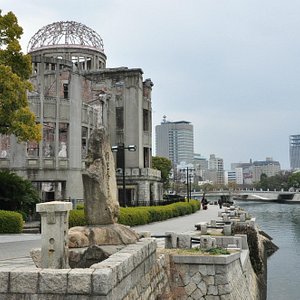
What travelers are saying

- Ruriko Temple Five-Story Pagoda
- Yamaguchi Xavier Memorial Church
- Rurikoji Temple
- Jyoei Temple Sesshu Garden
- Chomonkyo Gorge
- Shinyamaguchi Station North And South Passage
- Kameyama Park

- About Yamaguchi City
- A strategic base of the Meiji Restoration
- Recommendation Sightseeing Spots
- Experience / Local Specialties / Gourmet foods
- Hot springs / Accommodations
- Tourist Information Center
- Sightseeing spots around Yamaguchi city

Must See Sightseeing Spots

One of Japan’s 3 most outstanding five-storied pagodas is in Yamaguchi City
the other two belonging to Horyuji temple (Nara) and Daigoji temple (Kyoto). Rurikōji temple’s pagoda, designated a National Treasure of Japan, is one of Yamaguchi City main landmarks.
One of the earliest Christian communities in Japan was founded in Yamaguchi City
after feudal lord Ōuchi Yoshitaka allowed Spanish Jesuit St. Francis Xavier to establish his mission in 1551. Today, St. Francis Xavier Memorial Church commemorates this historical fact.

Yamaguchi City boasts a Japanese garden from the 15th Century by one of the greatest artists in Japanese history..
Sesshū Tōyō, regarded as Japan’s greatest master of ink painting, spent several years of his life in Yamaguchi City and designed Joeji temple’s garden.

Useful information


IMAGES
COMMENTS
6112.30 km². Yamaguchi-ken. Fukuoka. Ruriko Temple Kintai-kyo. Things to Do in Yamaguchi. Discover the top things to do in Yamaguchi, known as the Kyoto of the West. Discover the Kintaikyo bridge, the Akiyoshidai plateau and Akiyoshido caves, Motonotsumi Inari Shrine, Beppu Benten Pond, the Kaikyokan aquarium, Tsunoshima area or pottery in Hagi.
1. Tsunoshima Ohashi. This 1,780 meters long bridge connects the mainland of Yamaguchi prefecture and Tsunoshima island. It was completed in 2000 and it takes about only 3 minutes to get to the other island by car but you can cross the bridge also by walking or bicycle. On the mainland side, there is a park beside the bridge, and you can take a ...
2. Easy trail to get close to nature. If you are in Yamaguchi area and have some time to spare, Chomonkyo Gorge can be a good option to explore if weather is good. The only public transport access I could find was single coach local train (JR) service leaving from Yamaguchi city towards Masuda with a frequency of 90 min.
Things to Do in Yamaguchi Prefecture, Chugoku: See Tripadvisor's 41,504 traveler reviews and photos of Yamaguchi Prefecture tourist attractions. Find what to do today or anytime in May. We have reviews of the best places to see in Yamaguchi Prefecture. Visit top-rated & must-see attractions.
Yamaguchi Prefecture. Intro. Attractions. Yamaguchi Prefecture (山口県, Yamaguchi-ken) is the westernmost prefecture on Honshu Island and is part of the Chugoku Region. The prefectural capital is Yamaguchi City. Yamaguchi, then known as Choshu, played a leading role in overthrowing the shogunate and bringing Japan's feudal era to an end.
Even though it recently made our list of top 10 prefectures people are least likely to visit, Yamaguchi Prefecture offers a surprising amount of sightseeing spots and tourist destinations worth checking out. Located at the southwestern tip of Honshu, Yamaguchi is the last stop west before reaching the island of Kyushu, which makes it easy to overlook.
As you traverse this path, the rhythmic sounds of the waves and the serene ambiance elevate the experience, making it a must-visit spot in Yamaguchi. 3. Rurikoji Temple . At the heart of Yamaguchi City lies the serene Rurikoji Temple, home to one of Japan's National Treasures—the Five-Storied Pagoda. Standing majestically amidst the lush ...
Yamaguchi has many charming spots, including scenic views, culturally significant historical buildings, and hot springs. Whether it's an excursion around famous places like Tsunoshima Bridge or a taste of Shimonoseki's blowfish, read on to learn about exciting activities to enjoy while traveling here!
Yamaguchi Prefecture is a little-visited corner of Honshu which offers a host of sites. From the old samurai neighborhoods of Hagi and Shimonoseki to the gardens and onsen of Yamaguchi, there's no shortage of things to explore. ... Nearby Yuda Onsen is the perfect spot to spend an evening in Yamaguchi. Day 2 - Yuda Onsen and Hagi.
Yamaguchi is a prefecture located in the westernmost part of Japan's main island, Honshu, Chugoku Region.Known for its natural beauty, rich history, and cultural significance, Yamaguchi is a popular destination for both domestic and international tourists. From stunning shrines and castles to breathtaking landscapes and modern museums, there is no shortage of things to do in Yamaguchi.
This Yamaguchi tourist spot has a special place in my heart, since I first came here a decade ago during my first trip to Japan, on a day trip from nearby Hiroshima. Built in 1673, this historical bridge is Japan's largest and most impressive surviving wooden hashi , which looks especially beautiful amid the sakura of spring but is gorgeous ...
Kikkou Park is a popular hanami (flower viewing) spot during the cherry blossom season and momiji (Japanese maples) viewing destination during the autumn season. Location: Iwakuni, Yamaguchi 741-0062, Japan. Opening Hours: Bridge 24/7; Ticket Booth 8:00 AM - 6:00 PM (Summer), 8:00 AM - 5:00 PM (Winter).
5-50 Karatochō, 唐戸町 Shimonoseki-shi, Yamaguchi-ken 750-0005. Fugu is prominent at the Karato Market ... Even if you're not a history buff, the park is a scenic spot to simply watch ships come and go throughout the Kanmon Strait. 1-1 Mimosusogawacho, Shimonoseki, Yamaguchi 751-0813.
Hotels. Yamaguchi (山口) is a pleasant and friendly city in Western Honshu founded by the Ouchi family in the 14th century. It is now the capital of Yamaguchi Prefecture, a region formerly known as the Nagato (Choshu) and Suo provinces. As the seat of the powerful Ouchi lords, Yamaguchi grew to culturally rival the war torn capital of Kyoto ...
Yamaguchi. Yamaguchi is surrounded by ocean, mountains and rivers and is characterized by its climate, which is comfortable throughout the year. Its natural scenery, which includes some 1,500 kilometers of coastline, is a cut above. The prefecture has Kintaikyo Bridge, one of the three most famous bridges in Japan, and other tourist attractions ...
Kintaikyo Bridge. Kintaikyo Bridge is a wooden arch bridge installed at the Nishiki River in Iwakuni City. On the Nishiki River (width about 200 meters), four foundations are built. Five wooden arch bridges are installed on these foundations. The bridge is about 5 meters wide and the total length is 193.3 meters.
It takes 2 hours to reach Yamaguchi from Osaka, around 40 minutes from Fukuoka, and around 4.5 hours from Tokyo. All trips are fully covered by the JR pass. ANA and JAL operate several flights between Yamaguchi Ube Airport and Tokyo's Haneda Airport, and the flight duration is around 100 minutes. Recommended sightseeing spots in Yamaguchi
A reconstruction of the adored wooden arched structure was then completed in 1953. Today, it's one of the premier sightseeing spots in Yamaguchi. Another is Tsunoshima Bridge, which connects the scenic island of Tsunoshima with mainland Japan. Opened in 2000, it has boosted tourism on the island and become a tourist destination in itself.
Must-see in Yamaguchi. Located in Kozan Park, Rurikoji Temple is known for its 5 stories pagoda. But actually the temple itself is also very interesting. The graveyard of Mori Family belongs to this temple, and along with "uguisubari" paved way it is another must-see. Some people recommended the museum of this temple.
Super Hotel Yamaguchi Yudaonsen. 87. from $69/night. Green Rich Hotel Yamaguchi Yuda-Onsen. 87. from $61/night. Umenoya. 70. from $115/night.
Yamaguchi Tourism & Convention Association JR Yamaguchi station, 2F (2-1 Sodayu-cho, Yamaguchi City, Yamaguchi prefecture) TEL. +81 83 933 0088 FAX.+81 83 9330089 E-mail: [email protected]
Yamaguchi Prefecture (山口県, Yamaguchi-ken) is a prefecture of Japan located in the Chūgoku region of Honshu. Yamaguchi Prefecture has a population of 1,377,631 (1 February 2018) and has a geographic area of 6,112 km 2 (2,359 sq mi).Yamaguchi Prefecture borders Shimane Prefecture to the north and Hiroshima Prefecture to the northeast.. Yamaguchi is the capital and Shimonoseki is the ...
Exploring the peaceful and beautiful tourist spot in Yamaguchi Prefecture.